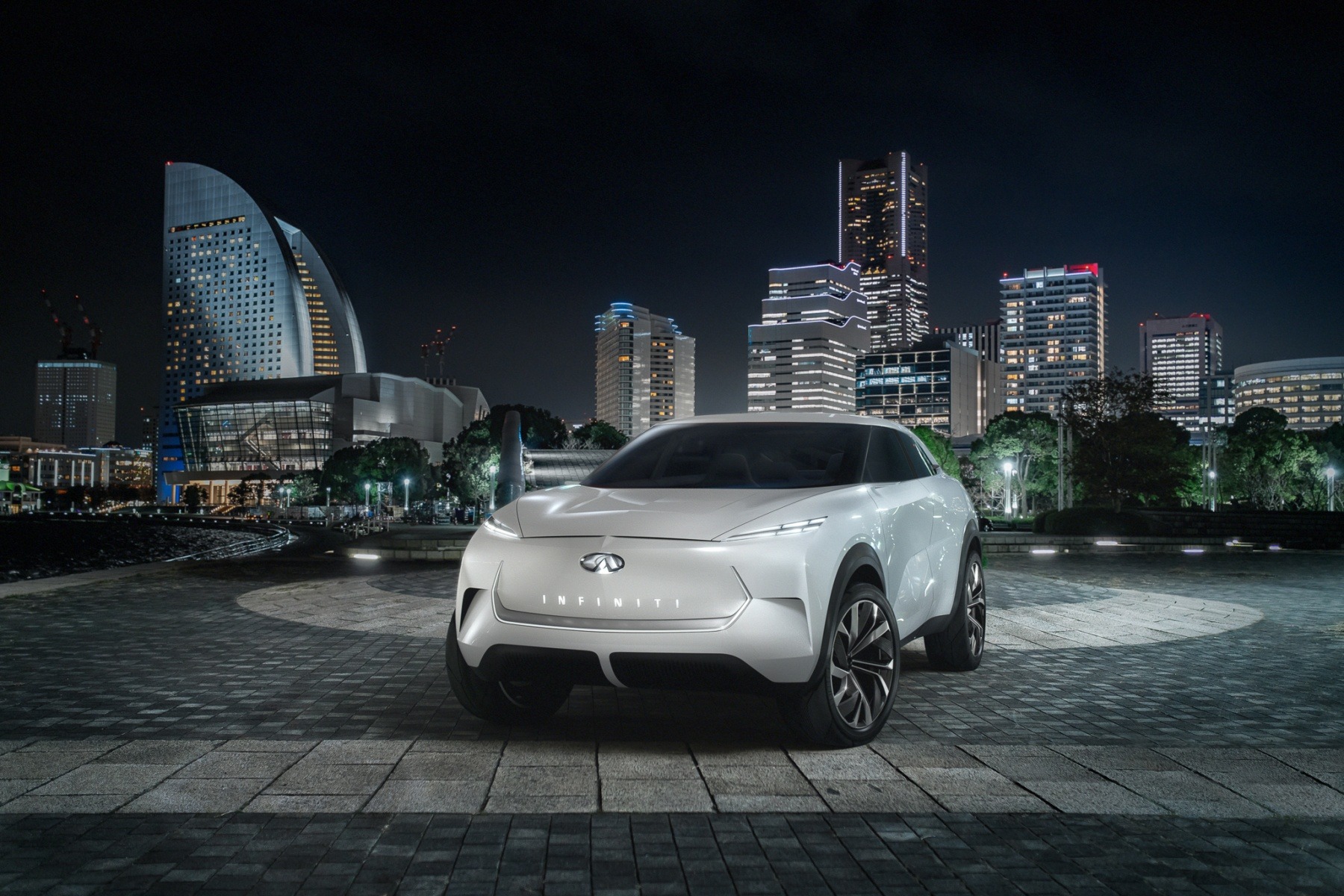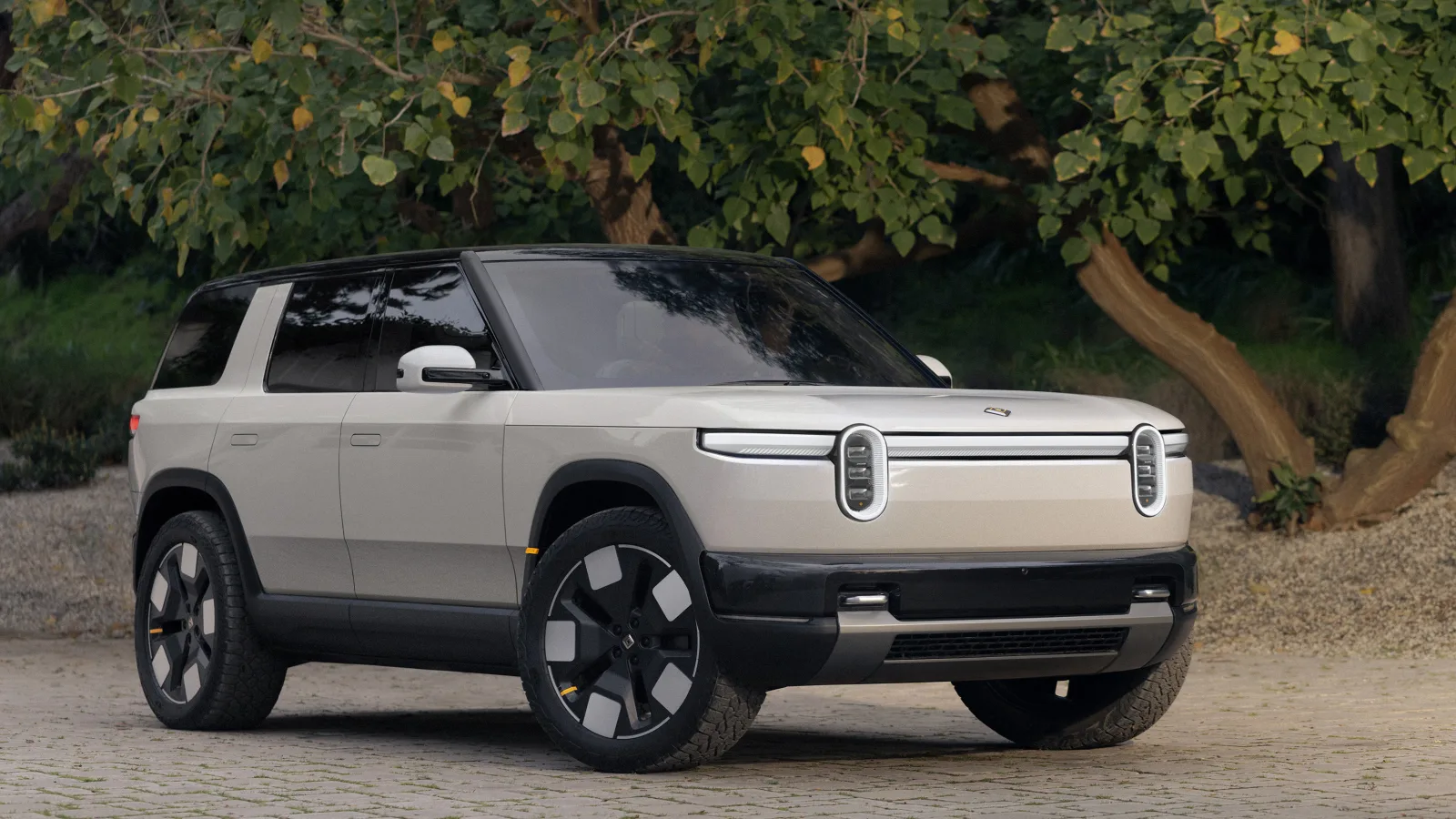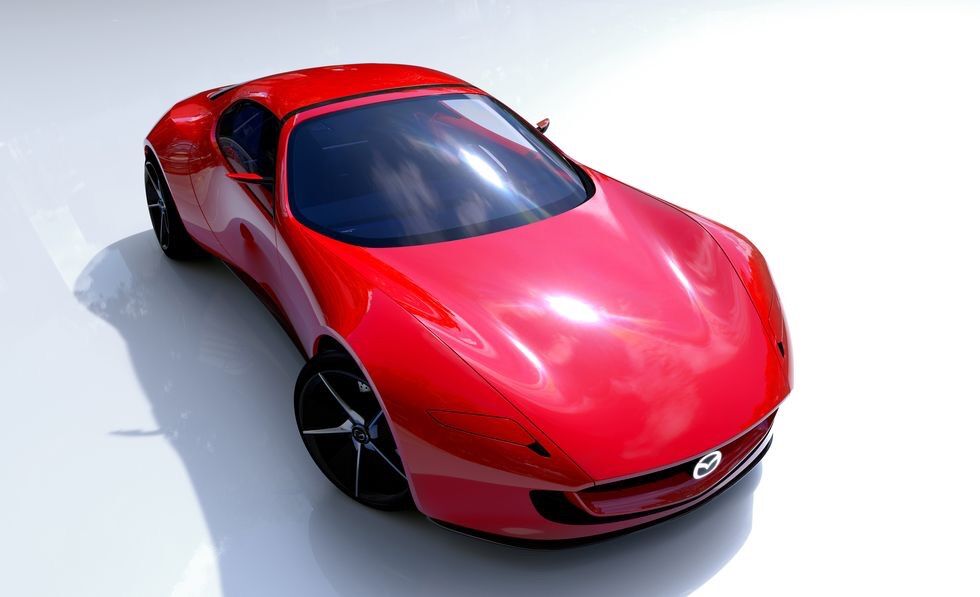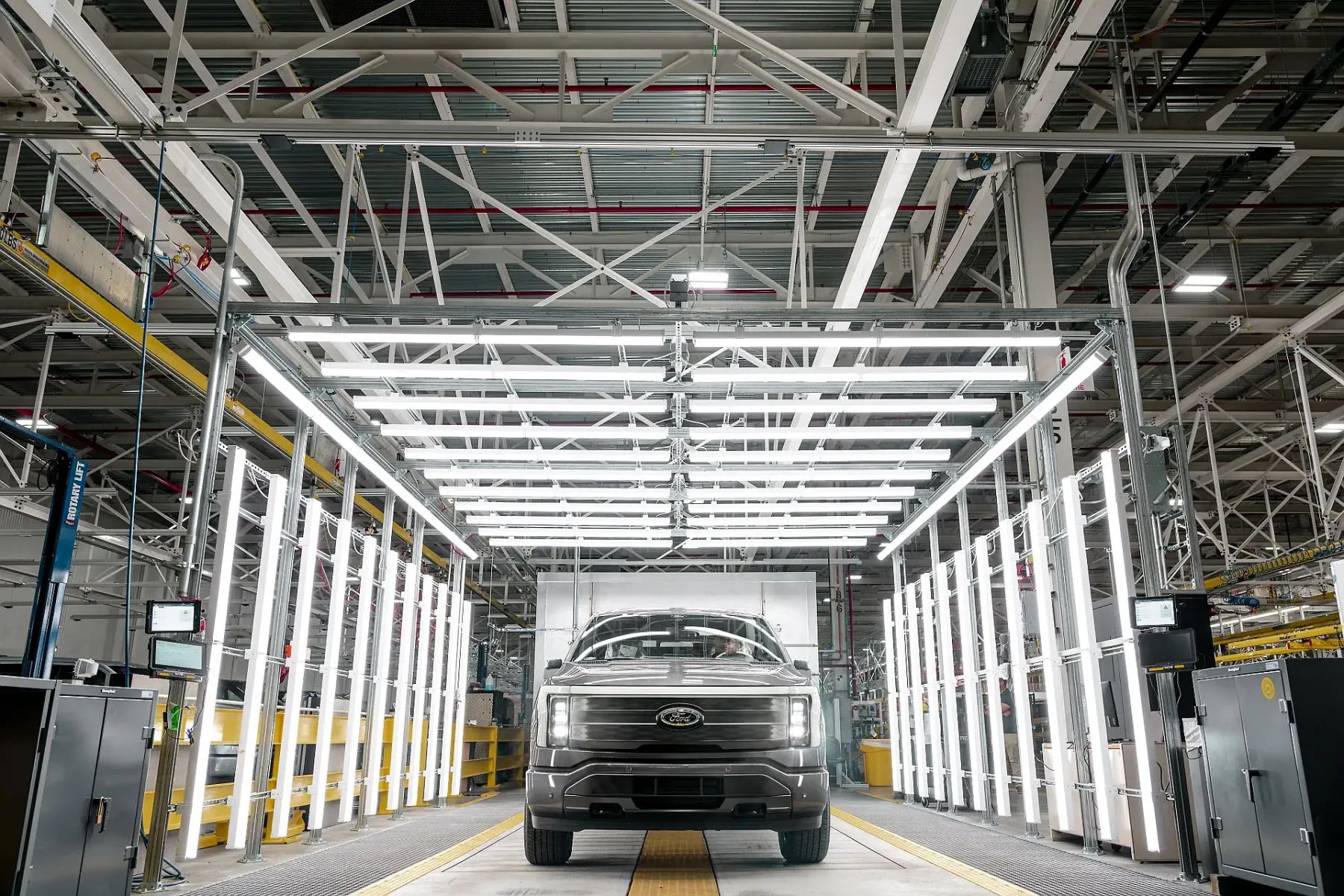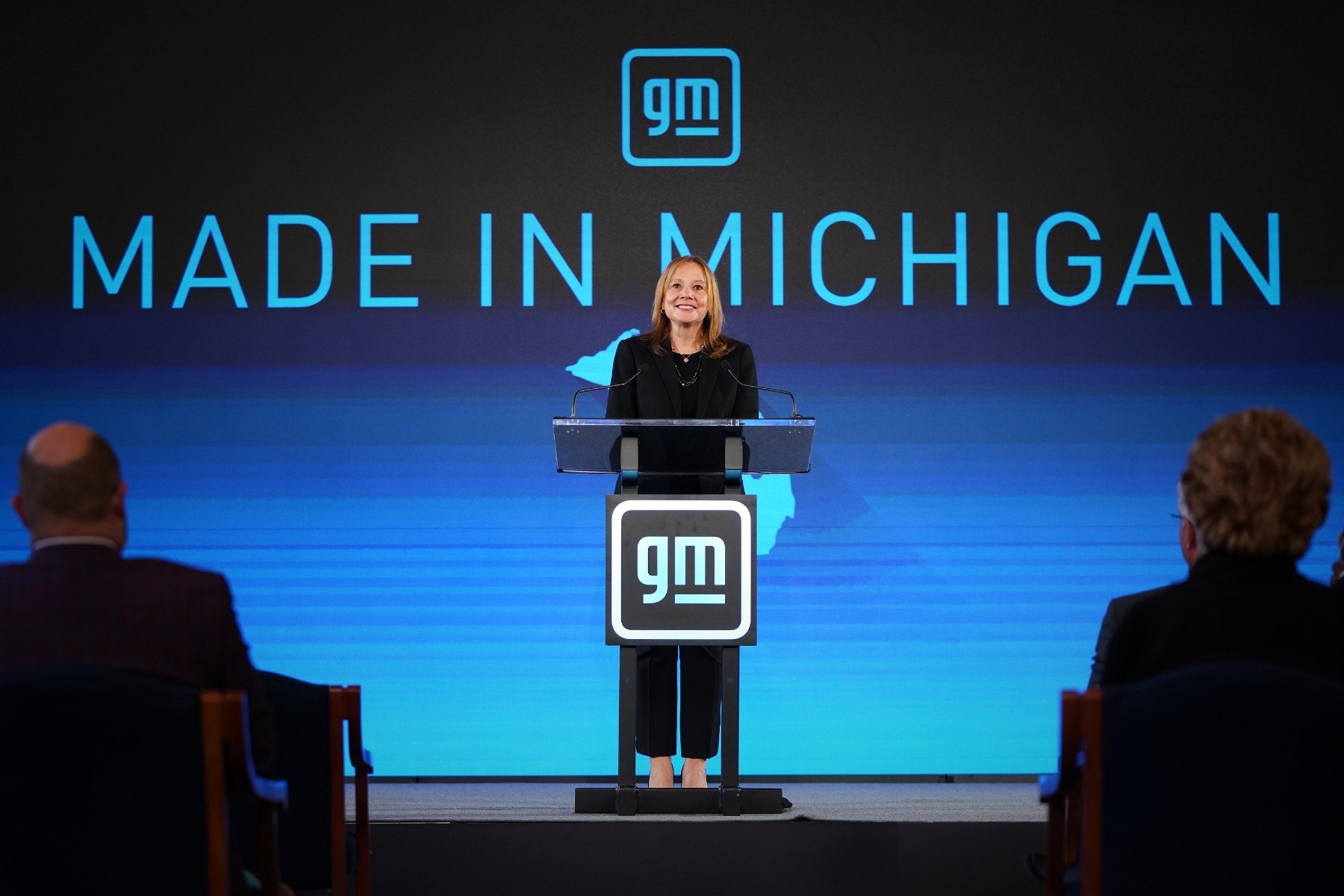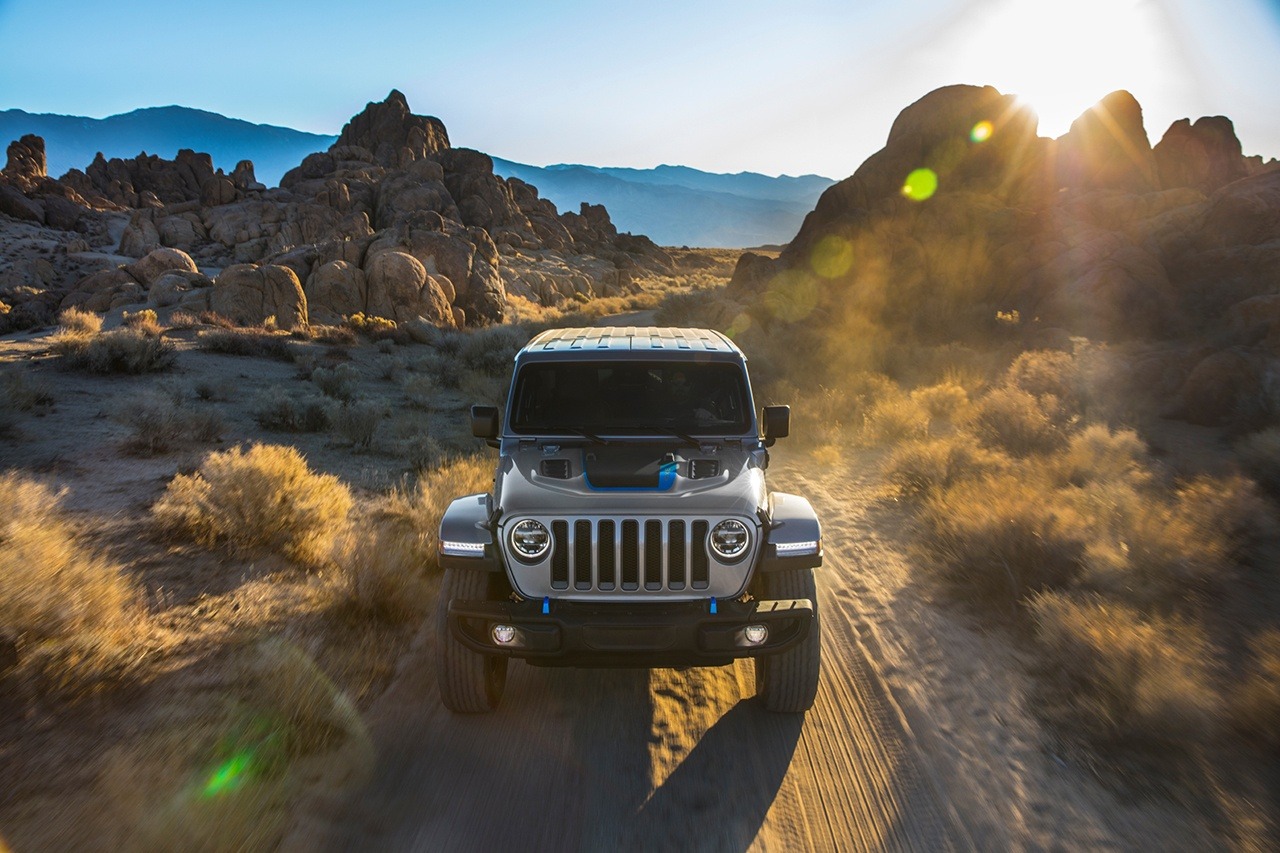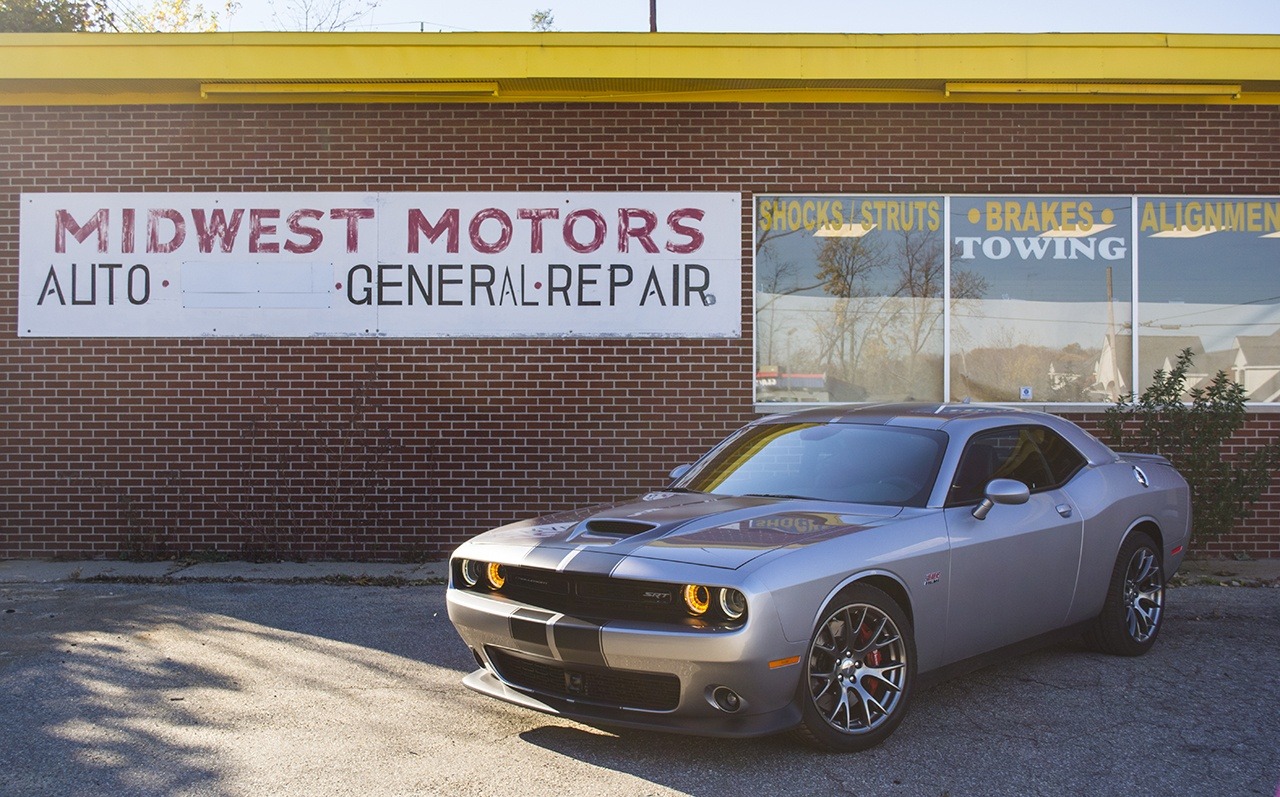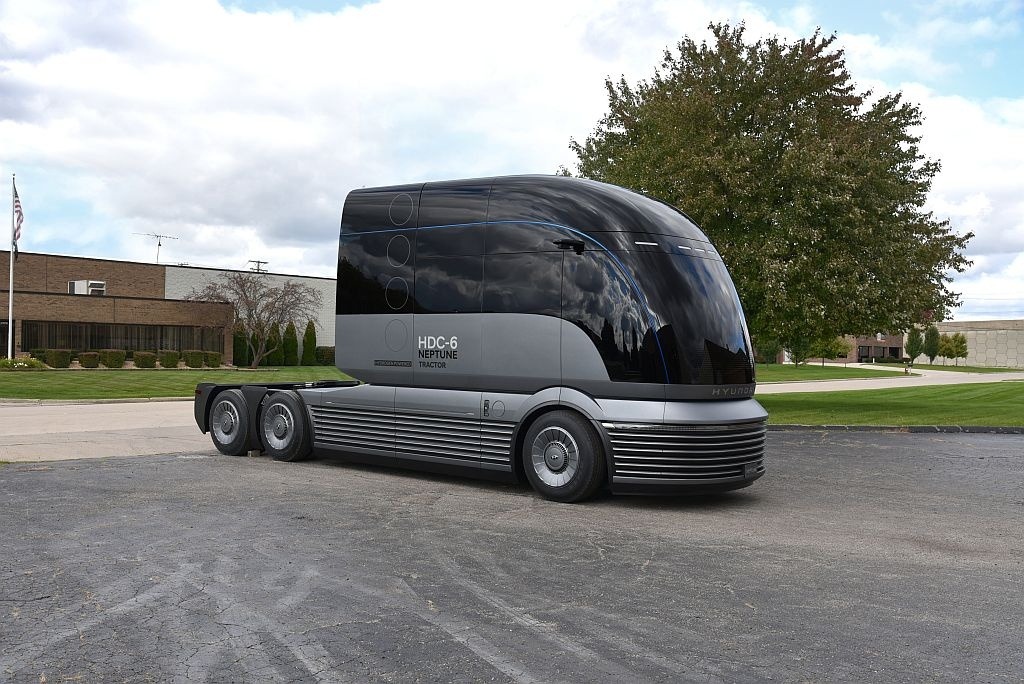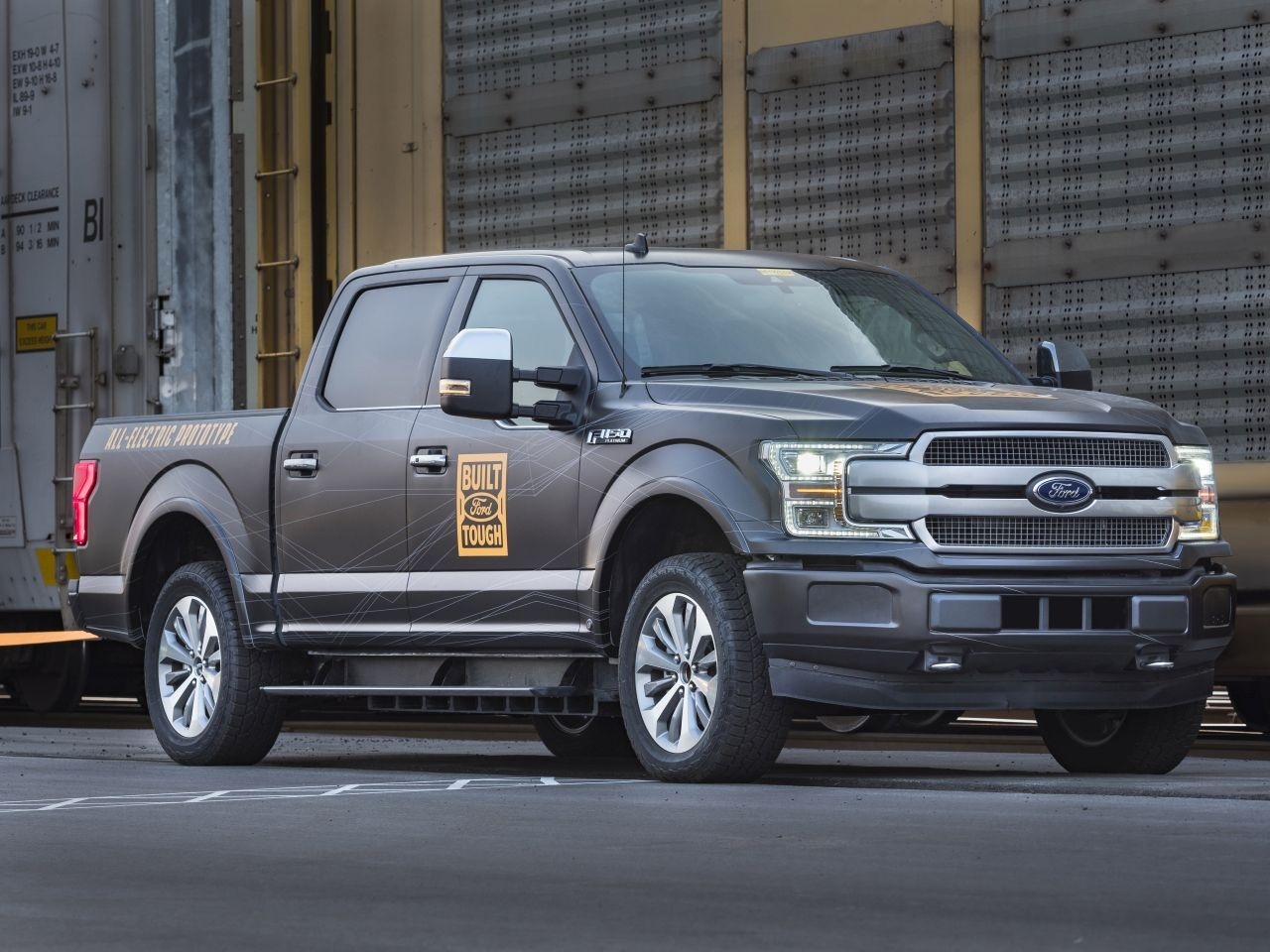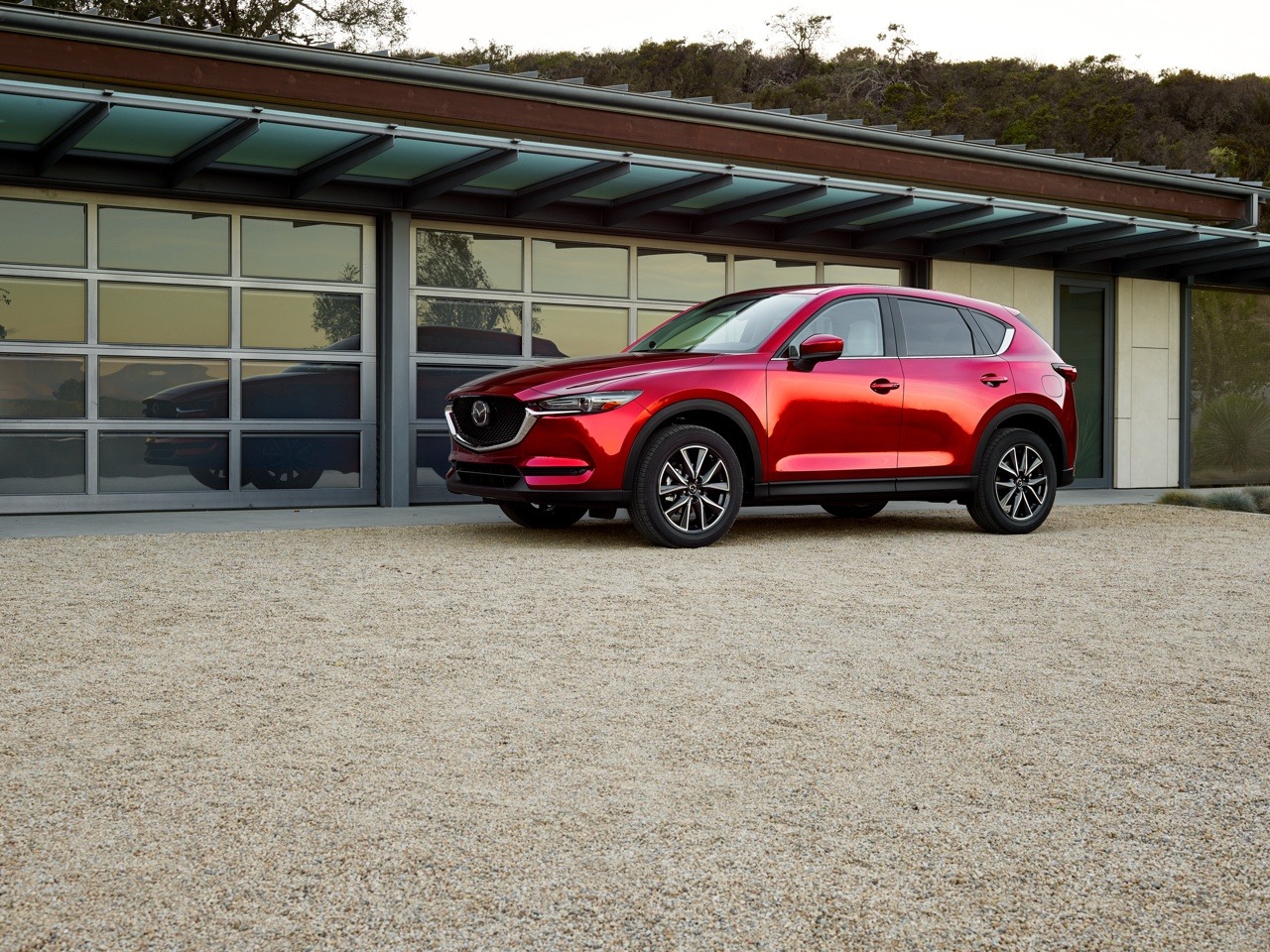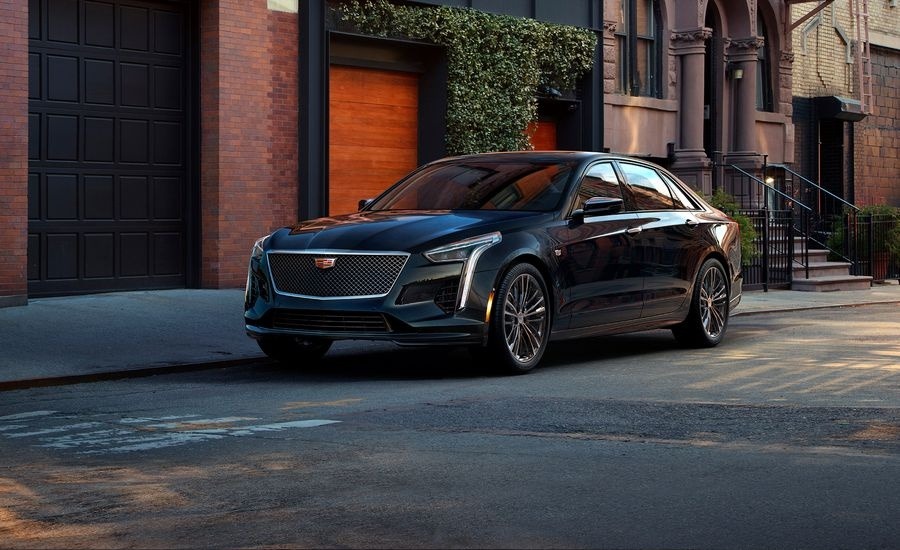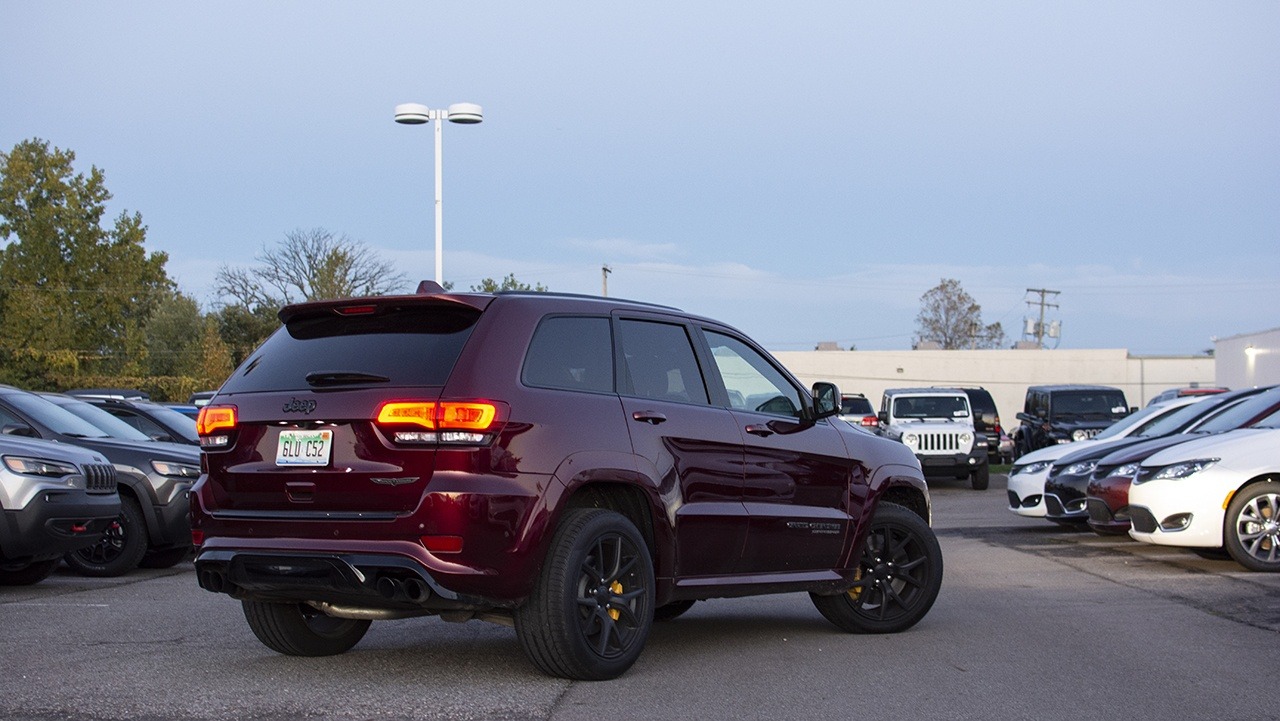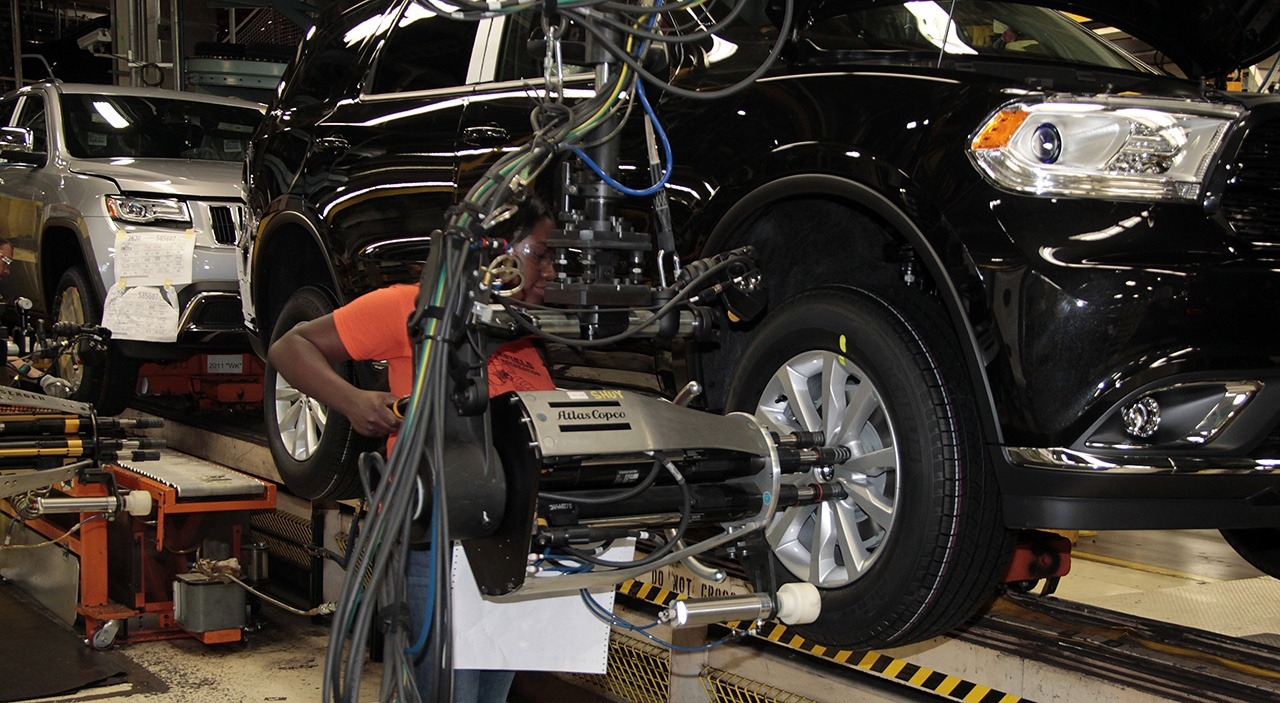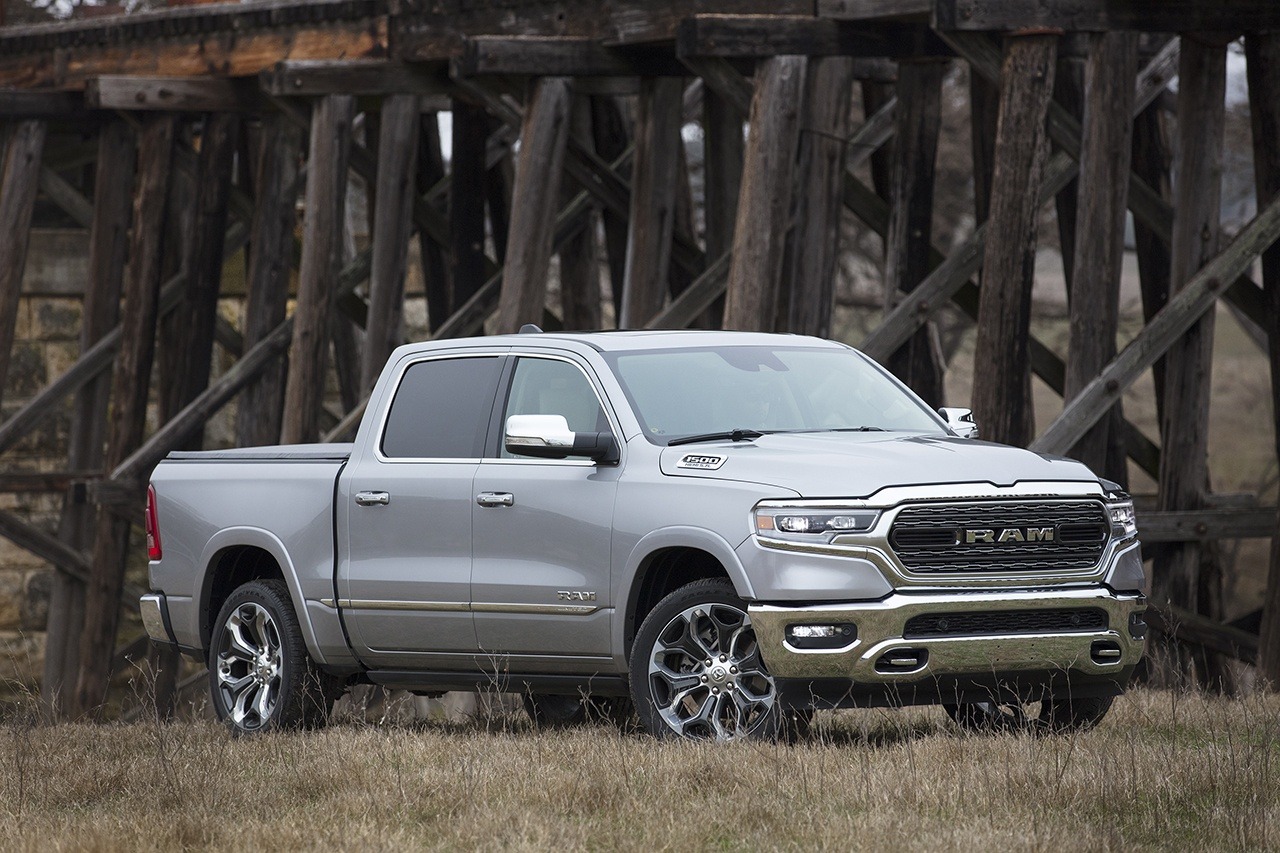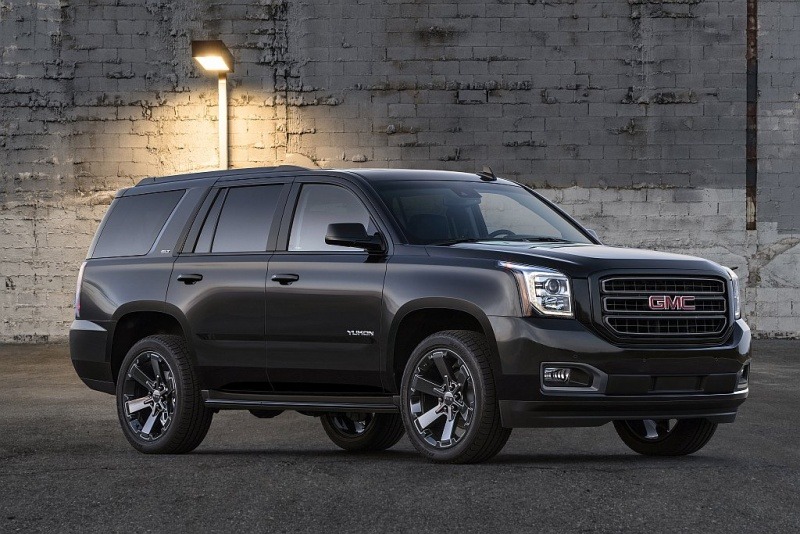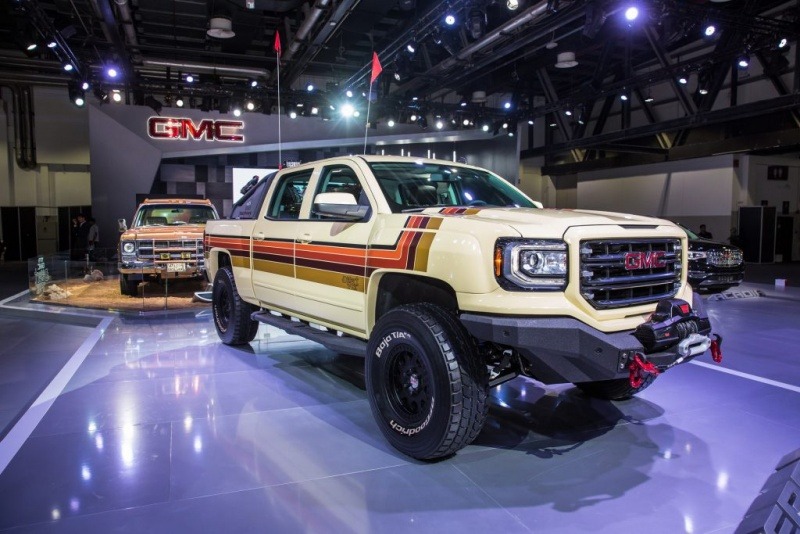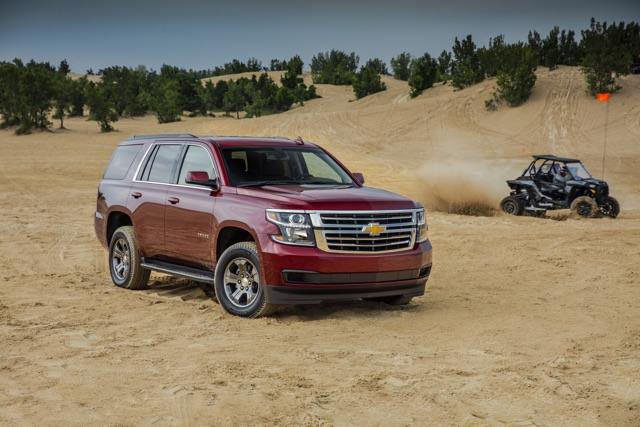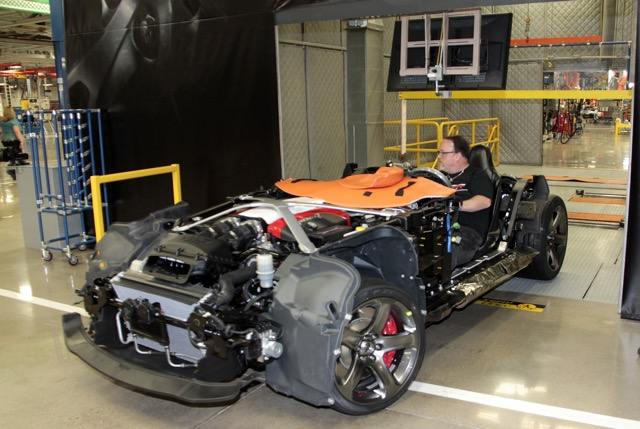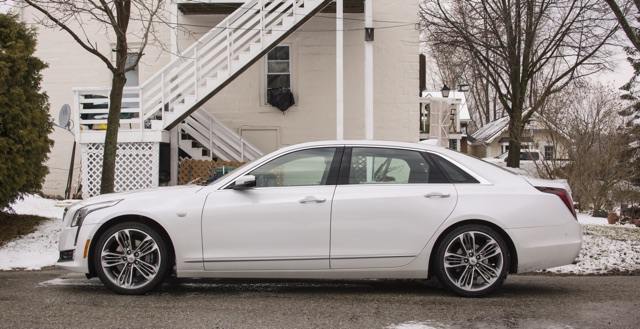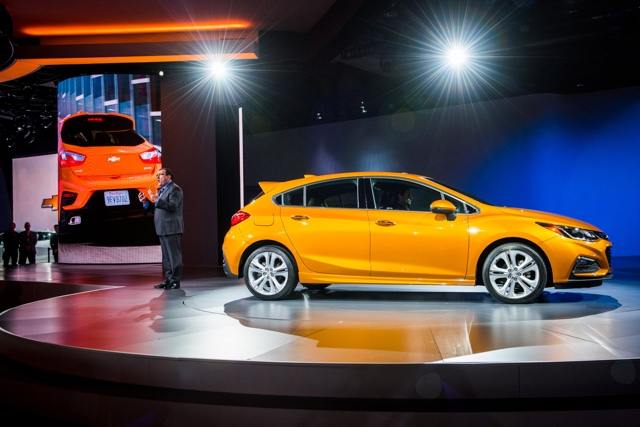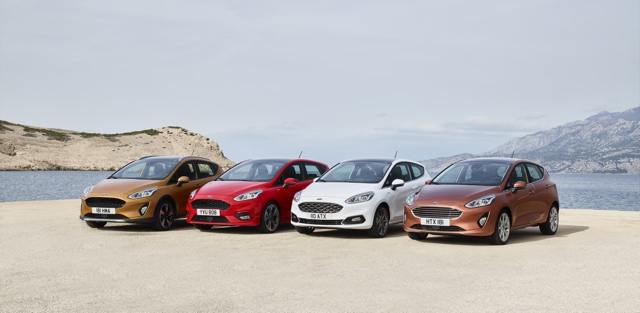Leaderboard
Popular Content
Showing content with the highest reputation since 12/02/2009 in Articles
-
The news came during dinner last Monday. My mother asked if I would be able to take any time off of work, and I said that I might be able to if the circumstances were considered important. She revealed that my grandfather, her dad passed away that afternoon. It wasn’t from COVID-19, but other complications that had put in him the hospital since early June. After dinner, I needed some time and space to begin processing the news. So I grabbed the keys to my car and went for a drive. The past few months have been difficult for all of us in varying degrees with COVID-19. Many places going on lockdown have caused massive disruptions to how we work, travel, and interact with the world. I have been hunkered down at home since mid-March when my employer announced our office would be closed for the time being, and we would be working from home. During the first month or so, I had put a moratorium on driving except for essential places such as the grocery store or pharmacy. Isolating to prevent catching and/or spreading the virus took priority over going for a drive. But after a month of just being in a house with family and doing the same things over and over, I was going stir crazy. I realized that I needed some space to not only prevent myself from losing it, but to give me some room to think about everything floating in my mind. Going for daily walks either by myself or with the dog helped a bit. But I still felt like I needed some more space, more time to myself. Back in 2015, I wrote an Afterthoughts column titled The Escape Machine. I talked about how the car for some of us was a way to escape the world for a time. You could go anywhere depending on how much fuel was in the tank and give the space needed to clear or process whatever was on the mind. I ended the piece with these two lines, That decision for me came in late April/early May. I would go for long drives, provided that I would wear a mask if I got out to go for a walk. Going for the first drive in over a month was a bit of revelation. Turing the steering wheel, pressing down on the accelerator and brake; and watching the world go past in blur made me realize how much I missed this. This seems like a trope, but you have a newfound appreciation for something you haven’t done in some time. This also gave me the space to begin piecing together various thoughts such as how do I keep myself from falling into the endless pit of despair, what can I do to keep myself from feeling bored, and do I dive back into automotive writing. I didn’t know how important this would become in the coming weeks as COVID-19 cases increased, the economy would come to a screeching halt; and the murder of George Floyd and the ensuing fallout. Whenever my mind would become overwhelmed or I just get too frustrated, I would hop into my vehicle and go somewhere. It didn’t matter where or how long, just as long as I had some space to think or to calm down, it would be enough. Back to last Monday night. As I drove, there was a lot I needed to process in terms of grief and wondering what would happen next: Would there be a funeral, what precautions should I take, will it be a long ceremony, and so on. I didn’t come up with any clear answers to these questions, but having that time to start putting things into perspective helped. It was on the way back that another thought popped into my head. At the moment, we’re all trying to find some sense of normal in a world that isn’t. For auto enthusiasts, that is to drive as it gives some sort of control. It may be a small thing, but they provide some much-needed comfort. Like many of us, I don’t what the rest of year holds if it continues to be a landfill fire or somehow begins to contain itself. But I do know that I’ll likely be taking more drives, whether that be my car or one that I’m reviewing. Having something that provides a sense of normal is welcomed.6 points
-
In a series of tweets today, Trump announced that General Motors will be selling their Lordstown plant to electric truck maker Workhorse. Lordstown was shut down in March of this year and formerly built the Chevrolet Cruze. The details of the plant sale have not yet been announced. Workhorse is a Cincinnati based company who builds EV pickups with a built in range extender, similar in concept to the Chevrolet Volt. Workhorse's sole model is the W-15, capable of driving up to 80 miles on a charge before a gasoline powered range extender kicks in. It uses two motors to provide all-wheel drive. The only configuration available is an extended cab with 6.5 foot bed. They can tow up to 5,000 lbs and have a payload of 2,200 lbs. Pricing starts at $54,500 before tax credits. Workhorse intends to start production for the retail market sometime in 2019. Fleet orders have already started. GM is not denying any of the information in the tweets from Trump. Update: General Motors has confirmed that talks are ongoing.4 points
-
During GM's earnings call today, GM announced that a new, highly flexible, EV architecture is on the way and that Cadillac will be at the center of the release. The architecture, called BEV3, is said to be highly flexible, being able to be configured from small sedans to large crossover formats, and front-wheel, rear-wheel, or all-wheel drive configurations. GM is targeting a sweet spot of 300 mile in range according to GM CEO Mary Barra. GM is going to continue its development of autonomous technology. It currently offers SuperCruise automated driving on the flagship CT6 sedan and plans to expand that technology across the Cadillac lineup. Late last year, GM announced that it would be canceling two of its plug-in hybrid vehicles in a slew of cutbacks in the sedan segment.4 points
-
The common thought today is that the sedan market in the U.S. is dying. If that's the case, the 2020 Toyota Corolla hasn't given any reasons that it should stick around. While styling could be considered bolder over the prior model, it is still bland in person. Front and rear facias nearly mirror each other in a Studebaker-like "is it coming or going?" way. The styling of the interior hasn't changed in any significant way though the materials are somewhat improved. Mediocre engine choices, unlike the 2020 Kia Soul, leave little to be excited over. The addition of a hybrid option is interesting, but only for people who think the Prius is too fugly to drive, otherwise, they would just buy the real thing. The Corolla is the best selling car nameplate in history, but this latest version leaves little reason for that record to continue. In a tough small sedan market, it is going to take more than just more of the same to move the needle. Dull, conventional, boring..... that's my opinion of the 2020 Corolla4 points
-
“I can’t believe we’re going to make it” This thought passed through my head as I brought the vehicle to a stop on an off-ramp. Somehow, I was able to travel from my house in the outskirts of Metro Detroit to my hometown of Midland, Michigan on just a quarter-tank of gas. That may not seem like a huge accomplishment except when you look at the vehicle I was driving, the 707 horsepower Jeep Grand Cherokee Trackhawk. Originally, I wasn’t planning on traveling to Midland in the Trackhawk. Earlier in the week, I had driven it down to an event in Ann Arbor to drive a couple of Mitsubishi vehicles. The trip revealed the thirst of the supercharged 6.2L V8 by using up a third of the gas tank. My plan for the rest of the time would be running errands and some small trips to get a feel of the vehicle. Over the weekend, I would get some work done and take photos. But that would be thrown out the window when my brother brought up the idea of heading to the Northwood Auto Show in Midland. The Northwood show takes place on the grounds of Northwood University. It is a unique auto show as the students of the school run all of the aspects of the show ranging from the planning to being the product specialists for each brand. This is part of their automotive and aftermarket degree programs. When I lived in Midland, the show was something I looked forward to every year as I would get the chance to sit in various new vehicles. Also, I would come home with a big bag of brochures that I would be reading throughout the year, letting all of the information seep into my brain. This may explain why I became so crazy about vehicles. It had been a few years since I last attended the show due to various factors such as not knowing when it would be put on. But I was surprised that it would be taking place around the same time I would have the Trackhawk. At first, I was hesitant to go. But then, my brother said the magic words, “I would be willing to pay for gas. I want to go for a ride in the Trackhawk.” Once those words came out of his mouth, I had decided that it would be a good idea to go to Northwood. But something else crept into my head. Would it be possible to travel to the show on a limited amount of gas? I decided to put it to the test. Saturday morning, my brother and I got into the Trackhawk to head towards Midland. Starting up the vehicle, the supercharged V8 thundered to life and the gas gauge rose to just a hair over a quarter of a tank. My plan was to put the vehicle into Eco mode and use the radar cruise control to travel at a steady speed of 75 mph. The instant fuel economy screen would be up in the instrument cluster to let me monitor and make adjustments as needed. I would stop for gas when the distance to empty notification reached 15 miles or under. As I began to pull away from the house, my brother noticed that the vehicle was in Eco mode. “I think its more of a suggestion than an actual mode,” I said when he brought it up. To demonstrate what I meant, I pushed the throttle to almost the floor on an on-ramp. The V8 engine roared into life with the supercharged screeching. Even in Eco, it is quite shocking how fast this brick picks up speed. “I get what you mean by this being a suggestion,” my brother said to me as we merged onto I-75. The trip from my house to Northwood is about 90 miles. The trip computer told me that I would be out of gas in 90 miles. Cue “Challenge Accepted” picture. The first 15 to 20 miles of the trip was a bit nerve-racking. Watching the instant fuel economy fluctuate between 10 to 15 as the vehicle would slow down and accelerate as other vehicles came into its path. I began to worry about my goal of reaching Midland was all for naught. But as we traveled further on I-75, my confidence began to grow. The engine settled down and cruise at just a hair above 2,000 rpms. The fuel gauge was steadily going down, but my average fuel economy was rising. It wasn’t till we passed the small town of Auburn, that car flashed its low fuel light. The vehicle said it had 30 miles till it reached empty. I knew that Midland was only ten or so miles away and decided to push it. The gauge continued to fall as did the distance to empty. I held my breath until we got onto the off-ramp. Just a few hundred feet away was a gas station. We had done it with just 20 miles to spare. According to the car, I had an average of 15.1 mpg for the trip. I know there will be someone who will be saying: “Why did you this? Aren’t you missing the point of this vehicle?!” No, I know the point of the Grand Cherokee Trackhawk is to go stupid fast. Defy the laws of physics. But that is what every review (including mine that will be coming in the near future) goes on about. I wanted to do something a bit different and look at it from a different angle. I think my brother said it best about this whole experience as I got back into the car after getting some gas, “I wasn’t expecting that to happen.”4 points
-
Ford is upgrading the Mustang Mach-E for 2024 with a longer range and faster charging. The entire lineup gets an upgraded rear motor that boosts range to 320 EPA-rated miles with the extended range battery and rear wheel drive. While that number is up 20 miles from the 300-mile range of the 2021 Mach-E extended range, Ford had already made a change to the batteries in 2023 that earned RWD extended-range models a 310-mile rating. Standard-range rear-wheel drive models also see a 20-mile improvement over the original 2021 Mach-E. All-wheel drive models see a boost in range of 10 miles. The new rear motor, developed by Ford, drops weight and improves torque. The performance improvements allow the Mustang Mach-E GT Performance to bolt to 60 in just 3.3 seconds with a quarter-mile time of 11.8 seconds at 114 mph. Ford claims this makes that trim of the Mach-E faster than a Tesla Model-T Performance and a Porsche Macan 4 Electric. Speaking of the GT, the GT Performance trim is no longer a stand-alone model. In prior years, Ford offered the Mach-E in a standard GT and a GT Performance trim. Instead, the Performance Upgrade package is a software update that can be purchased with the car or purchased and enabled seamlessly later. Previously, the GT Performance trim only boosted torque by 34 lb-ft, but this new Performance Upgrade package boosts torque by a full 100 lb-ft. Previously, features only available on the GT Performance are now included in the GT trim and include Ford Performance front seats, MagneRide Damping system, and Brembo front brake calipers. The Performance Upgrade software back costs $995. Other improvements across the lineup are a simplified Infotainment system screen with new icons to make it easier to get to important information and a reconfigured settings screen because Ford said "users don't like to scroll". Wireless Android Auto and Wireless Apple CarPlay are still standard. Ford also improved the Fast charging speed on a DC charger. With the new updates, a standard range Mach-E will charge from 10% to 80% 5.7 minutes faster (32.2 minutes total) than the original, while an extended range battery improves charge speed by 8.8 minutes (36.2 minutes total). Ford recently joined the Tesla Supercharging network, which added 15,000 new chargers to the Ford BlueOval network. Charging with the Tesla network is as simple as plugging in, with billing handled directly through BlueOval. For now, the Mach-E comes equipped with a CCS charge port, so owners of the Mach-E will need a free adapter from Ford to use Tesla charging stations. Ford had recently dropped the price of the 2023 Ford Mustang Mach-E to just $39,895, but the 2024 model creeps up slightly to $39,995 for the Select RWD standard range. The RWD Premium starts at $43,495, and the GT starts at $53,995. The new Mustang Mach-E Rally goes on sale for $59,995. All models add a $1,895 delivery charge.3 points
-
The hottest and most competitive segment in the auto industry is the compact crossover, with every mainstream brand fielding at least one or more entries. Fresh off updating the Trax, Trailblazer, Blazer, and Traverse in the last two years, Chevy is circling back to update its bread-and-butter Equinox. Equinox's current platform came out in 2018 with a mild nip-tuck in 2022. For 2025, the Equinox gets a major redesign, inside and out, on the same platform. The headliner for this release is the new ACTIV trim. Representing a ruggedized version of the Equinox, the ACTIV has a unique front fascia, blacked-out badging, 17-inch machined aluminum wheels, a Maple Sugar / Black interior scheme, and an available white roof. The current LT and RS trims also each have distinctive front fascias, a C-pillar shark fin, All-LED lighting, and several wheel choices up to 20 inches for RS. The RS is also available with a black roof. The Equinox's interior has received a major refresh focusing on tech. New is an 11-inch diagonal, reconfigurable instrument cluster and an angled 11.3-inch infotainment screen featuring Google built-in. CarPlay and Android Auto device mirroring will be offered. The gear selector has been moved to the steering column in a stalk on the right side of the wheel, opening up room for more console storage in the center. All models have standard heated steering wheels and front seats. RS buyers get a flat-bottomed steering wheel and can add ventilated front seats and rear heated outboard seats. The Equinox comes standard with a host of automatic detection and reaction systems, including: Automatic Emergency Braking Forward Collision Alert Front Pedestrian and Bicyclist Braking Following Distance Indicator Lane Keep Assist with Lane Departure Warning IntelliBeam Additional standard safety and driver assistance features include: Side Bicyclist Alert Rear Vision Camera Rear Seat Reminder Adaptive Cruise Control Lane Change Alert with Side Blind Zone Alert Enhanced Automatic Emergency Braking Rear Cross Traffic Braking Rear Park Assist Enhanced Lane Keep Assist The 1.5-liter turbocharged 4-cylinder carries over from last year's model, producing 175-horsepower at 5,600 RPM. Torque and transmission specifications vary by driveline with the front-wheel drive models producing 184 lb-ft and routing through a CVT while all-wheel drive models make 203 lb-ft and use a traditional 8-speed automatic. When equipped with all-wheel drive, the Equinox can tow up to 1,500 pounds. View the gallery below to see more of the 2025 Chevrolet Equinox Expect the 2025 Chevrolet Equinox to be available in mid-late 2024.3 points
-
A friend of mine has a 2016 Subaru Legacy 3.6R. It’s a very safe car, has a good interior, and a rather weak engine. Oh, it also has a CVT or continuously variable transmission. When I talked with him while he took me for a spin, he told me he doesn’t mind the CVT and it is smooth for his Lyft passengers. While being a passenger in his car, the CVT did act like a conventional transmission, although it did dip in the rev range lower than usual. Then he floored it. Drone. It stayed at 3,000 RPM for at least five minutes. It was extremely annoying, but not surprising. Let me explain how a CVT works, and how I think manufacturers need to stop using them. Nerd moment approaching. You will learn many facts and you are welcome. As a surprise, a CVT is an automatic transmission. Manufacturers use this to improve fuel economy. What isn’t surprising is how they work. Instead of using traditional gears, a CVT uses a combination of pullies that are connected by a belt and “steps” . Steps are artificial gears which are preset and made so buyers feel like they’re getting a convenient transmission. Some CVTs, especially in hybrids, tend to not have steps to maximize fuel economy. They are more less compared to traditional transmissions, even 10-speed automatics, but manufacturers think they are worth it. Are they? I do have to point out the positives, no matter how much I dislike this transmission. They can be smooth. Since there is no actual shifting, when a CVT wants to behave, acceleration can feel less jerky compared to a traditional transmission. CVTs have infinite ratios, so they can find the right…ratio…to assist not only with seamless power. They do help with fuel economy which is part of the reason why most Toyota hybrids have forgone the traditional automatic transmission in favor of the CVT. Positive points over, let’s shift to what I hate about the CVT. First, You won’t find a CVT in a powerful car over 300 HP. They just can’t handle all that power! Like I said in the first paragraph, they can drone and be almost obnoxiously loud. I once drove a Honda Accord Hybrid in Colorado, and it decided to stick to 4,000 RPM at 60 mph. For 2 hours. Needless to say, the average sounding sound system was necessary to drown out the noise. My biggest issue with any CVT is that it robs the driver of spirited and fun driving. I have never driven a CVT, gotten out of the car, and said “Wow, this was really fun. I’m glad that this engine and transmission combination exist.” Now, which companies are the biggest culprits? Japanese companies. Toyota, Nissan, Subaru, and Honda all use CVTs in mostly all their vehicles, and in all of their hybrids. A few other companies such as Audi will use a CVT in their cheaper models, but most of their cars use dual-clutch automatics or traditional automatics. A disappointment of a vehicle created with a CVT is the Infiniti QX50. It is a handsome looking vehicle with a unique turbocharged engine and…a CVT. Basically, it’s ruined because of the CVT. I understand why manufacturers use CVTs due to how smooth it can be along with the increase in MPG , but they just seem to ruin the cars. I don’t understand why they can’t use dual-clutch automated manual or 8-10 speed automatics? These transmissions are getting better all the time. Manufacturers, stop with the CVTs! They are not necessary! Just use regular transmissions! They can return similar MPG, drive smooth, and won’t stick to 4,000 RPM for 2 hours while in Colorado. I can safely say that I hate the CVT, and I think that I’m not the only one. Have you driven a vehicle with a CVT and either liked or disliked it? Did you decide not to buy a vehicle with a CVT or were you sold on the two benefits it has? Let us know in the comments below and follow us on social media.3 points
-
During a recent fireside chat with Bank of America, Ford teased a new 'Whitespace' product due in the 2021MY. What could that product be? Muscle Cars & Trucks speculates this may be a smaller pickup truck. We've been hearing rumblings about this since 2018 when Automobile Magazine first brought this to light. This truck would be the replacement for the Brazilian market Courier, last sold in 2013. It would be based on the C2 platform that underpinned at the time the new Focus for markets outside of the U.S. Fuel would be added to the fire a year later when Jim Farley, Ford's president of global markets dropped this, Since then, a trademark filing for Maverick by Ford has appeared, possibly giving us a name for this new model. Plus, dealers were shown this model earlier this year where it earned an enthusiastic reception. This model could have a starting price of around $20,000 or so when it launches. Stay tuned. Source: Muscle Cars & Trucks3 points
-
Rarely, do I get the chance to drive different versions of the same model. The fleet companies I work with scheduling vehicles do their best to serve up a smorgasbord of vehicles for me to experience. But from time to time, things happen where one vehicle in a run has to be swapped because it needs to go home or is required for an important event. It happened to be that the stars aligned in such a way that two Volvo 60 series models would be swapped for various vehicles in this go around. So I found myself with an S60 Momentum one week and a V60 Cross Country another week. A prime opportunity to experience two different takes on the same model. Design: Same and Different Both of the 60 models continue Volvo’s design of simple elegance. The smooth boxy shape is contrasted by the “Thor’s Hammer” lighting element in the headlights and a sloping beltline along the side. Compared to the larger S90, the S60 looks cleaner. This can be attributed to the rear where the license plate has been moved from the bumper to the trunk and a raised lip on the trunk lid. The optional 19-inch wheels fitted on my tester look somewhat out of place as it removes some of the understated look the sedan is trying to present. The V60 Cross Country certainly looks the part of an off-road wagon with a three-inch lift to the suspension, body cladding along the side, different grille color, and new wheel choices. Around back, Volvo takes some ideas from their crossovers with the tailgate being similar in design to XC40 and XC60, and the tall L-shaped headlights. Out of the two, I found myself liking the V60 Cross Country more than the S60. Inside Story The simple elegance philosophy continues inside for both the S60 and V60. The dash features a simplistic design with clean lines and minimal brightwork. Both vehicles feature some surprising interior touches such as wood trim and machined metal pieces. The S60 does falter slightly as some interior pieces are hard plastics with some texturing. This is due to the S60 being the base Momentum trim, higher trims swap this for soft-touch material. Both the S60 and V60 feature front seats that provide an excellent balance of support and comfort. Ten-way power adjustments allow any person to find a setting that fits them. I also like both models coming with the optional power thigh extender to make long drives more bearable. Rear seat space is a mixed bag as there is plenty of legroom in both models, but headroom is constrained in the S60 due to the sloping roofline. In terms of cargo, the V60 Cross Country is the champ. Open the power liftgate and you’re greeted with 23.2 cubic feet. This can be expanded to 50.9 cubic feet with the rear seats folded. The S60 trunk space is slightly disappointing, only offering 11.6 cubic feet. At least the rear seats can be folded down to increase load capacity. Non-Sensus-ical Infotainment All S60 and V60s come with a nine-inch screen featuring Volvo’s Sensus infotainment system. A large screen oriented like a tablet to control most of the functions fits in line with the company’s minimalist approach. But using this system becomes quite infuriating. To start, Sensus takes over a minute to boot up whenever the vehicle is started. You’ll be able to tell since the system will not respond or respond slowly whenever an input is made during this. Thankfully, the system responds quickly once it fully boots up. This brings us to another problem with Sensus, its confounding menu system. Trying to do something simple such as increase fan speed or turn on/off a safety system means swiping into various screens and menus to find that button or slider. Apple CarPlay and Android Auto is standard and does make Sensus slightly easier to use. But I think some real improvements will come when the next version of Sensus comes out that will be based on Google’s Android platform. I’m also hoping for some more redundant controls such as a fan knob or temperature buttons. When Five equals Four Both models come equipped with the T5 engine. Before you start thinking that this means a turbocharged five-cylinder, T5 in current Volvos means a turbocharged four-cylinder engine producing 248 horsepower and 258 pound-feet. An eight-speed automatic is the only transmission choice. Opting for the T5 on the S60 means you only get front-wheel drive - you’ll need to step to the twin-charged T6 or PHEV T8 for all-wheel drive. As for the Cross Country, it gets all-wheel drive as standard. The T5 is a very potent engine as I found in my review of the XC40 last year and that still holds true for both 60 series models. No matter the situation such as needing to pass a slower truck or leave a stoplight, the turbo-four is eager to move the vehicle at an astonishing rate. The eight-speed automatic is smooth and delivers prompt shifts. On the Cross Country, Volvo has an Off-Road mode that turns on a low-speed function, hill descent control, and optimizes the steering to keep the vehicle moving through whatever muck. For most buyers, this mode will never be touched at all. But I found it to be very handy driving through unplowed roads. EPA fuel economy figures stand at 23 City/34 Highway/27 Combined for the S60 and 22/31/25 for the V60 Cross Country. I got an average of 24.7 for the S60 and 23.1 in the Cross Country on a 60/40 mix of highway and city driving. A Smooth Ride Is Here, Provided You Have the Right Wheels As I mentioned earlier, the S60 I had came with a set of optional 19-inch wheels. This introduces a problem as the ride feels choppy. Over various bumps and imperfections, the S60 wasn’t able to smooth over a fair number of them. I assume going with the standard 18-inch wheels solves this issue somewhat, although some people report the ride is still rough on the smaller wheels. The V60 Cross Country also has a set of 19-inch wheels, but it is noticeably smoother over rough surfaces. Credit must be given to the higher ride height and softer suspension tuning. Wind and road noise are almost non-existent, making both perfect long-distance travelers. Handling is where the S60 redeems itself somewhat. The sedan shows little body and impressive grip when driven through a winding road. I do wish the steering had a little bit more weight, but that may be solved by moving to the R-Design or Polestar models. The Cross Country is a vehicle you want to push due to its softer suspension tuning. Two Good Models, But One Stands Tall The new 60 models are worthy successors to the models before it. An elegant design and mostly roomy interior pair nicely with the strong performance from the T5 engine. Sensus is the biggest stumbling block for both models, but a new version is around the corner which may solve some of the issues. Between the two, I found myself being more impressed with the V60 Cross Country. It has more character in its design compared to the S60 and the ride is much more comfortable. The almost $57,000 price-tag is a bit much, but with some smart optioning, you can make it much more reasonable. As for the S60, I did find it to be quite a decent steer. But the ride does need some work when on the larger wheels. Also, the Momentum can get quite expensive if you go overboard with options. My tester carried a nearly $46,000 price tag, three-grand more than the T5 versions of the R-Design and Inscription which come with some of the optional features as standard. The S60 and V60 Cross Country are excellent alternatives to the usual suspects, just be careful on the options. How I would configure them: There are two different ways I would go configuring an S60. Value: Start with the Momentum T5 at $36,050 and add Heated Front Seats & Steering Wheel ($750) and Premium Package ($2,050) to end up with a nicely equipped S60 at $39,845. You will miss out on some items such as the 360’ camera system, pilot assist, and Harman Kardon audio system, but that pushes the price to over $44,000. Sport: An R-Design T6 fits the bill here and comes with all-wheel drive as standard for a price of $48,045. Decide which metallic paint you would like ($645) or stick with the basic black. Add on the Advanced Package and Heated Rear Seats and Steering Wheel to end up with a final price tag of $51,645 for black or $52,290 for any of the metallic colors. For the V60 Cross Country, it would be similar to my test vehicle with most of the option packages and adding the Harman Kardon Premium Sound system ($800) to bring the final price to $52,795. Disclaimer: Volvo Provided the S60 and V60; Insurance, and One Tank of Gas Year: 2020 Make: Volvo Model: S60 Trim: T5 Momentum Engine: 2.0L Turbocharged DOHC Inline-Four Driveline: Eight-Speed Automatic, Front-Wheel Drive Horsepower @ RPM: 250 @ 5,500 Torque @ RPM: 258 @ 1,500 Fuel Economy: City/Highway/Combined - 23/34/27 Curb Weight: 3,657 lbs Location of Manufacture: Ridgeville, SC Base Price: $36,050 As Tested Price: $46,249 (Includes $995.00 Destination Charge) Options: Advanced Package - $2,500.00 Premium Package - $2,050.00 Multimedia Package - $1,850.00 19" 5-Spoke Cut Wheels - $800.00 Heated Front Seats & Heated Steering Wheel Package - $750.00 Pebble Grey Metallic - $645.00 Linear Lime Deco Inlay and Interior High Level Illumination - $600.00 Year: 2020 Make: Volvo Model: V60 Trim: Cross Country Engine: 2.0L Turbocharged DOHC Inline-Four Driveline: Eight-Speed Automatic, All-Wheel Drive Horsepower @ RPM: 250 @ 5,500 Torque @ RPM: 258 @ 1,500 Fuel Economy: City/Highway/Combined - 22/31/25 Curb Weight: 4,202 lbs Location of Manufacture: Gothenburg, Sweden Base Price: $45,100 As Tested Price: $56,990 (Includes $995.00 Destination Charge) Options: Bowers and Wilkins Premium Sound - $4,000.00 Cross Country Pro Package - $2,800.00 Advanced Package - $2,500.00 Heated Front Seats & Heated Steering Wheel Package - $750.00 Birch Light Metallic - $645.00 Park Assist Pilot - $200.003 points
-
This week, Hagerty obtained a document from General Motors' executive director in charge of program management, Michelle Braun that says development on future car and truck programs has been paused due to the COVID-19 outbreak. But the document also mentions some intriguing information on upcoming powertrains for the C8 Corvette. Here are the details, Corvette Z06: 5.5L DOHC V8 known as the LT6 that will produce 650 horsepower and 600 pound-feet of torque. No mention of any type of forced-induction. Corvette Gran Sport: 6.2L OHC V8 with a hybrid system that's expected to produce 600 horsepower and 500 pound-feet of torque. Corvette ZR1: Twin-Turbo 5.5L DOHC V8, dubbed LT7. Output is expected to be 850 horsepower and 800 pound-feet. Corvette Zora: The powerhouse of the C8, it will take the Twin-Turbo LT7 and augment with a hybrid system. This is expected to produce 1,000 horsepower and 975 pound-feet of torque. Hagerty's report says the rollout of the new engines will begin in 2022 with the LT6, but the COVID-19 outbreak may push the plans back. Source: Hagerty3 points
-
Buick is introducing a Sport Touring package for 2020. The ST is available on the Enclave Essence trim and includes a unique grille with body color surround, 20-inch machined aluminum wheels. The ST remains powered by the same 3.6-liter V6 producing 310 HP and 266 lb-ft of torque, the same unit in all other Enclaves. Other features added to the rest of the Enclave lineup include a new next-generation infotainment system with 8-inch diagonal screen. When equipped, the system supports SiriusXM with 360L which combines satellite and streaming to deliver more content. The setup requires a subscription to both SiriusXM All Access and GM Connected Vehicle services (on-board WiFi). The rear vision camera has been upgraded to High-Def and a High-Def Surround vision system. Standard on the Premium and Avenir, the driver and front passenger seat are upgraded with 4-way power lumbar and a massaging seat. Three new colors are available: Champagne Gold Metallic, Dark Moon Blue Metallic, and an Avenir only Rich Garnet Metallic. The 2020 Buick Enclave goes on sale late summer with a starting price of $41,195 including destination charge.3 points
-
BMW is renowned for their inline 6-cylinder engines, Mercedes and Land Rover are jumping back in the game, GM has a new diesel inline 6, now add Mazda to that list. Jalopnik combed through the Mazda financial report and found references to the new engine line. Mazda is apparently working on a 6-cylinder version of their Skyactiv-X engine for use in longitudinal applications. In case you need reminding, Skyactiv-X is Mazda's spark controlled, compression Ignition technology that allows the engine to run in spark-less mode part of the time. This allows for lower emissions and higher fuel economy. One of the trade-offs is lower engine refinement when in SCCI mode. Now that Mazda has it working well on 4-cylinder engines, it is apparently going to try its hand on mathematically better balanced inline 6-cylinder engines. Mazda is also planning on including 48v Mild-hybrid and plug-in hybrid versions of the engine as well. Also on the plan is an inline-6 Skyactiv-D diesel that Mazda is calling a second generation. This likely builds on the know-how gained from the development of the Mazda CX-5 Diesel that was finally released at the New York Auto Show. What both of these engines point to is a new large vehicle platform which is rear-wheel drive based. It's possible that the next iteration of the Mazda CX-9 could ride on this new platform and Jalopnik even speculates a new Mazda 6, though we have our doubts on that. Either way, this continues Mazda's slow but steady move up-market.3 points
-
Consumer Reports has rescinded the "Recommended" rating after a high number of survey responses came back with reliability complaints. Survey respondents have indicated that the electronics in the car have issues such the screen freezing or acting as though it was being touched rapidly in multiple locations. This issue would cause music to play, volume to increase to maximum, or the navigation map panning and resizing. Some owners reported issues with trim and paint, with a few, including CR themselves, experiencing a large crack in the rear glass. When the Model 3 came out in 2017 it received an initial rating of average based on the fact that it shares so much technology with the then average rated Model S. Some early adopters reported issues with braking that dropped the score to below average. Telsa issued an over-the-air update to correct the braking issue and the score returned to average. The Model S's rating has been inconsistant as Telsa has made hardware changes over the years. CR dropped the "Recommended" rating from the Model S in the fall of 2018 due to issues with the suspension. Tesla made AWD and air suspension standard on the Model S for model year 2017. The Model X has always had a below average rating and has never earned a "Recommended" largely due to problems with its falcon-wing doors. Tesla is expected to debut a new crossover this year along with the production version of its Semi-truck.3 points
-
Chevrolet didn't want to have Ford hogging the spotlight today in terms of heavy-duty pickups, so they spilled some more details on the upcoming Silverado HD at an event in Flint, MI. Let's start with some big numbers. Chevrolet is claiming all dually Silverado HDs are capable of towing over 30,000 pounds, with max being 35,500 pounds for a regular cab, 2WD model with the 6.6L Duramax Turbodiesel V8. This bests the Ram Heavy Duty's max towing of 35,100 pounds. Max payload sits at 7,466 pounds. To handle all of this weight, Chevrolet has beefed up the frame, axles, prop shafts, and improved cooling. In terms of the engines, Chevrolet is finally talking about the new gas engine they have been teasing for some time. It a 6.6L V8 producing 401 horsepower and 464 pound-feet of torque - up 41 and 84 when compared to the current 6.0L V8. This is paired up with a six-speed automatic. Optional is the 6.6L Duramax Turbodiesel V8 with 445 horsepower and 910 pound-feet of torque, teamed with a ten-speed automatic. Like the recently announced GMC Sierra HD, the Silverado HD will get the ProGrade Trailering system featuring 15 camera views, including a transparent trailer view that can see through a trailer while towing. Chevrolet will be rolling out the Silverado HD later this summer. Gallery: 2020 Chevrolet Silverado HD Source: Autoblog , Roadshow3 points
-
For almost two decades, Cadillac has been undergoing a transformation of sorts to become a threat to likes of BMW and Mercedes-Benz. The various models and changes have been met with mixed reactions. But the latest move to make Cadillac the lead brand in General Motors' electric car offensive marks a big change. According to an executive, this is the brand's last chance at success. “We don’t have any chances left with taking Cadillac to a really new place. This is pretty much it,” said GM President Mark Reuss to Reuters. “So we really have to hit the ball here. It’s my job to make sure we do.” Cadillac previewed their first EV on Sunday night during the press preview of the XT6 crossover. No name was given, but the model appears to be a small or midsize crossover. It will be the first vehicle to use GM's dedicated BEV3 platform that has been designed to underpin various types of vehicles and drivetrain layouts. When asked how long it would take for Cadillac to transition to an all-electric lineup, Reuss said it is too early to tell. He expects a combination of electrified and combustion engine models “for quite a few years” in the lineup. Reuss did not elaborate what would happen if the transition to electric faltered. “All I’m focused on is what we’re doing right now…” Reuss said, “and getting momentum back in Cadillac.” Source: Reuters3 points
-
During the reveal of the 2020 Cadillac XT6, Cadillac also took the wraps off a yet to be named Cadillac EV. This will be the first car on the new BEV3 platform that was announced just a few days ago at the GM Investors meeting. The new BEV3 platform is capable of FWD, RWD, or AWD variants and can be spun into many different body styles as customer tastes change. Technical details will be released at a later date3 points
-
Infiniti will be showing the QX Inspiration concept at the North American International Auto Show in Detroit next week. The concept shows the direction Infiniti wishes to take in both vehicle styling and technology. Infiniti hints that the vehicle will have "complete range confidence" leading us to believe that they expect EV range to meet or exceed the EV range from competitors like Jaguar and Tesla. Infiniti promises a sensual, handcrafted, interior with "Japanese DNA" INFINITI's new concept will be revealed in Detroit on Jan. 14, 11:40 a.m. EST3 points
-
Back in December 2023, my wife mentioned to me that she was getting a little tired after 15 years of the Voom Voom Voom of her SS. The sound of the Borla factory exhaust was not what she wanted to hear in a daily driver. I had originally bought this in 2008 for her when, after our kids had finished college, she wanted to fulfill her life dream of getting an advanced education. She started her college career driving our Escalade ESV to the University of Washington campus and finding that a full-size SUV was hard to park in the garages of compact parking spaces with minimal regular parking spaces. Let's put this all in perspective: the Escalade ESV has 345hp, 380 lb.-ft of torque with V8, 14 mpg average, a curb weight of 5,911lbs, 10 inches of ground clearance, 79.5 inches wide, 75 inches tall, 221.4 inches long and a wheelbase of 130 inches. A comfy, quiet auto that is just big but makes driving very comfortable. 0 to 60 mph of 6.2 seconds. I replaced it with a Trailblazer SS, Corvette-inspired powertrain that makes 390hp, 400 lb.-ft of torque with V8, 12 mpg average, curb weight of 4,496lbs, 7.8-inch ground clearance, 74.7 inches wide, 67.8 inches tall, 191.8 inches long and a wheelbase of 113 inches. An auto designed for performance with a Borla exhaust that lets folks know you are here. 0 to 60 of 5.9 seconds. Kia EV9 Land AWD Long Range edition with relaxation package has 379hp, 516 lb.-ft of torque electric, 80 MPGe average, curb weight 5,886lbs, 7.8 inches of ground clearance, 77.9 inches wide, 70.1 inches tall, 197.1 inches long and a wheelbase of 122 inches. 0 to 60 of 4.4 seconds. The relaxation package adds heated and cooled seats to the second row along with calf leg support on both the first and second-row seats, allowing for lazy boy reclining comfort. The differences of the EV over the SS are as follows: 11hp less, 116 lb.-ft of torque more, 1,400 lbs. heavier, 3.2 inches wider, 2.3 inches taller, 5.6 inches longer, wheelbase is 9 inches longer along with 1.5 seconds faster. The EV comes with the following driving modes: eco, normal, sport, snow, and custom. You can clearly tell that the suspension tightens up in Sport mode, much tighter than the SS ever was even though both had 20-inch rims with identical size tires. The longer wheelbase here allows the EV to have a very comfortable ride still while spirited in driving; back in Normal mode, it rides on par with my Escalade with a Magna ride. What does that give me? A more comfortable ride with a roomy interior with space for 6 adults compared to a tight fit of 5 adults. The relaxation package, which I did not realize it had till I was being taken over the auto after the deal closed, is nice as it goes from just having the heat and cooling of the front seats to the middle row of seats having heat and cooling plus all 4 captain chairs have the lazy-boy approach of cafe support that comes up, chair will straighten out and give you a very comfy sleep capable setup. The wireless Android Auto is great. While the system has a high-encryption security system, when you get in based on your fob, you would have to punch in a pin to actually get the EV started. If you have Kia Connect on your smartphone and place it on the wireless charging pad, it will allow you to start the auto without having to enter your pin. I am pleasantly surprised by just how much bigger the interior is of the EV9 over Kia's Telluride, which is very nice for an ICE auto, as my son traded in his Jeep Grand Cherokee on one. They are pretty much the same width, length, height, and ground clearance, and yet the interior space is so much more on the EV9, especially behind the 3rd seat for storage.Yes, the EV9 has a Frunk, and while some might consider it not useful, it is bigger than many out there but not as big as a Mach e. It can hold 44lbs @ 1.8 cubic feet of space. I am looking at what Kia recommends the ChargePoint+ 80amp hardwired Level 2 charger for my garage. This gives a 10% to 80% charge in 3hrs and 45 min. I will be trying at the end of the week the 110 Volt charger that came with the EV9. While I still have plenty to learn about this EV, I will say that I love the lighting of the auto inside; the layout of the dash is great. Turn signals have a circle that pops up on the dash, showing you the side of your auto so you can make sure not to hit anything on the side. The 360-surround camera system is outstanding and clear, even in heavy rain, I have ended up leaving it set to have the rear-view mirror run in camera mode all the time as it is better than a traditional mirror. Ask any and all questions. I'll be happy to answer them. For all pictures, check out my garage entry - Members Garage: 2024 Kia EV92 points
-
Expanding its offerings today, Rivian unveiled the Rivian R2, expected to go on sale in early 2026. This new model rides on a new platform and is smaller than its big brother, the Rivian R1, by nearly 15 inches in length and 12 inches in height. The first question and second questions on people's minds when revealing a new electric vehicle are cost and range. In this, the Rivian R2 will come to market with an expected $45,000 base price and an EV range of 300 - 320 miles, depending on the configuration. Rivian is expected to enable Tesla Supercharger access in the next few weeks, more than doubling the number of charging plugs available to Rivian drivers, and the R2 will ship with the Tesla-designed NACS port natively. While this is a new platform, Rivian was careful to keep the details familial. The R2 will be built, at least initially, at Rivian's Normal, Illinois plant to enable a faster ramp-up for 2026, though production could move to Rivian's new plant in Georgia once that comes online. Unlike the R1, which is available in dual- or quad-motor configurations, the R2 will be available as a single-motor rear-wheel drive, a dual-motor all-wheel drive, and a tri-motor all-wheel drive. In top spec, the R2 is capable of sprinting to 60 in under 3 seconds. Every version of the R2 will have at least 300 miles of range. Exact charging speeds haven't been released, but Rivian claims charging from 10-percent to 80-percent will take less than 30 minutes on a DC-Fast Charger. You can see in the Rivian R2 size compared to the Rivian R1S to the left, there is a significant difference in size between the two vehicles. (Click image to enlarge) The R2 gets some neat features not on the Rivian R1. One of the main bits of feedback Rivian received about the R1 was over the lack of a glovebox, and Rivian overcompensated in the R2, with not one, but two gloveboxes. The rear window can lower into the hatch like in a Toyota 4-Runner and the rear C-panel windows pop out for additional ventilation. All four seats, yes, including the driver's seat, fold flat to allow for an in-vehicle camping experience. Keeping with their adventure theme, the R2 has some off-road credible specs with 9.8 inches of ground clearance, 32-inch tires, a 25-degree approach angle, and 27-degrees of departure angle. Rivian also had a "... and one more thing" moment and unveiled the Rivian R3, an even smaller crossover based on the R2. Be sure to check out the Rivian R3 story also. Reservations for the Rivian R2 are open now at Rivian.com2 points
-
At the 2023 Tokyo auto show, Mazda unveiled a sports car concept. Originally named Vision Study Model, the Iconic SP, utilizes an interesting engine combination. This hybrid-rotary-powered sports car uses the twin-rotor rotary engine as a generator to recharge the batteries. Iconic SP is around 10 inches longer than Mazda’s compact Miata. Although Mazda hasn't disclosed the number of electric motors, they are the main propulsion system. As a range-extending EV, that rotary engine doesn’t drive the wheels. Iconic SP’s engine is carbon-neutral, but can use unconventional fuels such as hydrogen. We do know the Iconic SP had around 365 horsepower. This concept can also run as a power supply if you have a power outage. The exterior of the Iconic SP showcases a low and sleek coupe. This has a grille similar to current Mazdas with a smooth body. Inside, you’ll see a lack of clutter in the cabin. There’s a small digital gauge which, in this concept, displayed the Monaco Grand Prix circuit map and a g-meter. At 3,197 pounds, the Iconic SP’s weight is at the lighter end of the EV spectrum. Painted in Viola Red, the Iconic SP is a look into Mazda’s future. Mazda is looking into the future of electric vehicles, so this rotary-hybrid engine could be produced. It looks like Mazda will continue the ever-losing trend of a relatively light and interestingly-propulsion sports coupe.2 points
-
Today at the North American International Auto Show in Detroit, Cadillac unveiled the refreshed Cadillac CT5 sedan. CT5 retail sales have been on an upswing of late, increasing over 35%. In a time when sedan sales are stagnating or disappearing entirely, Cadillac's positive numbers have given hope that the luxury sedan market isn't quite dead yet. The refresh of the CT5 begins with the exterior. A new larger, bolder grille is flanked by new vertically stacked headlamps and Cadillac's signature fangs. The LED light clusters feature an animated startup sequence that "celebrates" you as you approach the car. Two new exterior colors are available; Deep Space Metallic and Typhoon Metallic. The Sport model grill features a mesh insert while standard models feature the Cadillac chevron. The cockpit gets a major upgrade with a customizable 33-inch diagonal 9k digital information cluster and infotainment system. The 9k resolution enables extremely crisp graphics and brings depth to the look. The infotainment system features Google Assistant, Google Maps, and Google Play built in. Updated HVAC controls complete the upgrade. Cadillac SuperCruise is available, now upgraded with new Driver Attention Assist. A new safety feature is standard Intersection Automatic Emergency Braking. The familiar 237 hp / 258 lb-ft 2-liter turbo 4 and the 335 hp / 405 lb-ft 3-liter turbo V6 carry over along with the 10-speed automatic. The 2025 CT5 goes on sale in the spring of 2024 and will be built in GM's Lansing Grand River Assembly in Michigan.2 points
-
Chevrolet announced today that July 18th will the day they drop the curtain on the 2020 Chevrolet Blazer EV. This will be an all-new, all-electric midsize crossover built on GM's Ultium platform. Ultium is a joint venture between General Motors and LG Energy Solutions to provide flexible battery and powertrain solutions for any size of vehicle. Ultium was initially released in the GMC Hummer pickup. The Blazer EV is set to go on sale in Spring of 2023. That same year, Chevy will also launch the Silverado EV and Equinox EV while Cadillac is launching the Celestiq ultra-luxury sedan. In addition to the Blazer EV trims, Chevy is planning an SS version to rival the Mustang Mach-E GT Performance Edition. While we don't yet know the specs, expect a target near the 480 horsepower and 634 lb-ft of torque the Ford has.2 points
-
Ford announced this morning that it will be making $3.7 billion in investments to expand plants and add 6,200 workers at several of its facilities in the Mid-West. An additional $1 billion investment over the next 5 years will be put towards improving the workplace experience for manufacturing employees, including healthier food, EV chargers, better lighting, and more. As many as 3,000 of the workers added will be converted from temporary hourly workers currently on staff. As part of this announcement, Ford confirmed a new all-electric commercial vehicle that will be produced in Ohio to debut around 2025. The Mustang will be going global with an all-new design and the international and domestic Ford Ranger, currently different vehicles, will be consolidated into an all-new global design. In Michigan, Ford will be investing $2 billion in three plants to increase production of the Ford F-150 Lightning to 150,000 per year in Dearborn, the all-new Ranger at Michigan Assembly in Wayne, and the all-new Mustang coupe at Flat Rock. Ford expects to expand the workforce by 3,200 in these facilities. In Ohio, Ford will be creating 1,800 jobs with a $1.5 billion investment at the Ohio Assembly Plant that will be producing the new Commercial EV, along with $90 million for the Lima Engine and Sharonville Transmission plants. Ohio Assembly currently produces the E-Series, Medium duty trucks, and Super Duty Chassis cab trucks. Missouri will get 1,100 jobs to add a third shift in the Kansas City Assembly plant which produces the Transit van and will be adding the all-new E-Transit EV van.2 points
-
GM is accelerating its drive to lead the EV industry with a $7 billion investment in Michigan, creating 4,000 New Jobs and retaining 1,000 existing jobs. One can watch the 46-minute announcement here: https://media.gm.com/media/us/en/gm/home.detail.html/content/Pages/news/us/en/2022/jan/0125-michigan-investment.html With our investments in charging infrastructure, our dealer network and digital platforms for our customers, General Motors is well on its way to U.S. EV leadership by mid-decade. We’ll have the broadest EV portfolio, with an EV for every lifestyle and price point. The bulk of the details are as follows: Orion Assembly to become the 2nd U.S. plant building Chevrolet Silverado EV and electric GMC Sierra By the end of 2025, GM to have more than 1 million units of electric vehicle capacity in North America GM and LG Energy Solution to build 3rd U.S. Ultium Cells battery cell manufacturing plant to increase battery supply $7 billion is the largest single investment announcement in GM history Lansing Michigan is where the 3rd Ultium battery plant is to be built. GM's assembly plant in Orion Township, Michigan will be converted to build the full-size Chevrolet and GMC electric pickups. Quoting Mary Barra: “We are building on the positive consumer response and reservations for our recent EV launches and debuts, including GMC HUMMER EV, Cadillac LYRIQ, Chevrolet Equinox EV and Chevrolet Silverado EV. Our plan creates the broadest EV portfolio of any automaker and further solidifies our path toward U.S. EV leadership by mid-decade.” Factory ZERO and the Lansing assembly plant will be capable of 600,000 electric pickup trucks by the end of the year. GM has been the leader in U.S. full-size truck deliveries over the past two years and GM is going to build on this. Specific details are as follows for the Orion Assembly and new Ultium Cell battery plant: Orion Assembly for production of Chevrolet Silverado EV and electric GMC Sierra — GM is investing $4 billion to convert the facility to produce electric trucks using the GM-developed Ultium Platform, which gives the company the flexibility to build vehicles for every customer and segment. This investment is expected to create more than 2,350 new jobs at Orion and retain approximately 1,000 current jobs when the plant is fully operational. GM estimates the new jobs at Orion will be filled by a combination of GM transferees and new hires. Electric truck production, including the Chevrolet Silverado EV and electric GMC Sierra, will begin at Orion in 2024. The Orion investment will drive significant facility and capacity expansion at the site, including new body and paint shops and new general assembly and battery pack assembly areas. Production of the Chevrolet Bolt EV and EUV will continue during the plant’s conversion. Site work begins immediately. New Ultium Cells battery cell plant at Lansing site — GM and LG Energy Solution, via their Ultium Cells joint venture, are investing $2.6 billion to build Ultium Cells' third U.S. battery cell manufacturing plant. This investment is expected to create more than 1,700 new Ultium Cells jobs when the plant is fully operational. Site preparations will begin this summer and battery cell production is scheduled to begin in late 2024. Ultium Cells Lansing will supply battery cells to Orion Assembly and other GM assembly plants. In addition to this announcement, GM is investing $510 million in the following two Lansing Assembly plants. Lansing Delta Township Assembly — Investment is for production of the next-generation Chevrolet Traverse and Buick Enclave. Lansing Grand River Assembly — Investment is for plant upgrades. GM is now projecting that 50% of North America assembly production will be EV production by 2030. GM is also working to expand and build a new supply chain via strategic supplier agreements for batteries and EV components, this is expected to be scalable, more resilient, sustainable and North American Focused. The following strategic supplier agreements include the following: MP Materials to scale rare earth magnet sourcing and production in the U.S. VAC to build a new magnet factory in the U.S. to support EV growth. POSCO to build a new North America plant to process Cathode Active Material. GE Renewable Energy to serve as a source of rare earth and other materials. Wolfspeed to develop and provide silicon carbide power device solutions. Controlled Thermal Resources to develop a source of U.S.-based lithium through a closed-loop process with lower carbon emissions when compared to traditional processes. GM expects to have more than 1 million units of BEV assembly capacity by 2025 and the capability to respond to the projected growing electric vehicle demand. GM North America is currently building or converting the following to build EVs. Factory ZERO - Detroit and Hamtramck Michigan Spring Hills Assembly, Spring Hills, Tennessee CAMI - Ingersoll, Ontario Ramos Arizpe Assembly, Mexico GM Accelerates its Drive to Lead the EV Industry with $7 Billion Investment in Michigan, Creating 4,000 New Jobs and Retaining 1,000 (3) A $7 Billion Investment in Michigan | LinkedIn GM Quote Sheet GM's Commitment to EV Jobs & Investments in Michigan GM in the U.S.2 points
-
As I landed in Denver, I was thinking about the long weekend ahead of me. I came to town to help some friends in a bad situation, the trip sponsored partially by their family. As I perused the car rental lot, there were loads of new Nissan Frontiers, Toyota 4-Runners and Tacomas, and of course the rows of mini-vans. But tucked in the back with a sign on top that said, "I'm Electric!" was a 2022 Kia Niro EV. With a mind on my sponsor's costs and knowing I'd be spending a lot of time in granola-hippie Boulder, Colorado, I piled my luggage into the back and verified with the gate attendant that I did not need to return the vehicle "full". 2022 is the final model year for this version of the Niro as it is being restyled for 2023, though the powertrain is carrying over. Not much has changed since our other editor reviewed the 2019 Kia Niro EV and came away with the idea that it might be the first EV he could live with. I'm a bit more bougie than he is, but if it had some nicer materials in the cabin, I'd come away with a similar opinion. The Niro came well equipped with modern technology conveniences like adaptive cruise control, automatic braking, and Apple CarPlay and Android Auto. Kia's UVO Connect system is responsive and easy to use, though the search function for finding charging stations could use significant improvement. In the end I opted to download the ChargePoint app on my phone which can present itself as CarPlay app and help with navigating to the nearest charger. What impressed me most about the Niro EV was the powertrain. Even in Eco mode, the Niro is pretty quick. I prefer the high regenerative braking setting to use one-pedal control. It takes some getting used to, but once you do, you won't want to give it up. In sport mode, the Niro is shockingly quick. Keeping in mind that for all intents, this is a Kia economy car, someone slipped in V8-like low end torque. I ended up having to switch out of sport mode because I was smoking the front tires too often. As I crisscrossed the greater Denver region with a few trips from Denver to Boulder and points beyond, I racked up 329 miles. Living with the Niro, even without a home charger was still convenient. Even though I didn't need to charge at the time, while in downtown Denver, I parked and plugged in while joining friends for lunch at a Level 2 charger. The hour and sixteen minute the Niro spend nursing on electricity while I stuffed a burger in my face cost $1.92 (not counting the burger) and added 29 miles to my range. I spend the rest of the day on the road crunching up a lot of miles. The next day I had about 50 miles of range left, just enough to get me to Boulder comfortably. Once I arrived, I found a Level 3 charger at a local grocery store, plugged in, and went to have breakfast at one of my most favorite restaurants in the world. While I was eating, the Kia added 115 miles of range in 40 minutes for a cost of $13.06. As far as EV charging costs go, these prices aren't nearly as good as charging at home, but at 11c per mile for the Level 3 charger, it is still cheaper than all but the most efficient of hybrids and any gasoline powered vehicle. I spend my last day in the area driving through the mountains and using a lot of regenerative braking. On one particular run with judicious use of the one-pedal mode, I returned nearly 90 percent of the range to the batteries going downhill as I used to go uphill. Kia and Hyundai both have some pretty compelling EVs coming out in the next few months and years, but from the powertrain perspective, they've already built a car that nearly anyone could live with.2 points
-
Hyundai is planning on 23 electric vehicles for the global market between now and 2025. A key part of that is the Ioniq sub-brand which the brand previewed last year. The first model of this new brand was introduced this morning in South Korea. The Ioniq 5 is a compact 'crossover' that looks nearly identical to the 45 concept shown two years ago. Details such as edgy hatchback shape with creases along the doors, square headlights, flush door handles, and a set of 20-inch aero wheels are sure to draw a lot comment. Dimension-wise, the Ioniq 5 occupies an interesting space. Length: 182.5 inches (about two inches longer than the Elantra) Width: 74.4 inches (over an inch wider than the Tucson) Height: 63.2 inches (almost two inches taller than a Kona) Wheelbase: 188.1 inches (just under four inches longer than the Palisade) Inside, the Ioniq 5 takes a minimalist approach with not much bright work and long panel running from the driver towards the middle of the dash that houses two 12-inch screens (acting as instrument cluster and infotainment). The front seats fully recline and feature a leg rest to relax while the 5 charges up. There is also a moveable center console to allow for more space under the dash. Under the Ioniq 5's body is the first implementation of Hyundai's Electric-Global Modular Platform (E-GMP). This platform can house either a 58-kWh or 77.4-kWh battery pack. The latter is exclusive for North America as other Global markets make do a 72.6-kWh pack. Two motor configurations are available.; a single one mounted on the rear axle providing 18 horsepower and 258 pound-feet of torque, or a dual-motor setup to produce 302 horsepower and 446 pound-feet of torque. With the smaller battery and single motor, Hyundai claims a 7.1 second run to 60 mph. Opt for the dual motor layout and larger battery and 0-60 mph time drops to 5.2 seconds. Hyundai is only giving the range for the single motor and large battery setup at the moment which stands at 298 miles. Do note that is for the WLTP test cycle. We expect the EPA rating to be lower, between 200 to 250 being our guess on this version. Hyundai is planning on launching the Ioniq 5 in select markets later this year, with North America following sometime after - likely 2022. Source: Hyundai Hyundai IONIQ 5 Redefines Electric Mobility Lifestyle IONIQ 5 all-electric, midsize CUV debuted today in a virtual world premiere event Design explores new experiences only possible with dedicated BEV platform …Evokes the daring attitude of Hyundai Pony, the company’s first production car, highlighting 45-year journey of Hyundai design and looking ahead to the future …Exterior achieves unique proportions on a 3,000-mm wheelbase emphasizing EV specific typology .…Interior raises bar of comfort and usability with flat floor and Universal Island Reflects commitment to sustainability by utilizing eco-friendly materials and nature-inspired colors in many touchpoints Delivers powerful performance and ultra-fast 400 V and 800 V multi-charging Provides Vehicle-to-Load (V2L) function, which can turn the vehicle into a charger on wheels SEOUL, February 22, 2021 — Hyundai Motor Company today launched the IONIQ 5 midsize CUV during a virtual world premiere event. As the first model in Hyundai’s new IONIQ brand dedicated to battery electric vehicles (BEV), IONIQ 5 sets the benchmark to redefine the electric mobility lifestyle with sustainable and innovative features. IONIQ 5 is built upon Hyundai Motor Group’s dedicated BEV architecture called Electric-Global Modular Platform (E-GMP), enabling it to have unique proportions on an elongated wheelbase. With E-GMP, IONIQ 5 offers innovative interior design with eco-friendly materials in many touchpoints, strong performance mated with ultra-fast charging and a Vehicle-to-Load (V2L) function as well as advanced connectivity and driver assistance features that will offer the ultimate in-car experience while ensuring safety. “IONIQ 5 will accommodate lifestyles without limits, proactively caring for customers’ needs throughout their journey,” said Thomas Schemera, Executive Vice President and Global Chief Marketing Officer. “It is truly the first electric vehicle to provide a new experience with its innovative use of interior space and advanced technologies.” Heralding a new era for EV design IONIQ 5’s progressive design represents a departure from past norms, exploring a new design freedom offered by a dedicated BEV platform. By evoking the daring attitude of Hyundai Pony, the company’s first production car, IONIQ 5 highlights Hyundai’s 45-year journey to become a part of customer’s lifestyles, creating a common thread from past to present and future. This is the redefinition of timeless design, a theme that will expand as the IONIQ lineup grows. IONIQ 5’s unique exterior design is characterized by the Pony-inspired profile over a 3,000-mm wheelbase. This extended wheelbase requires a more sophisticated approach to translate this new proportion into a contemporary EV typology. The front of the car is equipped with Hyundai’s first clamshell hood that minimizes panel gaps for optimal aerodynamics. The front bumper is defined by an eye-catching V-shape incorporating distinctive daytime running lights (DRLs) that provide an unmistakable light signature unique to IONIQ 5. These small pixel-like clusters also appear at the rear of the vehicle. On the sides, auto flush door handles provide clean surface styling and enhanced aerodynamic efficiency. The front and rear forms of the vehicle merge together at its doors, offering another example of Hyundai’s ‘Parametric Dynamics’ design first seen on the all-new Tucson. The strong C-pillar shape, inspired by Hyundai’s ‘45’ EV concept, gives IONIQ 5 a commanding presence clearly identifiable from a distance. Aero-optimized wheels further echo the Parametric Pixel design theme and are offered in a super-sized 20-inch diameter, the largest rims ever fitted to a Hyundai EV. These complete IONIQ 5’s perfected proportions, optimized for Hyundai’s E-GMP. “A new mobility experience for the next generation—this was the mission from the first day we began this project, to look ahead towards the horizon, but stay fundamentally Hyundai,” said SangYup Lee, Senior Vice President and Head of Hyundai Global Design Center. “IONIQ 5 is the new definition of timeless, providing a common thread linking our past to the present and future.” The ‘Living Space’ theme runs throughout the interior, most notably embodied by the Universal Island, a moveable center console that can slide back as much as 140 mm. Universal Island, along with the flat floor where the batteries are stored, allows more freedom of movement inside the vehicle. IONIQ 5 is also equipped with electronically adjustable front seats. The seats recline to the optimum angle, offering a weightless feeling for the occupant. Hyundai reduced the thickness of the front seats by 30 percent, providing more space for those seated in the second row. Many of its interior touchpoints — seats, headliner, door trim, floor and armrest — use eco-friendly, sustainably sourced materials, such as recycled PET bottles, plant-based (bio PET) yarns and natural wool yarns, eco-processed leather with plant-based extracts, and bio paint with plant extracts. Customers can choose from nine exterior colors[1], including five nature-inspired hues exclusive to IONIQ 5. The interior has three color options[2]. A range of power electric systems to suit every customer IONIQ 5 is available with a range of power electric (PE) configurations to fit the mobility needs of every customer, with no compromises on performance. Customers can select from two battery pack options, either 58 kWh or 72.6 kWh[3], and two electric motor layouts, either with a rear motor only or with both front and rear motors. All PE variations provide outstanding range and deliver a top speed of 185 km/h. At the top of the electric motor lineup is an all-wheel drive (AWD) option paired with the 72.6-kWh battery, producing a combined power output of 225-kWh and 605 Nm of torque. This PE configuration can go from 0 km/h to 100 km/h in 5.2 seconds. When equipped with two-wheel drive (2WD) and 72.6-kWh battery, IONIQ 5’s maximum driving range on a single charge will be around 470~480 km[4], according to the Worldwide Harmonized Light Vehicle Test Procedure (WLTP) standard. Ultra-fast battery charging along with innovative Vehicle-to-Load (V2L) function IONIQ 5’s E-GMP can support both 400-V and 800-V charging infrastructures. The platform offers 800-V charging capability as standard, along with 400-V charging, without the need for additional components or adapters. The multi-charging system is a world’s first patented technology that operates the motor and inverter to boost 400 V to 800 V for stable charging compatibility. With a 350-kW charger, IONIQ 5 can charge from 10 percent to 80 percent in just 18 minutes. IONIQ 5 users only need to charge the vehicle for five minutes to get 100 km of range, according to WLTP. IONIQ 5 also provides an innovative V2L function, which allows customers to freely use or charge any electric devices, such as electric bicycles, scooters or camping equipment, serving as a charger on wheels. The V2L function can supply up to 3.6 kW of power. The V2L port is located under the second-row seats, and it can be activated when a vehicle is on. Another V2L port is located at the charging port on the vehicle exterior. Using a converter, customers can charge high-power electric equipment. The outside port provides power even when the vehicle is turned off. Innovative connectivity and driver assistance for safety and convenience[5] IONIQ 5 seamlessly integrates advanced technologies for an enhanced digital user experience. The wide, configurable, dual cockpit features a 12-inch, full-touch infotainment screen and hoodless 12- inch digital gauge cluster that can be customized to meet customers’ needs. For the first time in Hyundai, IONIQ 5 features an Augmented Reality Head-Up Display (AR HUD), essentially turning the windshield into a display screen. IONIQ 5 is also equipped with the next level of Hyundai SmartSense, advanced driver assistance system, ensuring the highest levels of safety and convenience on the road. IONIQ 5 is the first Hyundai model to offer Highway Driving Assist 2 (HDA 2). Other driving assistance systems include Forward Collision-Avoidance Assist (FCA), Blind-Spot Collision-Avoidance Assist (BCA), Intelligent Speed Limit Assist (ISLA), Driver Attention Warning (DAW), High Beam Assist (HBA), and more. IONIQ 5 will be available in selected regions starting in the first half of 2021. Dimensions Wheelbase 3,000 mm Length 4,635 mm Width 1,890 mm Height 1,605 mm Cargo Boot/trunk space 531 L / 1591 L (when second-row seats are fully folded) Front trunk North American (NA) model: 24 L (both AWD and 2WD) Non-NA model: 57 L (2WD) or 24 L (AWD) Performance Platform Electric-Global Modular Platform Maximum Driving Range (according to WLTP) 470~480 km (When pairing 2WD with 72.6-kWh battery option) Long Range 72.6-kWh Battery (77.4-kWh for NA) AWD Power 225-kW (Front and Rear combined) Torque 605-Nm (Front and Rear combined) 0-100 km/h 5.2 seconds 2WD Power 160-kW Rear Torque 350-Nm Rear 0-100 km/h 7.4 seconds Standard Range 58-kWh Battery AWD Power 173 kW (Front and Rear combined) Torque 605 Nm (Front and Rear combined) 0-100 km/h 6.1 seconds 2WD Power 125 kW Torque 350 Nm 0-100 km/h 8.5 seconds Features (Please see additional details section below table for more information) Supported Charging Infrastructure 400 V and 800 V (No need for additional adapters) Ultra-fast Charging 10 % to 80 % in 18 minutes of charge 100 km of range (WLTP) in 5 minutes of charge Vehicle-to-Load Max. Output 3.6 kW Port Locations Inside: Under second-row seats Outside: vehicle charging port Infotainment Screen 12-inch, full-touch infotainment screen Hoodless 12-inch digital gauge cluster Bluelink® connected car services Remote Profile Management Remote Start Enhancements Vehicle Status Notifications POI Send to Car Now with Waypoints Maintenance Alert Enhancement Dynamic Voice Recognition Safety and Convenience Features Forward Collision-Avoidance Assist (FCA) Blind-Spot Collision-Avoidance Assist (BCA) Safe Exit Assist (SEA) Intelligent Speed Limit Assist (ISLA) Driver Attention Warning (DAW) High Beam Assist (HBA) Surround View Monitor (SVM) Rear Cross-Traffic Collision-Avoidance Assist (RCCA) Parking Collision-Avoidance Assist (PCA) Highway Driving Assist 2 (HDA 2) Remote Smart Parking Assist (RSPA) Available Colors Exterior: Gravity Gold Matte, Shooting-Star Gray Matte, Digital Teal-Green Pearl, Lucid Blue Pearl, Atlas White, Cyber Gray Metallic, Phantom Black Pearl, Galactic Gray Metallic (not available in NA region), Mystic Olive-Green Pearl (not available in NA region) Interior: Obsidian Black and Dark Pebble Gray/Dove Gray, Dark Teal/Dove Gray, and Terra Brown/Mud Gray (only available in Korea)2 points
-
The Jeep Wrangler is going green with the introduction of the 4xe. This plug-in hybrid version of the Wrangler pairs a 2.0L turbo-four with a transmission-mounted electric motor. Total output is 375 horsepower and 470 pound-feet of torque, making this the powerful production Wrangler to date. A 17.0-kWh, liquid-cooled battery pack battery pack mounted under the rear-seat provides the electric juice and allows the 4xe to travel up 25 miles on electric power only. The transmission is an eight-speed automatic. Jeep hasn't revealed how long it takes to charge up the 4xe. Before you start thinking that going plug-in hybrid lessens the capability, Jeep says the 4xe models come with Dana 44 axles front and rear, and the various electronics have been waterproofed - allowing it to ford up to 30 inches of water. Base and Sahara models come with a two-speed transfer case with automatic four-wheel-drive mode and a 2.72:1 low-range. Rubicon models feature a transfer case with a 4:1 low-range, electronic locking front and rear axles with a 4.1:1 ratio, and an electronic sway bar disconnect. The 4xe does give up cargo space, with 27.7 cubic feet behind the rear seats (down four) and 67.4 with the rear seats folded (down five). It is also heavier with the base model coming at 5,000 pounds - about 800 pounds heavier than the gas model. Jeep will begin selling the Wrangler 4xe early next year in the three trims mentioned above. You'll only be able to get it in the four-door version. Expecting pricing to be above $30,000 or so. Source: Jeep Press Release is on Page 2 New Jeep® Wrangler 4xe Joins Renegade and Compass 4xe Models in Brand’s Global Electric Vehicle Lineup Advanced, Eco-friendly, Premium Technology Delivers Absolute and Quiet Open-air Freedom, an Even More Fun-to-drive On-road Experience and a New Level of Benchmark Jeep® Off-road Capability 4xe electric vehicle technology is the natural evolution of nearly 80 years of Jeep® capability leadership Jeep 4xe vehicles provide new levels of efficiency, environmental responsibility, performance and capability, on and off the road Jeep Wrangler 4xe available in Europe, China and the United States by early 2021; Jeep Renegade 4xe and Compass 4xe models began arriving in Europe this summer Wrangler 4xe boasts 375 horsepower and delivers up to 25 miles of pure electric operation for daily commutes while providing nearly silent, zero-emission, open-air freedom without range anxiety Torque-on-demand electric power enhances Wrangler’s on-road performance, delivering crisp launches from a standing start and plenty of low-speed thrust Low-speed, peak torque-on-demand raises Wrangler’s legendary off-road benchmark to master off-road environments Wrangler 4xe is first and foremost a Jeep Wrangler with Trail Rated running gear: solid front and rear axles, full-time 4x4 two-speed transfer case, fully articulating suspension and 30 inches of water fording capability Wrangler 4xe’s advanced turbocharged 2.0-liter four-cylinder engine, two electric motors and robust TorqueFlite eight-speed automatic transmission combine to deliver an estimated 50 MPGe 400-volt, 17 kWh, 96-cell battery pack mounts beneath second-row seat to protect it from outside elements and to preserve the interior space Wrangler 4xe features exclusive exterior design cues to signify efficient, environmentally friendly, electrification technology Available for order in Europe, Jeep Renegade 4xe and Compass 4xe deliver up to 240 horsepower and approximately 50 kilometers (31 miles) of zero-emission pure electric range September 3, 2020 , Auburn Hills, Mich. - The Jeep® brand has introduced its new Wrangler 4xe, marking the arrival of the most capable, technically advanced and eco-friendly Wrangler ever. Jeep Wrangler 4xe models will be available in Europe, China and the United States by early 2021. The Jeep Renegade 4xe and Compass 4xe models – introduced last year in Geneva – began arriving in Europe this summer. The new Jeep 4xe models follow the introduction of the Jeep Grand Commander PHEV in China last year. The Wrangler 4xe’s plug-in hybrid powertrain is capable of up to 25 miles of nearly silent, zero-emission, electric-only propulsion, making it commuter friendly as an all-electric daily driver without range anxiety and the most capable and eco-friendly Jeep vehicle off-road – combined with the open-air freedom that only Jeep Wrangler offers. Jeep will offer electrification options on each nameplate in the next few years as it strives to become the leader in eco-friendly premium technology. Electrified Jeep vehicles will carry the 4xe badge. Jeep electric vehicles will be the most efficient and responsible Jeep vehicles ever, taking performance, 4x4 capability and driver confidence to the next level. “Our Jeep 4xe vehicles will be the most efficient, responsible and capable that the brand has ever created,” said Christian Meunier, Global President of Jeep Brand - FCA. “We are committed to make Jeep the greenest SUV brand. The electrification of the Jeep lineup will allow commuters to travel solely on electric power, delivering an efficient and fun on-road experience and offering an ability to enjoy even more Jeep capability off-road in nearly complete silence.” The Wrangler 4xe’s advanced powertrain provides a unique on- and off-road experience through the combination of two electric motors, a high-voltage battery pack, a high-tech 2.0-liter turbocharged I-4 engine and robust TorqueFlite eight-speed automatic transmission. The most advanced powertrain ever developed for a Jeep Wrangler maximizes efficiency with an estimated 50 miles per gallon equivalent (MPGe) while eliminating range anxiety, delivering pure-electric operation for most daily commutes. Torque from the electric motors in the Wrangler 4xe’s hybrid powertrain arrives instantly on demand from the driver. The powertrain also delivers fuel-saving, seamless, start-stop operation of the engine. Jeep has demonstrated 4x4 capability leadership for nearly 80 years. Jeep vehicles were the first to feature an automatic full-time four-wheel-drive system, first 4:1 transfer case and first electronic front sway-bar disconnect system. Merging electrification into the product lineup is a natural evolution. The Jeep Wrangler 4xe will be sold globally, with electric vehicle (EV) charge port plugs tailored to specific regions. It is assembled at FCA’s Toledo Assembly Complex in Toledo, Ohio. Wrangler 4xe Advanced Powertrain Combines Electric Motors, Turbo Engine The Jeep Wrangler 4xe powertrain integrates two electric motors and a 400-volt battery pack with a fuel-efficient, turbocharged, four-cylinder engine and TorqueFlite eight-speed automatic transmission. This configuration maximizes the efficiency of the hybrid propulsion components and mates them with the Wrangler’s world-renowned and proven driveline. Key elements of the Wrangler 4xe powertrain include 375 horsepower (280 kW), 470 lb.-ft. (637 N•m) of torque and an estimated 50 MPGe from the following components: 2.0-liter turbocharged I-4 Engine-mounted motor generator unit Transmission-mounted motor generator unit integrated into eight-speed automatic transmission (ZF 8P75PH) 400-volt, 17-kWh, 96-cell lithium-ion, nickel manganese cobalt battery pack The 2.0-liter turbocharged I-4 engine is part of FCA’s Global Medium Engine family. The high-tech, direct-injection engine uses a twin-scroll, low-inertia turbocharger mounted directly to the cylinder head, along with a dedicated cooling circuit for the turbocharger, intake air and throttle body for exceptional responsiveness, performance and fuel efficiency. A high-voltage, liquid-cooled motor generator unit mounts at the front of the engine, replacing the conventional alternator. A robust belt connects the motor generator to the engine crankshaft pulley. The motor generator spins the engine for nearly seamless, fuel-saving, start-stop operation and generates electricity for the battery pack. The Wrangler 4xe does not use a conventional 12-volt starter motor. The Wrangler 4xe is equipped with a 12-volt battery to run accessories. The second high-voltage motor generator is mounted at the front of the transmission case, replacing the conventional torque converter of an automatic transmission. Two clutches work to manage power and torque from the e-motor and engine. A binary clutch (on/off) is mounted between the engine and the motor. When this clutch is open there is no mechanical linkage between the engine and the e-motor, which enables it to propel the Wrangler 4xe in electric-only mode. When the binary clutch is closed, torque from the 2.0-liter engine and the e-motor flow combine through the automatic transmission. A variable clutch mounted behind the e-motor manages engagement with the transmission to improve drivability and efficiency. Battery Pack Preserves Interior Room The Jeep Wrangler 4xe’s 400-volt, 17-kWh, 96-cell lithium-ion battery pack uses nickel manganese cobalt (NMC) graphite chemistry. The pack and controls mount underneath the second-row seat, where it is protected from outside elements. The Wrangler 4xe’s second-row seat is redesigned, allowing the bottom cushion to flip forward for access to the battery. Encased in an aluminum housing, the pack is fitted with a dedicated heating and cooling circuit to keep the battery at its optimum temperature for best performance. The temperature control circuit includes a dedicated heater unit and a chiller that uses the Wrangler air-conditioning refrigerant to reduce coolant temperature when needed. The Wrangler 4xe hybrid system includes an Integrated Dual Charging Module (ICDM), which combines a battery charger and a DC/DC converter in a single unit that is more compact than two separate components, and a next-generation Power Inverter Module (PIM) that is reduced in size. These components are housed and protected from damage in a steel structure mounted below the battery pack. All high-voltage electronics, including the wiring between the battery pack and the electric motors, are sealed and waterproof. Like all Trail Rated Jeep Wranglers, the Wrangler 4xe is capable of water fording up to 30 inches (76 cm). The electric charge port features a push-open/push-close cover and is located on the left front cowl of the Wrangler 4xe for convenient nose-in parking at charging locations. The charge port includes LED indicators of charging status. An LED battery level monitor is mounted on top of the instrument panel, making it easy to check battery state of charge at a glance during charging. Wrangler 4xe E Selec Modes The Jeep Wrangler 4xe driver can tailor the hybrid powertrain to best suit each trip, whether it is filling the needs of most daily commuters in pure-electric operation, a night on the town or quietly exploring nature off-road. The Wrangler 4xe hybrid powertrain has three modes of operation, known as E Selec. The driver can select the desired powertrain mode via buttons mounted on the instrument panel, to the left of the steering wheel. Regardless of the mode selected, the Wrangler 4xe operates as hybrid once the battery nears its minimum state of charge. Hybrid: The default mode blends torque from the 2.0-liter engine and electric motor. In this mode, the powertrain will use battery power first, then add in propulsion from the 2.0-liter turbocharged I-4 when the battery reaches minimum state of charge Electric: The powertrain operates on zero-emission electric power only until the battery reaches the minimum charge or the driver requests more torque (such as wide-open throttle), which engages the 2.0-liter engine eSave: Prioritizes propulsion from the 2.0-liter engine, saving the battery charge for later use, such as EV off-roading or urban areas where internal combustion propulsion is restricted. The driver can also choose between Battery Save and Battery Charge during eSave via the Hybrid Electric Pages in the Uconnect monitor To help optimize the benefit of the E Selec modes, the Wrangler 4xe driver information display and the Uconnect touchscreen feature Eco Coaching Pages. The Eco Coaching Pages let owners monitor power flow and see the impact of regenerative braking, schedule charging times to take advantage of lower electric rates, and view their driving history with a detail of electric and gasoline usage. Regenerative braking is a key part of the Wrangler 4xe eco-friendly equation. When the driver steps on the brake pedal, the powertrain control engages the maximum available regenerative braking, up to 0.25 g, from the electric motors to slow the vehicle, augmented with the Wrangler’s traditional friction brakes. The regenerative braking feature also extends the replacement period for brake pads. With 4x4 engaged, all four wheels feed torque for regenerative braking, maximizing the energy recovery. Electricity due to regenerative braking is fed to the battery pack to maintain or increase the state of charge. The Wrangler 4xe also features the ability to maximize regenerative energy production via a driver-selectable Max Regen feature. When Max Regen is engaged, a more assertive regenerative braking calibration occurs when the vehicle sees zero throttle input from the driver (coasting). Max Regen can slow the Wrangler 4xe faster than standard regenerative braking and generate more electricity for the battery pack. Once selected, the Max Regen feature remains engaged until driver deselects it. Off-road Legend Jeep Wrangler’s heritage is defined by its legendary off-road capability. All Wrangler 4xe power modes are available when the drivetrain is shifted to 4Lo. The seamless integration of electric power into the 4x4 drivetrain elevates the Wrangler 4xe to new levels of off-road performance. Enthusiasts will find that the instant availability of torque from the Wrangler 4xe’s electric motor delivers a more precise and controlled driving experience for climbing and crawling – there’s no need to build up engine rpm to get the tires to move, minimizing driveline shock loading and maximizing control and speed. In EV mode, the Wrangler 4xe treads lightly and silently, conserving fuel and allowing occupants to focus solely on the sights and full sounds of nature. The new Jeep Wrangler 4xe is available in three models: 4xe, Sahara 4xe and Rubicon 4xe. Wrangler 4xe and Wrangler Sahara 4xe models are equipped with full-time 4x4 systems, front and rear next-generation Dana 44 axles and are fitted with the Selec-Trac two-speed transfer case with a 2.72:1 low-range gear ratio. The intuitive system allows the driver to set it and forget it in any environment. An available Trac-Lok limited-slip rear differential provides extra grip and capability in low-traction situations, such as driving over sand, gravel, snow or ice. Wrangler Rubicon 4xe models carry the Rock-Trac 4x4 system that includes a two-speed transfer case with a 4:1 low-range gear ratio, full-time 4x4, front and rear next-generation Dana 44 axles, Tru-Lok electric front- and rear-axle lockers. The Wrangler Rubicon 4xe has an impressive crawl ratio of 77.2:1, which makes scaling any obstacle easy. Wrangler Rubicon models also offer improved articulation and total suspension travel with help from a front axle, electronic sway-bar disconnect. Together, these components contribute to the maximum off-road prowess Wrangler Rubicon is known for. The Wrangler 4xe includes Selec-Speed Control with Hill-ascent and Hill-descent Control. This allows drivers to control vehicle speed up and down steep, rugged grades with the transmission shift lever. Like every Jeep Wrangler, the Jeep Wrangler 4xe models wear a Trail Rated badge that signifies legendary 4x4 capability with equipment that includes: Skid plates and front and rear tow hooks Wrangler Rubicon 4xe approach angle of 44 degrees, breakover angle of 22.5 degrees, departure angle of 35.6 degrees and ground clearance of 10.8 inches (27.4 cm) Aggressive, available, 17-inch, off-road wheels and 33-inch tires standard on Rubicon 4xe; 20-inch wheels standard on Wrangler 4xe and Sahara 4xe Up to 30 inches (76 cm) of water fording All 4xe models maintain Wrangler’s renowned ease of customization with a host of Jeep Performance Parts from Mopar, available when the vehicle arrives in showrooms. ‘Electric Blue’ Design Cues Mark Wrangler 4xe The 2021 Jeep Wrangler 4xe maintains a sculptural design aesthetic that’s bold and functional, with a wide stance and trapezoidal wheel flares. Exclusive content identifies the Jeep Wrangler 4xe as the most technologically advanced Wrangler ever. New Electric Blue coloring on the front and rear Rubicon tow hooks stands out against the black bumpers. The unique blue coloring also traces the Rubicon name on the hood, Jeep badge and the Trail Rated badge. Select Easter egg design cues also receive the Electric Blue shade. The black hood decal is outlined in the special color with “4xe” that lets the body color show through. Inside, the Wrangler 4xe Rubicon includes unique Electric Blue stitching on the seats and trim. The 2021 Jeep Wrangler 4xe is available in 10 exterior colors: Black, Bright White, Firecracker Red, Granite Crystal Metallic, Hella Yella, Hydro Blue (late availability), Sting-Gray, Snazzberry, Sarge and Billet Silver Metallic. Two Wrangler interior options are available in the 4xe version: Black with Heritage Tan cloth and Black with Dark Saddle leather. Jeep Renegade 4xe and Jeep Compass 4xe Presented globally in March 2019 at the Geneva Motor Show, the new Renegade 4xe and Compass 4xe are the first Jeep models with plug-in hybrid electric technology available in Europe. Their arrival was celebrated in January with the exclusive First Edition – a special launch edition made available for customer previews and pre-booking on a dedicated website for select European markets. Renegade 4xe and Compass 4xe began arriving in the European market this summer. Both Renegade 4xe and Compass 4xe models feature a no-compromise hybrid solution that integrates the unmatched technical layout of each Jeep SUV and takes their capability to the next level through some of the most advanced technology, which combines enhanced performance (up to 240 horsepower), improved safety (four-wheel drive is always available) and low environmental impact (less than 50 g/km of CO2 in the hybrid mode). The combination of a 1.3-liter turbocharged gasoline engine and the electric unit guarantees performance and extraordinary driving pleasure: acceleration from 0 to 100 km/h in less than 7.5 seconds and full electric top speed is 130 km/h, which reaches 200 km/h in the hybrid mode. With the new hybrid technology, Jeep Renegade 4xe and Compass 4xe further improve their benchmark off-road capability courtesy of the greater torque offered by the combination between the two power sources. Thanks to the new Jeep 4xe technology, traction to the rear axle is not provided by a prop shaft, but through the dedicated electric motor. This allows the two axles to be separated and control the torque independently in a more effective way than a mechanical system, giving instant electric boost to the rear wheels when needed. The new Jeep Renegade 4xe and Jeep Compass 4xe began arriving in Jeep dealerships across Europe this summer with a full lineup to include Limited, S and Trailhawk trims, all with four-wheel-drive configuration. Mopar and Jeep Performance Parts Supports Launch of Most Capable, Technically Advanced, Eco-friendly Jeep Wrangler Ever When the new 2021 Jeep Wrangler 4xe (pronounced 4byE) plug-in hybrid joins the Jeep brand’s global electric vehicle lineup later this year, Jeep Performance Parts and Mopar will offer a wide variety of factory-engineered, quality-tested performance parts and accessories for the most capable, technically advanced and eco-friendly SUV on the planet. The comprehensive portfolio of more than 300 Jeep Wrangler products will include exclusive Jeep Performance Parts (JPP) offerings, allowing customers the opportunity to expand upon the Wrangler’s fun-to-drive on- and off-road experiences. An industry-first, OEM-developed JPP 2-inch lift kit is specifically engineered and tuned for the Wrangler 4xe plug-in hybrid application. Additional products will include beadlock-capable wheels, off-road bumpers, LED off-road lights and rock rails, just to name a few. More detailed information will be available closer to launch. In addition, Jeep Performance Parts and Mopar will offer a 240-volt at-home electric vehicle (EV) wall charger on Amazon.com and quality installation services, giving customers a fast and convenient way to charge their vehicles at home. Unlike any other aftermarket offerings, Jeep Performance Parts and accessories are backed by a full factory warranty. The products are created in close conjunction with the Jeep brand, engineering and product design-office teams for development, testing and validation. Strict standards and factory-exclusive data — information not available to the aftermarket — are used to seamlessly integrate performance parts and accessories in order to deliver proper fit, finish and quality right down to the color, grain, and appearance of each product.2 points
-
Volkswagen is introducing a new generation of diesel engines with the 2.0 TDI Evo. This new engine is said to greatly undercut the limits of the tough new Euro 6d-Temp emissions standards. Volkwagen posted an interview with Sebastian Willmann, the Head of Diesel Engine Development at Volkswagen. In that interview he says that VW was able to reduce fuel consumption by 0.4 L/100km compared to the previous engine and reduce CO2 emissions by 10g/km. They did both of these things while also increasing power output. He further went on to explain that while there is a stigma surrounding diesel engines because of dieselgate, the diesel is still quite popular for its efficiency, range, and torque. Now, with this new engine, it is also substantially cleaner compared to prior engines. He says that diesels will remain especially effective for vehicles that require a longer range or extra torque for towing. These statements are in contrast to the direction that VW as a whole is taking in the segment of electric vehicles. VW has committed billions of euros to the development of an entire EV range. The first EV, the ID.3 is expected in Europe in early 2020 with top line models having a range of 342 miles on a charge. Reservations of the Volkswagen ID.3 topped 10,000 in its first 24 hours it was available.2 points
-
The rumors that have been swirling around for the past year have been laid to rest this morning. General Motors announced that Hummer will be returning as GMC-branded electric pickup truck boasting 1,000 horsepower and 11,500 lb-ft of torque. 0-60 mph will take three seconds. Those hoping for details about battery capacity, charging, and price will need to keep waiting until May 20th when GMC will officially show off the truck. Before then, GMC will preview the truck in a thirty second ad during the Super Bowl on Sunday. “GMC builds premium and capable trucks and SUVs and the GMC HUMMER EV takes this to new heights. We are excited to debut our revolutionary zero-emissions truck during the biggest night in TV advertising," said Duncan Aldred, vice president of Global Buick and GMC in a statement. Production will take place at GM's Detroit-Hamtramck plant, with sales beginning next fall. Source: GMC GMC HUMMER EV Pairs Incredible Capability, Zero Emissions “Quiet Revolution” campaign telegraphs GMC’s future with its first all-electric truck DETROIT – GMC will introduce the GMC HUMMER EV, bringing bold design and remarkable capability to the electrified vehicle space, during this weekend’s big game, in an ad titled “Quiet Revolution.” The spot juxtaposes the staggering anticipated performance metrics of GMC’s first all-electric truck with the remarkable quietness inherent in the operation of an electric vehicle. The GMC HUMMER EV truck will showcase the GMC brand’s design and engineering potential, and will feature: 1,000 horsepower 11,500 lb-ft of torque 0 to 60 mph in 3 seconds “GMC builds premium and capable trucks and SUVs and the GMC HUMMER EV takes this to new heights,” said Duncan Aldred, vice president of Global Buick and GMC. “We are excited to debut our revolutionary zero-emissions truck during the biggest night in TV advertising.” The GMC HUMMER EV will be revealed on May 20, 2020 and built in Michigan at General Motors’ Detroit-Hamtramck assembly plant. The 30-second TV spot is scheduled to air during the second quarter of the big game. The spot highlights the anticipated performance of GMC’s all-electric super truck, which will generate remarkable metrics in terms of horsepower, torque and acceleration while providing incredible on- and off-road capability. All of this is combined with the vastly reduced noise and zero emissions inherent in the operation of an electric vehicle. As part of the digital and social media marketing push surrounding the big game ad, GMC will take over the YouTube homepage masthead on Friday, Jan. 31. Customers can follow the conversation at #GMCHummerEV.2 points
-
The Dodge Challenger has been enjoying a resurgence for the past couple of years, due in part to the supercharged variants known as the Hellcat and Demon. But Fiat Chrysler CEO Mike Manley tells the Detroit News, the next-generation Challenger will be quite different. "The reality is those platforms and that technology we used does need to move on. They can’t exist as you get into the middle-2020s. New technology is going to drive a load of weight out, so we can think of the powertrains in a different way. And we can use electrification to really supplement those vehicles," said Manley. "I think that electrification will certainly be part of the formula that says what is American muscle in the future. What it isn’t going to be is a V-8, supercharged, 700-horsepower engine." It is unclear what is in store for the next-generation Challenger. We previously reported that the model would move to the Giorgio platform - what underpins the Alfa Romeo Giulia and Stelvio. But last year, a story came out that next-generation Challenger and Charger would use a heavily re-worked version of the current LX platform - one that can trace its roots back to Mercedes-Benz models from the 1990s. As for possible engines, we wouldn't be surprised if the 2.0L turbo-four found in the Jeep Wrangler becomes available in the next-generation Challenger. There is also the rumor of a new inline-six taking the place of the current Pentastar V6, which we would assume could get some form of electrification. But Kelly Blue Book analyst Karl Brauer is skeptical about muscle cars and electrification co-existing. "There's a long-standing rule about what constitutes American muscle, but electrification is not part of it. I need something that gets my blood pumping," said Brauer. "The Challenger is now challenging the Mustang for sales primacy with a V-8. Who would have thought that? In terms of sales, the supercharged V-8s have worked well." We're guessing that FCA will be keeping some sort of V8 option, possibly one with some sort of electric boost. Source: The Detroit News2 points
-
Last week we reported on a teaser that Hyundai sent out about it's upcoming hydrogen truck concept. Today, it's here. Meet the HDC-6 Neptune, a Class-8 semi-truck that runs on hydrogen fuel cells. Hyundai says that fuel cells are a better fit for long haul driving than batteries due to the lower refueling time, higher range, and higher payload. The styling of the concept is inspired by the Art Deco designs by Henry Dreyfuss of the New York Central railroad in the 1930s. The fuel cell powertrain gave Hyundai the opportunity to change the classic layout of a Class-8 truck. They took the technical requirements and found new ways to combine form and function. For example, the massive cooling requirements necessitated a grille that wrapped nearly all the way around the vehicle. Inside the grille are retractable steps up to the cab. The combination of both cab over engine and conventional truck formats gives the Neptune gains in packaging efficiency and ergonomics. Hyundai plans to work with partners to pave the way for a hydrogen ecosystem specifically for commercial vehicles in the US. In Switzerland, Hyundai is building 1,600 fuel cell heavy-duty trucks with its partner H2 Energy. In addition to the Neptune, Hyundai introduced a concept refrigerated trailer. The trailer is virtually noiseless compared to typical diesel powered refrigerated trailers. The trailer reduces pollution and emissions. The roof, front wall, and side walls are constructed of one-piece, structural sandwich foam panels with fiber reinforced polymer skins. The trailer is made without posts or roof bows and the entire design is lighter than a typical trailer while also increasing wall strength and enhancing thermal efficiency.2 points
-
Elon Musk has been pretty vocal about the coming Tesla Pickup, making claims that it will be better than an F-150 and be able to tow 300,000 lbs. So far, however, Tesla's pickup truck is vaporware that can't even be seen yet. Ford meanwhile, has been working hard on an EV version of their F-150, and unlike the Tesla truck, it can be seen. Rather than talk smack, Ford made its actions louder than words. They linked up 10 double-decker rail cars filled with 42 2019 F-150s weighing in at more than one million pounds, that's more than 1000 ft of train and trucks, and then tied that to the back of the F-150 EV prototype. And the all electric F-150 did the pull twice. Naturally, there is a disclaimer at the bottom saying that the truck is towing way more than any production truck's capacity. But if you're ever wondering if the "Built Ford Tough" slogan is true, here's your video proof of it. Ford Plans on introducing seven electric vehicles by 2022, including an all-new EV "performance utility" with styling inspired by the Mustang for 2020 with a rumored 370 mile range. Ford has also invested $500 million into startup truck and SUV maker Rivian to gain access to Rivian's skateboard platform.2 points
-
It is no secret that Mazda is planning to bring over the turbocharged 2.5L four-cylinder from the CX-9 and Mazda6, considering the various leaked documents that have come out in the past few months and the announcement of the Japanese market version. Now, new documents have come to light revealing that the U.S. variant will get the turbo engine, along with some other key changes. The leaked "Product Information Bulletin" reveals the turbo engine (227 hp and 310 lb-ft of torque) will be available on two new trims - Grand Touring Reserve and Signature. Somewhat surprising, the engine will not be available on the Grand Touring like on the 6. All-wheel drive will be standard for the turbo engine. Mazda will also be adding an updated G-Vectoring Control Plus system (uses the braking system to keep the car stable when exiting a corner), and Apple CarPlay and Android Auto for Touring and models above. What is somewhat surprising is no mention of the 2.2L turbodiesel in the document, despite the EPA fuel economy figures coming out. Maybe Mazda got cold feet and has decided to pull the plug or that the 2.5T threatens the diesel as it produces the same amount of torque. This is just speculation on our part and maybe the diesel will come. As for pricing, the 2019 Mazda CX-5 begins at $25,345 after the $995 destination charge. Adding the turbo engine adds a significant cost - $35,865 for the Grand Touring Reserve and $37,885 for the Signature. Source: Reddit2 points
-
The Cadillac CT6 has been in the news a lot lately. First it was potentially canceled as its home factory in the U.S. is slated for closure. Then there was the Cadillac Blackwing V8. Most recently it has dropped both the base 2.0T 4-cylinder and the mid-range (now that there is a V8) 3.0 twin-turbo V6. With all of those changes, there is bound to be some price changes to accompany them. For 2020, the CT6 will see a base price rise of $8,500 over the 2019 model to $59,900. With that rise, the base engine becomes the 3.6 liter V6 and AWD standard. It is also adding about $3,500 worth of active safety equipment as standard. Moving up to the Premium Luxury model will add $12,000 to the price tag but comes with Cadillac's famous Super Cruise automated driving system, the rear seat package, the Comfort and Technology package, and the 34-speaker Panaray sound system. At $75,490, that's actually a $2,500 discount on those packages over the 2019 model. The top model, the CT6 Platinum will come standard with the Blackwing V8, replacing the 3.0 twin-turbo on the spec sheet. It also gains 20-inch wheels that were optional last year. While the future of the CT6 is murky, the fact that GM continues to make improvements to the model gives us hope that it will live on.2 points
-
(Author's Note: Before diving into this review, I did an Afterthoughts piece on maximizing the fuel economy in the Grand Cherokee Trackhawk last month. If you want to see Trackhawk somewhat out of its element, then check out the piece here.) I keep a list of vehicles that I would like to evaluate on my computer. This list is what I reference whenever I reach out to automakers and inquire about getting vehicles. Some of the vehicles on the list only spend a short time, while others are there for years. An example of the latter is the Jeep Grand Cherokee SRT. Having driven this briefly a couple of times within the past few years, I was shocked by how capable this machine was around a winding road and power on tap. I always wanted to see how this model would fare during a week-long test where it would serve as a daily driver. Fast forward to this October when I finally got my chance to spend some quality time with one. Although, this wasn’t any Grand Cherokee SRT. What pulled up in my driveway was the SRT Trackhawk with the 6.2L Supercharged Hellcat V8 and 707 horsepower under the hood. This was going be an interesting week I thought while walking around the vehicle. The capability on offer with the Trackhawk really defies the laws of physics. For example, the Trackhawk will hit 60 mph in 3.5 seconds. Quite impressive when you consider that it tips the scales at a hefty 5,363 pounds. A lot of credit has to go to the all-wheel drive system which shuffles the power around to make sure it gets onto the payment, not in tire smoke. Stab the throttle and hold on to dear life as supercharged V8 thunders into life. Within the blink of an eye, you’ll be traveling well above the posted speed limits. Even lightly pressing on the pedal gets the Trackhawk up to speed at a surprising rate. Starting up the Trackhawk is always an event as the engine provides a growl that is more common on late 60’s high-performance muscle cars. Your neighbors may get annoyed get after while with the noise, especially in the early morning hours. On the road, it will be hard to resist stepping on the throttle to hear the whine of the supercharger and cracking exhaust note. Overall fuel economy for the week? Somehow, I was able to achieve 14 mpg. For the suspension, Jeep lowered the ride height, replaced various components, and did some revised tuning. It makes for an entertaining vehicle in the corners with reduced body roll and impressive response from the steering. Some drivers will be wishing for the steering to provide more road feel. A set of optional Pirelli P Zero tires were fitted onto my tester and provide a noticeable increase in grip. However, these tires perform at their best when they are warmed up. Push them when you first get onto the road or in cold weather, and you’ll find out they lose a fair amount of grip. The changes to the suspension does cause the ride to be slightly rougher with some bumps do make their way inside. The Grand Cherokee SRT was already an egressive looking beast with an altered front end (narrowed front grille with three slots underneath and black surround for the headlights), larger wheels, and huge exhaust tips. Trackhawk models only add some small touches such as ‘Supercharged’ badging on the doors, black exhaust tips, and a Trackhawk badge on the tailgate. If there is one disappointment to the Grand Cherokee Trackhawk, it would be the interior. For a vehicle with a price tag of over $90,000, Jeep could have done something to make it feel somewhat special. Yes, there is carbon fiber trim, Alcantara inserts for the seats, and a quite thick steering wheel. But the rest if the interior is what you’ll find on other Grand Cherokees, which makes the Trackhawk a bit of a tough sell. On the upside, the Trackhawk retains many of the plus points of the Grand Cherokee’s interior such as ample room for passengers, logical control layout, and the excellent UConnect infotainment system. To summarize the Grand Cherokee Trackhawk, it is quite absurd. An SUV should not be able to hit 60 mph in under four seconds, be agile in the corners, and have a snarl that will give muscle cars a run for their money. It is not a logical vehicle and yet, it is quite impressive what has been pulled off. Disclaimer: Jeep Provided the Grand Cherokee, Insurance, and One Tank of Gas Gallery: 2018 Jeep Grand Cherokee SRT Trackhawk Year: 2018 Make: Jeep Model: Grand Cherokee Trim: SRT Trackhawk Engine: 6.2L Supercharged V8 Driveline: Eight-Speed Automatic, Four-Wheel Drive Horsepower @ RPM: 707 @ 6,000 Torque @ RPM: 645 @ 4,800 Fuel Economy: City/Highway/Combined - Curb Weight: 53,63 lbs Location of Manufacture: Detroit, Michigan Base Price: $86,200 As Tested Price: $91,530 (Includes $1,445 Destination Charge) Options: High-Performance Audio System - $1,995.00 20-inch x 10-inch Black Satin Aluminum Wheels - $995.00 295/45ZR20 BSW 3 Season Tires - $895.002 points
-
Since 2012, Fiat Chrysler Automobiles' Mack Avenue Engine II plant in Detroit has been idled. But new reports from CNBC and The Detroit News say the factory will be retooled to build a new three-row Jeep Grand Cherokee for the 2021 model year. According to sources, the reopening of the plant would allow FCA to begin retooling the Jefferson North Assembly Plant - which sits across from the Mack Avenue complex. This would allow Jefferson North to start producing the next-generation two and three-row Grand Cherokee. Reopening Mack II could bring up to 400 jobs back to Detroit. “FCA is essentially out of capacity. They’re kind of running up against being against full capacity. This is a very different situation than what GM is dealing with,” said Jeff Schuster, an analyst with LMC Automotive to The Detroit News. Last month, FCA was using 92 percent of its plant capacity in North America, due to the increase in demand for trucks and utility vehicles. This is noticeably higher than General Motors (72 percent) and Ford (81 percent) according to data from LMC Automotive. FCA and the office of Detroit Mayor Mike Duggan declined to comment. An announcement about this retooling is expected to take place next week. Source: CNBC, The Detroit News2 points
-
What you see before you is the 2020 Jeep Gladiator pickup - at least we think it is. According to the Jeep Gladiator forum, a poster managed to grab these pictures and text from Fiat Chrysler Automobiles' media site before being taken down. A lot of the information seems to fit in line with various rumors we have been reporting over the past year or two. Come standard with the 3.6L Pentastar V6 paired with either six-speed manual or eight-speed automatic 3.0L EcoDiesel V6 will be available as an option Max payload comes in at 1,600 pounds, while max towing is rated at 7,650 pounds Two four-wheel drive systems (Command and Rock-Trac) will be available Beefy Dana 44 axles joined with electronic lockers front and rear should make for a very capable off-road machine Bed length comes in at five feet and will feature an external power source and integrated tie-downs Being a Wrangler, it will have the option of soft or hard top, and the ability to fold the windshield down. We'll find out if any this information is the real deal or not when the Jeep Gladiator debuts on November 28th.2 points
-
Prices on new pickup trucks have been steadily increasing as more people are choosing them as their family vehicle and in turn are wanting more luxury features. But this rise in prices has been making it harder for the average buyer to afford one. Data from Edmunds shows through September, the average transaction price for a full-size pickup is $48,377; a 48 percent increase when compared to 10 years ago and 19 percent increased when compared to 2013. "A 48-percent increase in price is the highest price increase for that time period out of all vehicle categories. Even at $45,000, it prices a lot of people out," said Ivan Drury, senior analyst at Edmunds to the Detroit Free Press. "There are consumers who can afford the bare bones basic vehicles at $30,000, but once you're shown an option like a ventilated seat versus a cloth seat and it's 90 degrees outside, it becomes a very compelling argument to say yes. Ten years ago, comfort packages weren't offered on trucks. People are saying, 'I want those even if those vehicles are used to haul mulch.' " A very telling sign that truck prices are beginning to push people out is the massive difference between the expected and the actually average transactional price. Cox Automotive reports that buyers of a full-size pickup expected to pay an average of $38,529 through the month August. The actual average transaction price through August was $47,987 according to Cox. Also seeing a rise is the average income of truck buyers. Alexander Edwards, president of consultancy Strategic Vision tells the Free Press that the median household income of a truck buyer has risen form $76,660 in 2009 to $100,305 in 2018. More telling is that the truck buyer has a higher income than a car buyer ($95,355). Some are beginning to worry that pickup trucks are becoming a bit too expensive. "In 1988, I sold my first pickup at $20,000 and I thought, 'Man, who could ever afford this?' Now, they're $60,000, $70,000, $80,000. ... I'm not sure everybody wants all that technology, but we're adding all of it. We're actually in the luxury business at those prices," said Charlie Gilchrist, owner of Gilchrist Automotive in the Dallas-Fort Worth area. A survey done by CarGurus correlates Gilchrist's view. Asking 203 current pickup owners from their user panel, CarGurus reports that owners would call paying $35,000 on a truck a good deal. But increase it to the average price of $45,200 and its too much. Respondents also said they would be willing to give up such features as a automatic open-close tailgate and Wi-Fi hotspot for a lower price. “This survey showed that pickup truck owners believe some of the new technology is nice to have, but not essential and not worth the price. We’re at an interesting time in the pickup truck category where many people are using their pickup trucks for more than just work. Those looking for a truck purely for work purposes don’t need all of the new luxury features, and those looking for a truck for commuting or leisure don’t need all of the new work features,” said Madison Gross, CarGurus' senior manager of customer insights. Source: Detroit Free Press2 points
-
A few weeks ago, based on some findings on GM's order guide, we reported that GMC would soon be announcing Graphite and Graphite Performance editions of the GMC Yukon and Yukon XL. These new trims would mirror the RST and RST Performance Editions available on the Chevrolet Tahoe RST and Chevrolet Suburban RST. Today, the official release is out. For 2019, the Graphite Edition is an appearance package that offered darkened trim and grille, special wheels, and black roof rails. Stepping from Graphite to Graphite Performance Edition gains the buyer: 6.2L V-8 engine. 10-speed automatic transmission. Magnetic Ride Control. 22-inch six-spoke Gloss black wheels. Active two-speed transfer case (4WD models only). Trailer brake controller. 170-amp alternator. 3.23 axle ratio. High capacity air cleaner. Bose Active Noise Cancellation. Multi-color Head-up Display. 8-inch reconfigurable Driver Information Center. 8-inch Color Touch Screen Navigation with GMC Infotainment System. Both packages are only available on SLT level Yukons, but selecting the Performance Edition allows for Denali level performance previously not available on a Yukon SLT. Three colors will be available: Onyx Black, White Frost Tricoat, and Dark Sky Metallic. Both 2WD and 4WD will be available. Official pricing has not yet been announced, but based on Chevy's RST pricing we estimate a Yukon Graphite Edition 2WD to start around $59,600 and the performance edition to be around $62,300. 2019 GMC Yukon Graphite Edition 2019 GMC Yukon Graphite Performance Edition 2019 GMC Yukon Graphite Edition Wheels 2019 GMC Yukon Graphite Performance Edition Wheels GMC Press Release on Page 2 GMC Introduces 2019 Yukon Graphite Editions DETROIT — GMC is expanding its premium Yukon line with the addition of two 2019 Graphite Editions. The all-new Yukon Graphite Edition offers a darkened exterior appearance, while the Yukon Graphite Performance Edition adds vehicle performance upgrades. The Graphite Editions are exclusively available on SLT trim vehicles and can be ordered on either Yukon or Yukon XL in both 2WD and 4WD configurations. “The Yukon continues to lead the full-size SUV segment with premium features and an instantly recognizable and well-respected identity,” said Stu Pierce, senior marketing manager for GMC Trucks and Full-Size SUVs. “The all-new Graphite Edition builds on the commanding road presence and inherent capabilities of the Yukon and affords customers the opportunity to project a unique, yet distinctly GMC style.” The Yukon Graphite Edition includes 22-inch bright machined wheels with Carbon Flash Metallic pockets, black assist steps with gloss black accents, premium black chrome grille mesh insert and fog lamp surrounds, body-color grille surround, black roof rails, gloss black beltline moldings and additional black trim. The Graphite Performance Edition requires the Graphite Edition and further adds: 6.2L V-8 engine. 10-speed automatic transmission. Magnetic Ride Control. 22-inch six-spoke Gloss black wheels. Active two-speed transfer case (4WD models only). Trailer brake controller. 170-amp alternator. 3.23 axle ratio. High capacity air cleaner. Bose Active Noise Cancellation. Multi-color Head-up Display. 8-inch reconfigurable Driver Information Center. 8-inch Color Touch Screen Navigation with GMC Infotainment System. The 6.2L V-8 included with the Yukon Graphite Performance Edition features direct injection, Active Fuel Management and continuously variable valve timing for increased efficiency while providing 420 horsepower and 460 lb-ft of torque. The engine is paired to a 10-speed automatic transmission that further improves efficiency by reducing engine revolutions at highway speeds. These powertrain enhancements are complemented by Magnetic Ride Control, which uses sensors to “read” the road and can alter the damping rate of the shocks almost instantly. The combined power and torque, greater efficiency and composed ride provide a smooth and confident driving experience. The 2019 Yukon and Yukon XL Graphite Editions will be available this summer in the United States. Package pricing will be announced closer to the on-sale date. Graphite Editions are offered in three exterior colors: Onyx Black, White Frost Tricoat and Dark Sky Metallic.2 points
-
GMC seems to be following Chevrolet's idea of offering different versions of its trucks to suit different buyers. Case in point is the recently revealed 2019 Sierra 1500 Elevation. Starting with the double cab variant, GMC adds a combination of body-color and backed-out accents, along with a set of 20-inch wheels finished in black. Under the hood resides the recently unveiled turbocharged 2.7L four-cylinder producing 310 horsepower and 348 pound-feet of torque. Optional engines include the 5.3L V8 with 355 horsepower and the 3.0L turbodiesel inline-six. You will have the choice of two or four-wheel drive. GMC will also offer the X31 Off Road Package that brings Rancho off-road shock absorbers, locking rear differential, hill descent control, skid plates, a two-speed transfer case, and a heavy-duty air filter. The 2019 Sierra Elevation conveys a youthful, athletic presence that demonstrates GMC’s tailored approach. With inherent truck capabilities and functionality, Elevation is able to take you off the beaten path along with your gear while standing out from the pack,” said Rich Latek, GMC marketing director. The Elevation will be one of Sierra models available at launch later this fall. Source: GMC GMC Reaches New Heights with Next Gen 2019 Sierra Elevation Double-cab model boasts a bold and confident attitude with elevated capability DETROIT — The launch of the next generation Sierra lineup continues with the introduction of the new 2019 GMC Sierra Elevation. Adding to other recently revealed bold, powerful models of the Sierra, the Elevation makes a statement in design, capability and advanced connectivity. The Sierra Elevation, along with Denali, AT4 and SLT, is designed to meet the needs and preferences of discerning GMC customers. The next generation Sierras are built upon a prominent foundation of strong bodywork that incorporates chiseled fenders and a tall, powerful hood capped with a bigger and bolder grille than any Sierra prior. Elevation sets itself apart with distinct monochromatic door handles, bumpers and grille surround. The commanding design is amplified by black exterior accents, including the grille insert, tow hooks, side window trim and standard 20-inch aluminum wheels. Like other modern GMC designs, advanced lighting technology plays a key role in shaping the 2019 Sierra Elevation. New high-intensity LED headlamps that incorporate C-shaped "light blade" signature lighting elements, LED fog lamps and C-shaped LED elements within the taillights are all standard. “The 2019 Sierra Elevation conveys a youthful, athletic presence that demonstrates GMC’s tailored approach,” said Rich Latek, GMC marketing director. “With inherent truck capabilities and functionality, Elevation is able to take you off the beaten path along with your gear while standing out from the pack.” The Sierra Elevation is based off the double cab model and is offered with two- or four-wheel-drive configurations. The next generation double cab has nearly 3 inches of additional rear-seat legroom compared to the current model and best-in-class double cab front head- and legroom (max.). Elevated Capability The Sierra Elevation leverages innovative technology and smart engineering to enhance capability and elevate driver confidence. With the Traction Select System and the twist of a dial, the driver can choose from preset modes designed for distinct purposes or conditions. Selecting one of these modes adjusts Sierra’s transmission shift points, throttle mapping and other systems to optimize performance for the situation at hand. Tour mode, for instance, is ideal for everyday driving, while Terrain mode configures the Sierra for venturing off the beaten path. For those who frequently venture off-road, Sierra Elevation is available with the X31 Off Road package, which includes unique suspension tuning with Rancho shocks, locking rear differential, Hill Descent Control, protective underbody skidplates, heavy-duty air filter, dual exhaust system and a two-speed transfer case with low-range gearing topped off with all-terrain tires. If trailering a camper or other gear is part of your adventure, the 2019 Sierra Elevation was designed from square one with trailering in mind. The available ProGrade Trailering System incorporates a number of innovative features, including an advanced available Trailering App, designed to help take the guesswork out of connecting and towing a trailer. Purposeful Functionality The Sierra Elevation was engineered to get you and your gear — be it kayaks, camping, mountain bikes, motorcycles or beyond — where you need to go, building on the foundation of the best-in-class cargo volume standard with every all-new Sierra: 89.1 cubic feet on standard box models. Thanks to more tie-downs, enhanced cargo lighting and larger rear corner steps, the task of loading and securing gear is easier than ever. A 120V outlet in the rear supplies power to equipment needed for a day at the campsite or on the trails. Available accessory GearOn rails within the box allow for bike racks, kayak carriers and other accessories to be installed or adjusted quickly and easily. The rails’ integrated position makes cargo more accessible and frees up space in the rest of the box. Next Generation Performance The Sierra Elevation is available with a number of new engine and transmission configurations that deliver the perfect blend of power and capability. Standard on the 2019 Sierra Elevation is an all-new 2.7-liter turbocharged engine paired with an eight-speed automatic transmission that delivers 310 horsepower and 348 lb-ft of torque. The next generation 5.3-liter V-8 is also available on the Sierra Elevation, in conjunction with an eight-speed automatic transmission. This improved version of the 5.3-liter V-8 utilizes a new Dynamic Fuel Management system that enables the engine to operate on one to eight cylinders, depending on demand, to optimize power and efficiency. Early in 2019, the Sierra Elevation will also be offered with a new 3.0-liter turbo-diesel inline-six-cylinder engine, along with a 10-speed automatic transmission. Advanced Connectivity An 8-inch diagonal GMC Infotainment System that incorporates Android Auto and Apple CarPlay compatibility* is standard on the Sierra Elevation, along with a six-speaker audio system. A premium GMC Infotainment System that incorporates a higher resolution touchscreen, advanced personalization features, voice recognition functionality and available in-vehicle apps is optional, as is a 7-speaker Bose premium audio system. USB Type A and Type C ports for charging mobile devices are standard. The 2019 GMC Sierra Elevation will be available starting in the fall of 2018.2 points
-
For the 2018 Model Year, Chevy gave the Tahoe an RST package for some extra sporting pizzazz and more recently introduced the RST Performance package on the Suburban. The RST removed chrome, blacked out grilles, and added custom wheels. Upgrading to the performance package brought on the 6.2 liter V8, 10-Speed automatic transmission, and GM's Magnetic Ride Control. At GMC, the only way to get those performance upgrades was to first check the box on the order form that said "Denali". One of our intrepid readers lurking around the GM Fleet Order Guide (Hat-tip: @ocnblu) found that GMC is planning to offer a virtually identical set of packages on the Yukon for 2019. Named Graphite and Graphite Performance Package, these packages should add a bit bolder look to the otherwise conservative Yukon. Like the Tahoe/Suburban RST, the GMC Yukon Graphite Edition removes most, if not all, of the bright chrome accents typically found on a Yukon. In their place are a black chrome mesh grille insert, black chrome fog lamp surround, body color grille surround, gloss black belt line moldings, and the Z85 Suspension package with air leveling. Special, package specific 22" bright machined wheels with Carbon Flash Metallic pockets and gloss black side assist steps are added. The Graphite Performance Edition adds to that with the 6.2 liter V8, 10-speed automatic, 3.23 rear axle, Magnetic Ride Control, upgraded 8" driver information center, heads up display, 8" infotainment system with navigation, trailer brake controller, upgraded alternator, unique performance edition 22" 6-spoke wheels, and on four-wheel drive models a 2-speed active transfer case. Not mentioned in the GMC order guide is the sport suspension calibration mentioned in the Tahoe RST guide, but that could simply be an order guide oversight. Both Graphite Editions will come wearing P285/45R22 tires and will only be available for selection on SLT equipped Yukons. The Yukon Graphite will be available in only three colors - White Frost Tricoat, Onyx Black, or Dark Sky Metallic. No official picture or release of the 2019 GMC Yukon Graphite Edition has been made by GMC yet, but expect something in the coming weeks. (2016 GMC Yukon SLT Pictured)2 points
-
GMC had a bit of a surprise for the Dubai International Motor Show with the Desert Fox Middle East truck concept. Desert Fox was a special package available on the 1977 GMC C/K 1500 pickup that featured a tan (Buckskin) exterior color with color stripes running along the sides and hood. The package also featured a brush guard, bed mounted sports bar, additional lights, and tan colored wheels. This package was also available for the Jimmy SUV. This Sierra 1500-based concept brings this package into the modern era with the same paint color and stripe layout. It also comes outfitted with some off-road goodies such as an off-road bumper with a winch, beadlock wheels wrapped in desert-terrain tires, bed-mounted sports bar with LED lights, skid plates, and a new exhaust system. No mention of a powertrain but we're thinking it could the 5.3L V8. Source: Car and Driver2 points
-
Whoah!!! Dare Greatly takes on a whole new meaning as Cadillac moves FORWARD in their quest to re-conquer the World. Once deemed the Standard of the whole World.. Cadillac hit hard times, falling from its once lofty post above all other brands. To me, it is a time game of continual hard work and making the best. They can't let up and I don't see them doing that anytime soon. Set to debut during Oscar night.. this ad showcases some of the awesomeness that is and will be soon.. at a Cadillac dealer near you.2 points
-
The next-generation Jeep Wrangler will see the return of a pickup body style. According to a new report, the truck will be wearing an iconic name, Scrambler. Jeep Scrambler Forum (sister site to JL Wrangler Forums) has learned from sources that Jeep has picked the name last seen on the CJ-8 from the 1980's. They also obtained some CAD files showing an alleged frame and axles for the Scrambler. The drawing shows the Scrambler and Wrangler Unlimted frames. Compared to the Unlimted, the Scrambler looks quite different with a different arrangement of bars and bracing towards the back. It is also longer, about 33 inches according to the forum. As for engines, the Scrambler will have the 3.0L turbodiesel V6 with start-stop according to a dealer system computer. The turbo 2.0L and 3.6L V6 aren't listed, but this is most likely due to FCA building out their system. One interesting tidbit is the Scrambler will have a removable top. The dealer system reveals there will be two hardtop and a softtop. Source: Jeep Scrambler Forum2 points
-
Chevrolet will be introducing a new base model of the 2018 Tahoe called the Custom. The Custom sets itself apart from other Tahoes as it will not have a third-row seat, increasing cargo space to 54 cubic feet. Standard equipment includes 18-inch wheels, 8-inch touchscreen with Apple CarPlay and Android Auto compatibility, OnStar 4G LTE with Wi-Fi, backup camera, and remote start. Like most Tahoes, the Custom features the 5.3L V8 with 355 horsepower. Out of the box, the Tahoe Custom can tow up to 6,600 pounds. An optional max trailering package boosts that to 8,600 pounds. “The Tahoe Custom is a response to strong customer demand for Tahoe, as well as the full-size SUV segment moving upmarket. In the past five years, the average transaction price for the segment has climbed fueled by customer appetite for features like heated and cooled seats, adaptive cruise control and a head-up display. This created an unmet need in the marketplace for customers who want the cargo and towing capability of a full-size SUV to go camping, boating or off-roading but don’t necessarily want all of the option content offered on a Tahoe Premier,” said Sandor Piszar, Chevrolet Trucks marketing director in a statement. The 2018 Tahoe Custom arrives at dealers next month with a base price of $44,995. Source: Chevrolet Press Release is on Page 2 CHEVROLET INTRODUCES THE TAHOE CUSTOM New model offers Tahoe’s legendary capability starting at $44,995 DETROIT — Today Chevrolet announced the new Tahoe Custom special edition for the 2018 model year. Like other Custom models, the Tahoe Custom is intended for buyers who want the uncompromised capability of Chevrolet trucks and SUVs in a great looking package at an outstanding value. “The Tahoe Custom is a response to strong customer demand for Tahoe, as well as the full-size SUV segment moving upmarket,” said Sandor Piszar, Chevrolet Trucks marketing director. “In the past five years, the average transaction price for the segment has climbed fueled by customer appetite for features like heated and cooled seats, adaptive cruise control and a head-up display. This created an unmet need in the marketplace for customers who want the cargo and towing capability of a full-size SUV to go camping, boating or off-roading but don’t necessarily want all of the option content offered on a Tahoe Premier.” For $44,995, the 2018 Tahoe Custom comes standard with 6,600 pounds of towing capacity (up to 8,600 pounds of towing with max trailering package), a maximum of 112 cubic feet of cargo space and a 355-hp, 5.3L V-8 engine that delivers an expected segment-leading 23 mpg highway based on EPA estimates. The Tahoe Custom is based on the LS trim and adds 18-inch painted aluminum wheels, all-season tires and a chrome-accented grille. Plus, Tahoe Custom features a third-row seat that has been removed, increasing cargo space behind the second row to a substantial 54 cubic feet for added utility. Tahoe Custom also features a suite of connectivity technologies including: Apple CarPlay & Android Auto compatibility 4G LTE connectivity with Wi-Fi hotspot (includes three-month/3G data trial) 8-inch color touchscreen radio Standard rear-vision camera Standard remote start Standard teen driver mode Available Enhanced Driver Alert Package that features Forward Collision Alert, Safety Alert Driver Seat, IntelliBeam headlamps with automatic high-beam control, Lane Keep Assist and Low Speed Forward Automatic Braking Up to five USB ports and five power outlets — including a 110-volt three-prong outlet — to support electronic devices of all kinds (up to 11 charging locations) Tahoe Custom will be available at Chevy dealers in September 2017.2 points
-
As the Dodge Viper drives off into the sunset, its home since 1995 will be shut down. NBC Detroit affiliate WDIV reports that Fiat Chrysler Automobiles' will be closing down the Conner Avenue Assembly in Detroit at the end of August. At the moment, more than 80 people work at the plant. In a notice filed with the state of Michigan in June, FCA said it would be offering positions at other locations to those affected. Formally a plant for Champion spark plugs, FCA took it over in 1995 to produce the Viper. Connor would also be home to the Plymouth Prowler from 1997 to 2002. Source: WDIV Detroit, Automotive News (Subscription Required)2 points
-
There has been a common theme for most of the Cadillac vehicles I have reviewed over the past few years. They are always so close to being up there with the best, but there is one thing or trait that knocks them down. Such examples include interior appointments that don’t match up with the price being asked, confusing infotainment systems, and engines that don’t quite match up with the image being portrayed. This was floating around in the back of my head when a 2017 Cadillac CT6 Platinum rolled up onto my driveway. This is an important model for Cadillac as it is taking on the likes of the BMW 7-Series and Mercedes-Benz S-Class. The little things can make or break a sedan in the class. Seeing the Cadillac CT6 for the first time at Detroit Auto Show a few years ago, I wasn’t too impressed. The toned-down Art & Science design made me feel that the CT6 blended in with other luxury sedans. But after spending a bit of time with this CT6, I grew to like the design. Yes, the design language has lost some edge found on other Cadillacs, but there is still some sharpness with hard angles and bold lines. The Platinum adds some touches that really bring out the CT6’s shape. A chrome grille helps give the model a more imposing front end and a set of optional 20-inch wheels finished in ‘Midnight Silver’ do an excellent job of filling in the wheel wells. If there has been a consistent weak point to Cadillac’s recent models, it has to be interior. On first glance, it seems they have it nailed down with a modern design and quality materials. But when you sit inside and begin to take a closer look, that illusion begins to go away. A fair amount of the materials used doesn't quite match up the luxury aura being presented such as the sheet piano black trim used for touch-sensitive controls on a number of Cadillac models. But the brand is improving as we noted in our XT5 review, and the CT6 is much the same. There is a noticeable step-up in terms of materials such as fine leather, carbon fiber accents, and wood trim. This comes wrapped in a handsomely-designed dashboard. There are some areas Cadillac still needs to do some work on such as the plasticity controls for the climate control system. The front seats are a treat to sit in thanks to the right amount of cushioning and support. The Platinum trim gets 20-way power seats for both the driver and passenger to help dial in the right position. Those sitting in the back will be pleased to find generous head and legroom. As added bonus, you can order heated and ventilated seats, power adjustments, and a rear entertainment system to make the back more luxurious. The only downside to sitting in the back is that the CT6 isn’t long enough to take full advantage of the power adjustments. I felt somewhat cramped when I had the back seat fully reclined and my legs touching the back of the front seat. A few more inches in the wheelbase would fix this issue. Cadillac’s CUE system has undergone some changes for the CT6. Most of the touch-sensitive buttons have either been dropped or replaced with actual, physical buttons. Being able to press a button or flick a switch to change a setting is a welcome change and less frustrating than the touch-sensitive controls. It would have been nice if Cadillac swapped the touch-sensitive volume strip for an actual knob, but at least you can adjust it via the steering wheel controls. Cadillac also added a touchpad controller (think Lexus’ Remote Touch system) for CUE. It is a nice idea on paper, but the execution shows Cadillac needs to do a bit more work. The touchpad is hypersensitive and tends to overshoot from where you want the cursor. You’re better off using the touchscreen. As for CUE itself, the system comes with a faster processor, some tweaks to the interface, and Apple CarPlay and Android Auto compatibility. These changes make CUE less frustrating to use on a daily basis. There are three engines on offer for the CT6. The base is a turbocharged 2.0L four-cylinder, followed by a 3.6L V6. Our Platinum tester featured the big dog; a twin-turbo 3.0L V6 offering 404 horsepower and 400 pound-feet of torque (@ 2,500 - 5,100 rpm) Power goes to all four wheels via an eight-speed automatic. Performance for the twin-turbo six may not have same exuberance as V8s found in competitors, but it isn’t a slouch. This engine rockets the CT6 at a surprising rate of speed. Those who have timed the vehicle say it will hit 60 mph in around five seconds and we would believe it. Torque is abundant throughout rev range, meaning you should have no issue trying to merge on the freeway or make a pass. The eight-speed automatic has the right characteristics you want in a flagship sedan, smooth and unobtrusive shifts. EPA fuel economy figures for the CT6 3.0TT stand at 18 City/26 Highway/21 Combined. Our average for the week landed around 22 mpg in mostly city driving. Describing a sedan that measures 204 inches in overall length as ‘agile’ seems very disingenuous. But the CT6 is that. Drive it around a turn and the CT6 feels like a smaller sedan with nimble manners and well-controlled body motions. Some credit has to go Active Chassis package that comes standard on the Platinum and comes with the excellent Magnetic Ride Control system and rear-wheel steering. But most buyers who tend to buy a sedan of this caliber don’t really care about handling. Ride quality is king here and that’s where the CT6 begins to falter. When equipped with the Magnetic Ride Control system, the ride is just a touch too firm. You will feel more bumps in this than some of the CT6’s competition. It would be nice if Cadillac could offer an air suspension for those who want comfort. On the upside, road and wind noise are kept to near silent levels. It seems somewhat surprising to call the CT6 Platinum a great value, but it actually is. The Platinum 3.0TT begins at $87,495 and our test car with a few options (20-inch wheels, white paint, and spoiler) comes in at $91,580. Considering you have to spend a fair amount more on competitors to match the level of equipment on offer, the CT6 Platinum is quite the steal. Most of Cadillac’s vehicles have fallen into the cliche of ‘being so close, yet so far’ due to some odd or boneheaded decision. But the CT6 is the first Cadillac that has avoided this. It feels like Cadillac is starting to feel comfortable in this new identity that it has been putting out there since the mid-2000s, a legitimate competitor to the Germans. The CT6 stands out for a number of reasons; excellent driving dynamics, impressive interior, punchy V6, and being quite the value. There are some niggling issues such as a firm ride and questionable materials, but these can and should be addressed down the road. Whether the CT6 can draw people away from the usual suspects remains to be seen. If Cadillac can take what they have learned from the CT6 and implement them into future models, then we can say something that hasn’t been used in a long time, ‘Standard of the World’. Disclaimer: Cadillac Provided the CT6, Insurance, and One Tank of Gas Year: 2017 Make: Cadillac Model: CT6 Trim: Platinum Engine: Twin-Turbo 3.0L DI DOHC with VVT V6 Driveline: Eight-Speed Automatic, All-Wheel Drive Horsepower @ RPM: 404 @ 5,700 Torque @ RPM: 400 @ 2,500 - 5,100 Fuel Economy: City/Highway/Combined - 18/26/21 Curb Weight: 4,085 lbs Location of Manufacture: Detroit, MI Base Price: $87,495 As Tested Price: $91,580 (Includes $995.00 Destination Charge) Options: 20" Midnight Silver Wheels - $2,095.00 Crystal White Tricoat - $500.00 Spoiler Kit - $495.002 points
-
Hatchbacks have never sold well in the U.S., but that could be changing thanks to new entrants and hotted-up models. According to a forecast done by IHS Markit, sales of hatchbacks are projected climb 19 percent this year. By 2020, the firm projects sales of 567,000 hatchbacks. What has changed? Some of this comes down to hatchbacks finding a niche market. Michelle Malcho, spokeswoman for Chevy cars and crossovers tells The Detroit News that active, urban buyers who are wanting a bit more functionality with their vehicle are turning to hatchbacks. “I think the U.S. likes the functional thought. The hatch for some people offers that without stepping up to that next level ... It really does fit what you need to do on a daily basis,” said Malcho. Helping out are new models and hotted-up versions. The Chevrolet Cruze hatchback made up 10 percent of the model's total sales in January. Over at Ford, the sales of hotted-up versions of the Fiesta and Focus grew 21 percent last year. But Stephanie Brinley, senior analyst with IHS Automotive cautions this will only cause a slight spur some growth in the compact class. “Hatchback sales have not traditionally been good in the U.S. It’s a relatively small opportunity ... they should help stem the losses in the (small car) segment,” said Brinley. “The cars are just so much better than they were, and it’s no longer a penalty (to drive a hatchback). It’s taking a while, but people are starting to understand.” Source: The Detroit News2 points
-
Ford had a special event in Cologne, Germany tonight where it introduced the next-generation Fiesta. It is clear that Ford didn't want to mess with the Fiesta's exterior design much. The basic shape is the same as the current one, but it appears some of the lines have been softened somewhat. It also looks like slightly larger, but Ford hasn't provided any dimensions to confirm this. Ford has unveiled four versions that will appear in Europe: Titanium: Stylish ST-Line: Sporty looks Vignale: Luxury Active: Crossover-esq Interior-wise, the Fiesta follows suit with the recently-announced EcoSport with new styling, improved materials, and an 8-inch touchscreen that floats above the center stack. Ford brags this new screen helped removed 20 buttons from the center stack (although we're a bit wary about that considering our experience with interfaces that rely heavily on touchscreens). Not much is known about engines for the next Fiesta, but we wouldn't be surprised if it's comprised of three and four-cylinders running on gas and diesel for Europe. We'll likely learn more details about the North American-spec of the Fiesta in the coming months. Expect a launch sometime late next year, possibly around the same time as the EcoSport. Source: Ford Press Release is on Page 2 FORD REVEALS NEXT-GENERATION FIESTA, SMART MOBILITY NEWS AND MORE AT “GO FURTHER” EVENT Ford unveils the next-generation Ford Fiesta in four production variants – upscale Vignale, sporty ST-Line, stylish Titanium and Active crossover – at “Go Further” event in Cologne Company outlines latest findings on life-enhancing qualities of self-driving cars, announces testing of autonomous cars on European roads will begin next year Multi-award-winning 1.0-litre EcoBoost petrol engine will be the first three-cylinder engine in the world to enhance fuel efficiency with innovative cylinder deactivation technology Ford GT and heritage Ford GT40 race cars join exclusive LEGO Speed Champions range of models celebrating Ford’s emphatic win at Le Mans in 1966 and 2016 Ford Motor Company today delivered the global debut of the next-generation Ford Fiesta at a special “Go Further” event in Cologne, Germany. Jim Farley, executive vice president and president, Europe Middle East and Africa, Ford Motor Company, was joined by Mark Fields, president and chief executive officer, Ford Motor Company, to unveil four new production versions of the next generation Fiesta to an audience of 2,500 dealers, employees and media at the company’s Cologne Niehl manufacturing facility – the home of Fiesta. Supported by members of the Ford teams from around Europe who have helped to transform the company, Ford at Go Further also: Revealed new research that underscores the potential for Ford’s self-driving vehicle technologies to improve quality of life for customers and announced testing of autonomous cars on European roads will begin next year Unveiled distinctive and sporty new Ford Transit Custom Black Edition and Sport series vans; as well as the new Ford Edge ST-Line sports utility vehicle (SUV) Announced new cylinder deactivation technology for the the multi-award-winning 1.0-litre EcoBoost – an industry first for a three-cylinder engine Revealed that the Le Mans-winning 2016 Ford GT and 1966 Ford GT40 race cars will be available as part of the exclusive LEGO Speed Champions range of models “Four years ago, at the first Go Further event, Ford promised a leaner, smarter business in Europe with great products and new technologies – and we’ve over-delivered through the talent, ingenuity and passion of our people,” Farley said. “We have delivered an all-new SUV line-up; set the performance car segment alight with our Focus RS and Ford Mustang; strengthened the backbone of our business with our award-winning commercial vehicle range; and re-written the rulebook on compact engines with our 1.0-litre EcoBoost – and that’s before we get to the next generation Fiesta.” Not one, not two, but four fun-to-drive Fiestas Ford revealed four distinctive production variants of the next generation Fiesta: the stylish Fiesta Titanium, the Ford Performance-inspired Fiesta ST-Line, the upscale Fiesta Vignale and the Fiesta Active crossover. Featuring an elegant exterior, ergonomic interior that offers a floating high-definition touchscreen and Ford’s sophisticated SYNC 3 communications and entertainment system, Fiesta also will be the first Ford to deliver a premium B&O PLAY Sound System. The expanded Fiesta range will offer more personalisation options to customers than ever before, and enhances the sporty, fun to drive character that has delighted generations of customers. The next-generation Ford Fiesta debuted with a spectacular unveil to music performed by the award-winning DJ Yoda assisted by a “YuMi” collaborative robot. Ford is among first auto makers to develop a new, closely integrated approach to car workers and collaborative robots working together on the assembly line. DJ Yoda and “YuMi” performed a setlist of tracks from 1976 onward in celebration of Fiesta’s 40th anniversary this year. Smart Mobility for improved quality of life A new Ford-commissioned European survey* has revealed that that drivers believe enjoying passing scenery, catching up with family and friends, and reading a book are among the main perceived benefits of travelling by self‑driving car. Ford also announced the company will expand testing of autonomous cars to European roads next year, in addition to extensive testing in the U.S. Ford is currently expanding into both an auto and a mobility company by pursuing emerging opportunities through Ford Smart Mobility – its plan to be a leader in connectivity, mobility, autonomous vehicles, the customer experience data and analytics. The company is committed to making self-driving cars available for millions of people and earlier this year announced plans to triple its autonomous vehicle development fleet making it the largest of all automakers. New Transit Custom Black Edition and expanded Sport series The dynamic new Transit Custom Black Edition van offers four eye-catching colour schemes with contrasting roof, mirror caps, skid plate and side stripes, and unique black 17‑inch alloy wheels. The Transit Custom Sport series van with signature twin bonnet stripes can also now be ordered in a much wider choice of bodystyles, including van, kombi and double-cab-in-van models in both short and long wheelbase versions. The Tourneo Custom people mover can be specified with the same Sport package. These striking new Transit Custom and Tourneo Custom models are powered by the game-changing 170PS Ford EcoBlue diesel engine, and Tourneo Custom is also now offered with new features and technologies including a six-speed SelectShift automatic transmission, a unique-to-segment rear air suspension system, and attractive new 17-inch alloy wheels. Ford also revealed the new Ford Edge ST-Line SUV – which joins the Ford Fiesta ST-Line, Focus ST-Line, Mondeo ST-Line and Kuga ST-Line models – delivering Ford Performance-inspired styling, high specification and powerful engines. Award-winning 1.0-litre EcoBoost inspires industry-first innovation Ford powertrain engineers have defied industry expectations to deliver cylinder deactivation technology that will improve fuel efficiency and CO2 emissions for the multi-award-winning 1.0‑litre EcoBoost engine, without sacrificing refinement. Ford’s compact and powerful 1.0-litre EcoBoost will be the first three-cylinder engine in the world to feature cylinder deactivation. The technology can disengage or re-engage the cylinder in 14 milliseconds – 20 times faster than the blink of an eye – and combined with advanced solutions to counteract vibrations, will be imperceptible to drivers in terms of operation and engine performance. Ford GT racers join exclusive LEGO range Ford and The LEGO Group have joined forces to offer the 2016 Ford GT and 1966 Ford GT40 race cars as part of the exclusive LEGO Speed Champions range of models, featuring iconic high performance road and racing cars. The two new buildable models follow in the tyre tracks of the popular Ford Mustang and Ford F‑150 Raptor pickup sets already on sale, and celebrate Ford’s motor racing achievements in the world-famous Le Mans 24 Hours endurance race. Ford made an historic return to Le Mans this year, taking victory with the new Ford GT race car exactly 50 years after recording a 1-2-3 clean sweep at the 1966 race. Ford Chip Ganassi Racing drivers Dirk Müller and the full WEC team – Andy Priaulx, Harry Tincknell, Olivier Pla and Stefan Mücke – represented Ford’s victorious 2016 Le Mans team at Go Further, where both the 1966 and 2016 race cars were on stage. Further special guests joining Ford executives and European team members to celebrate the company’s contribution to sport included Sennan Fielding, a 20-year-old star of the Ford British F4 championship that features single-seat race cars powered by Ford’s 1.6-litre EcoBoost petrol engine.2 points
This leaderboard is set to New York/GMT-04:00




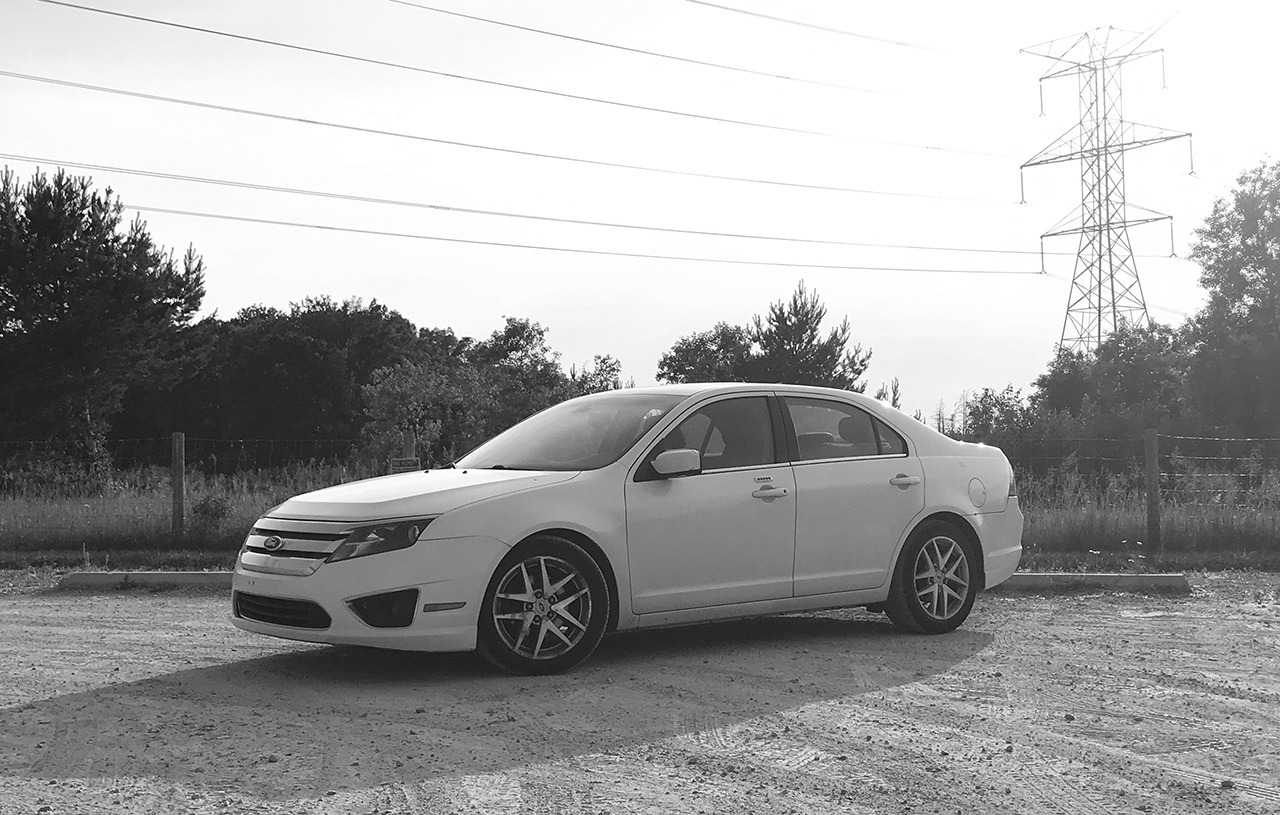
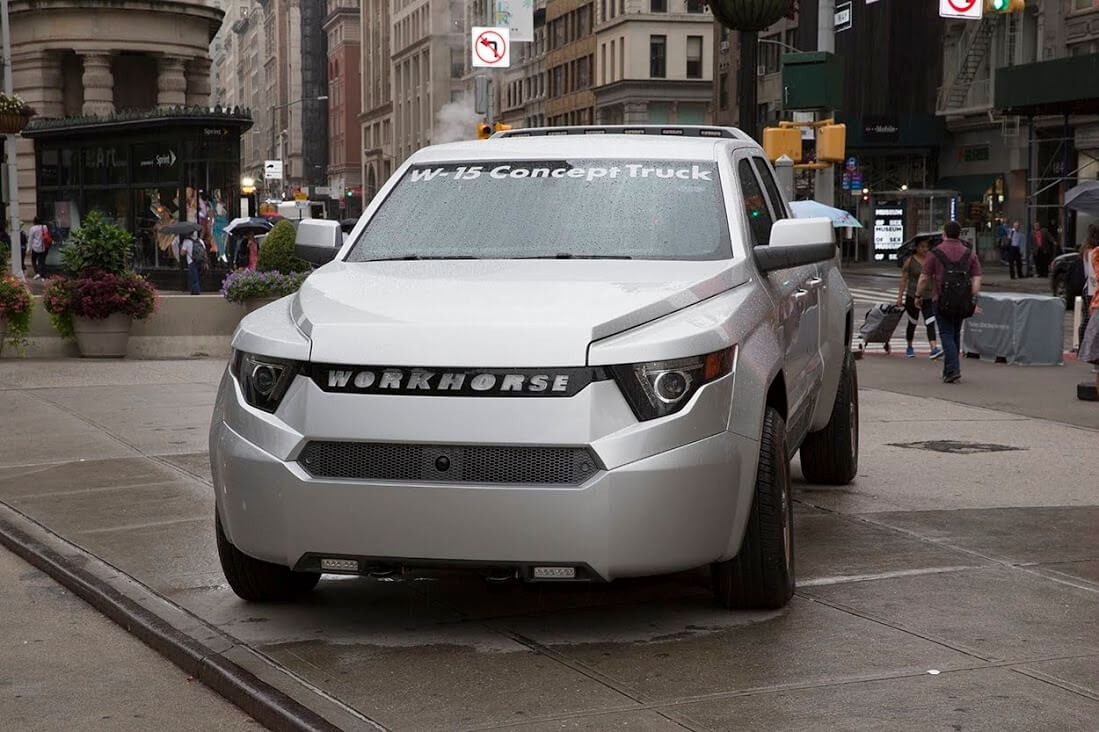


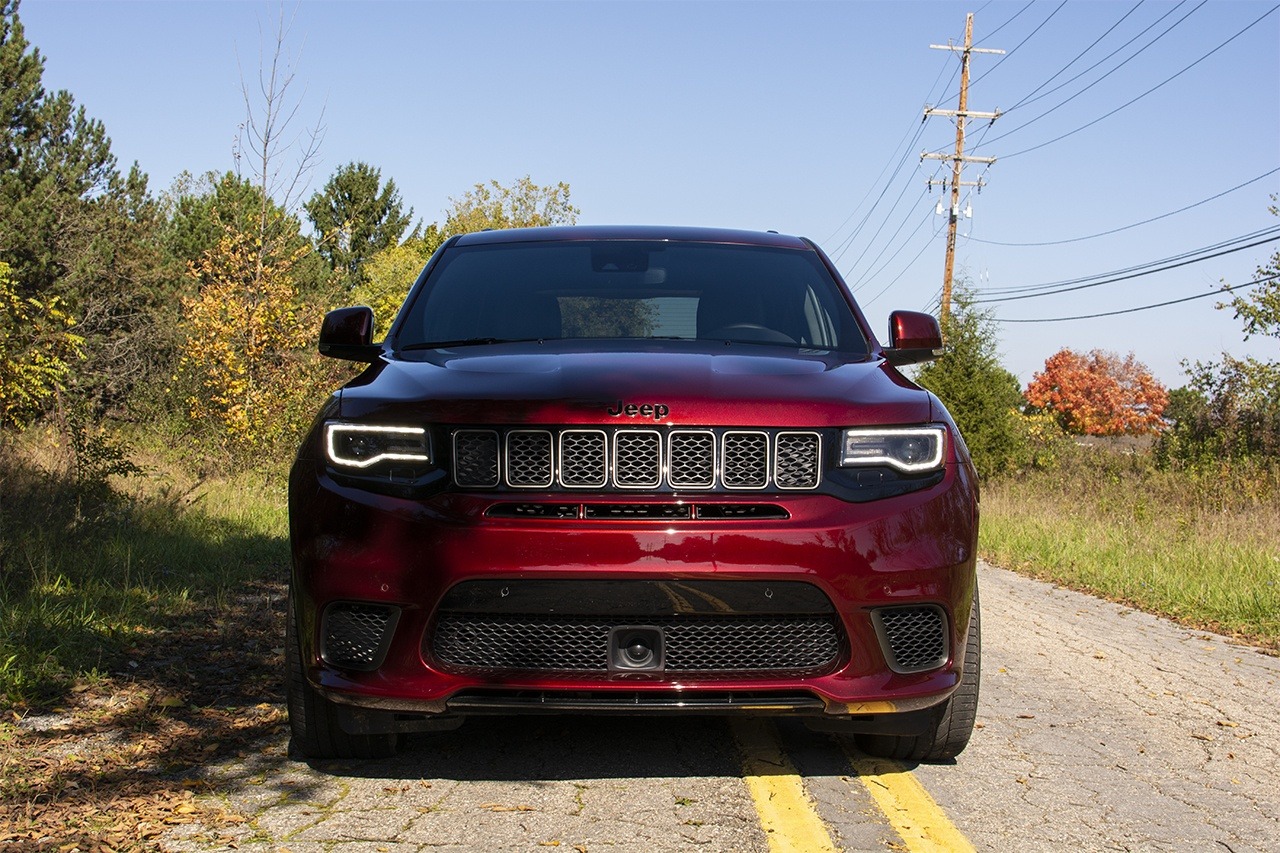
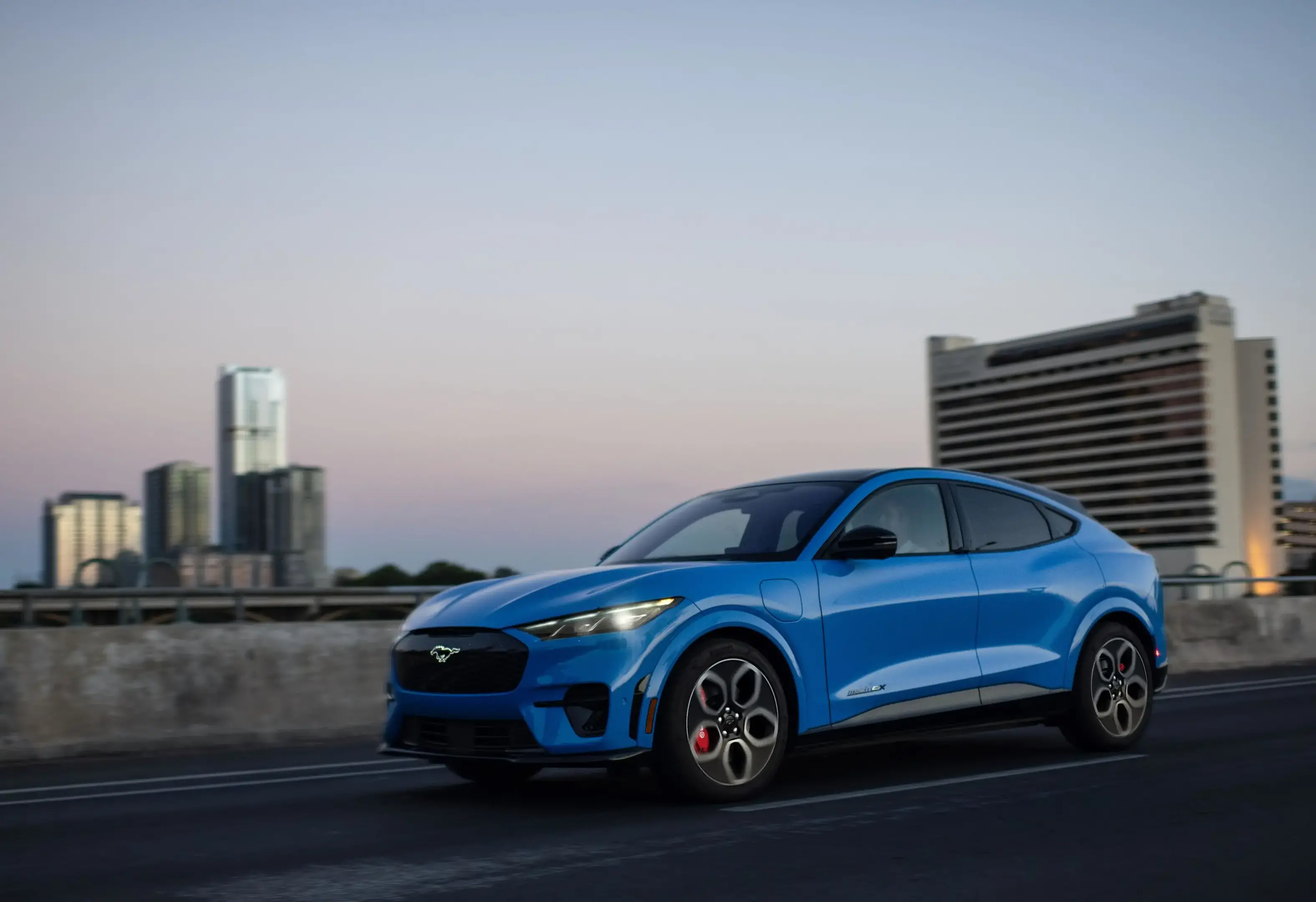
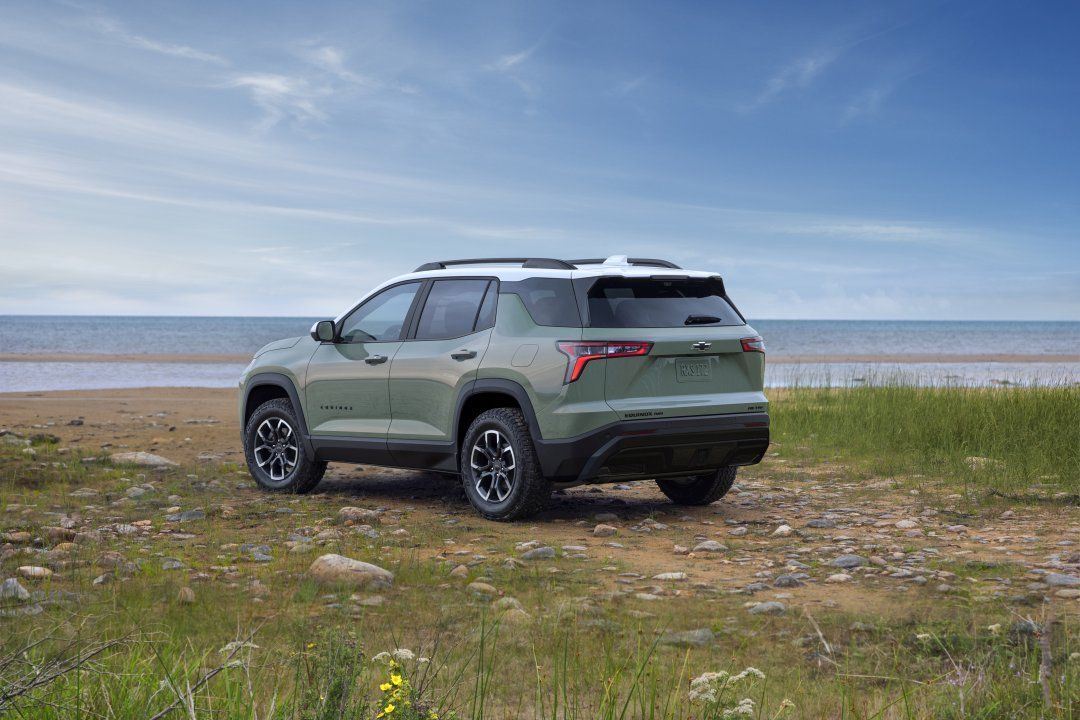
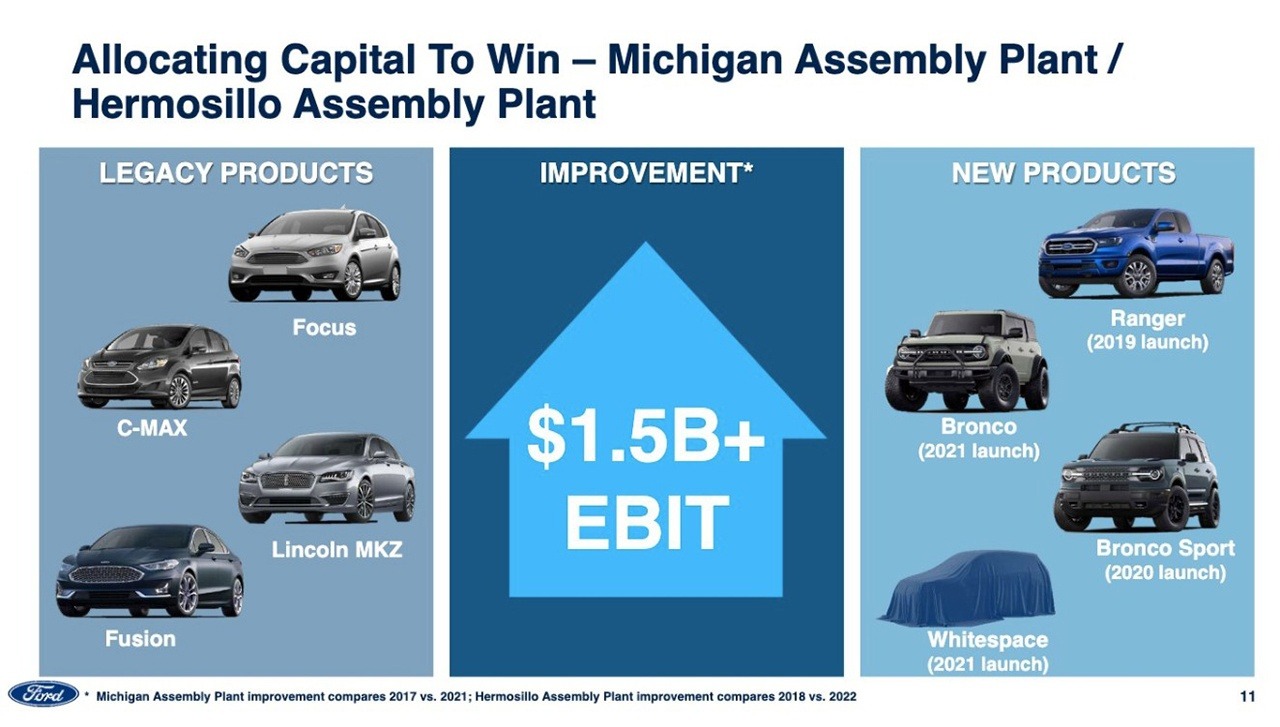
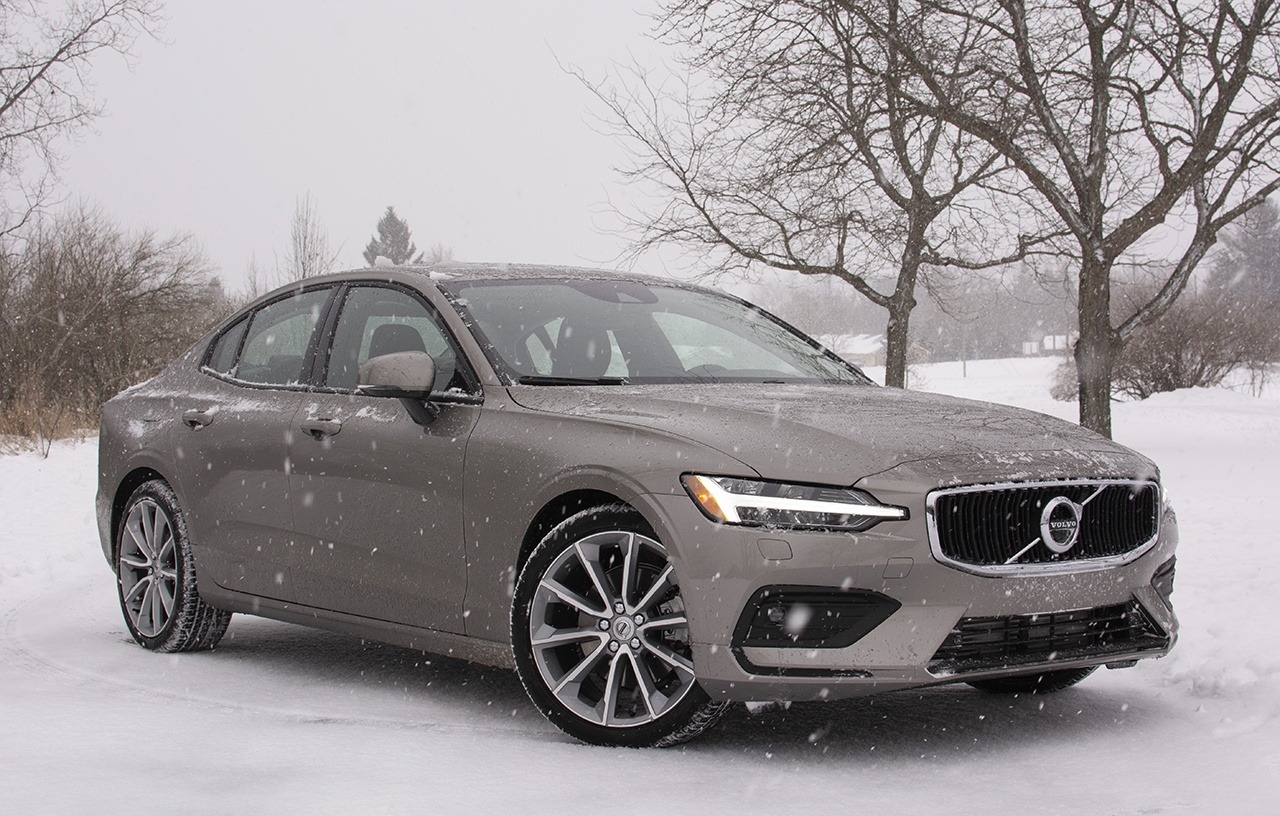
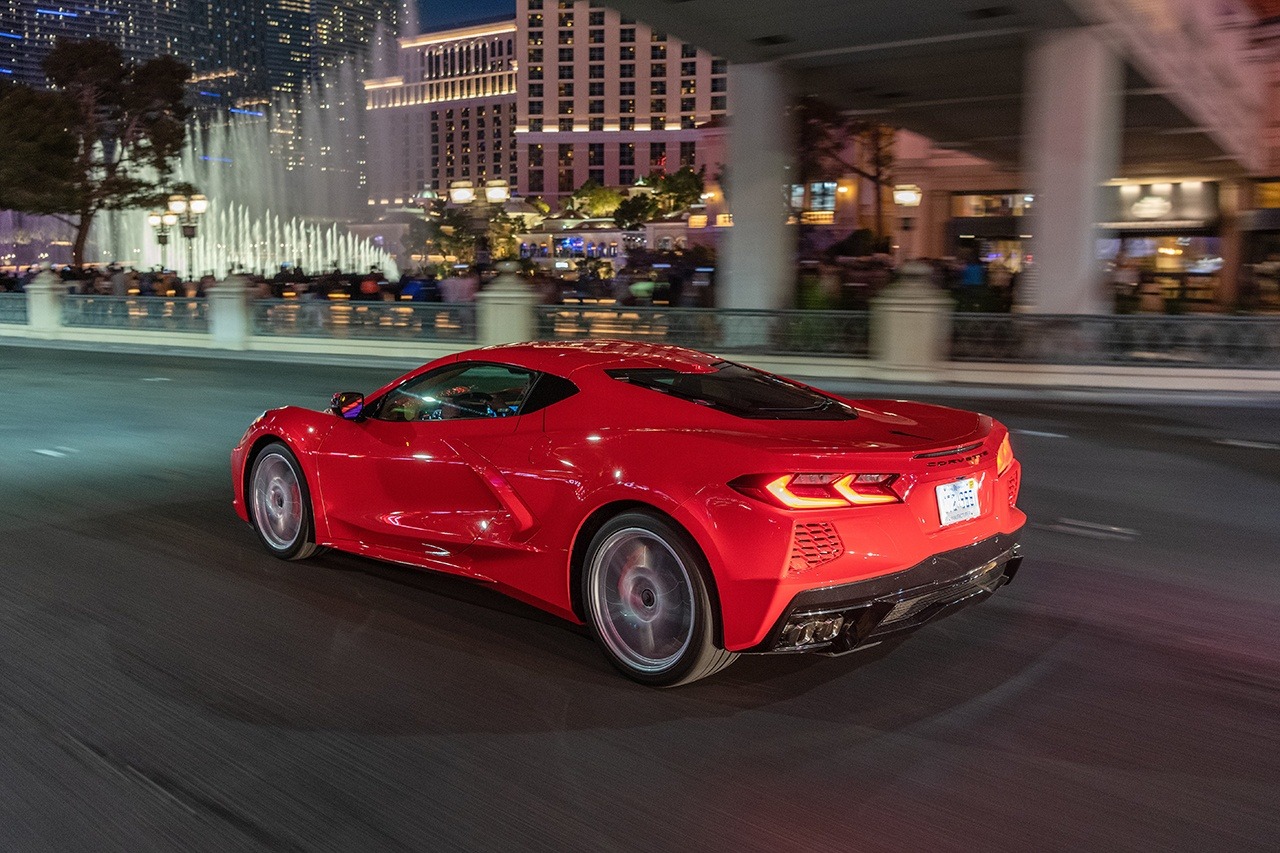
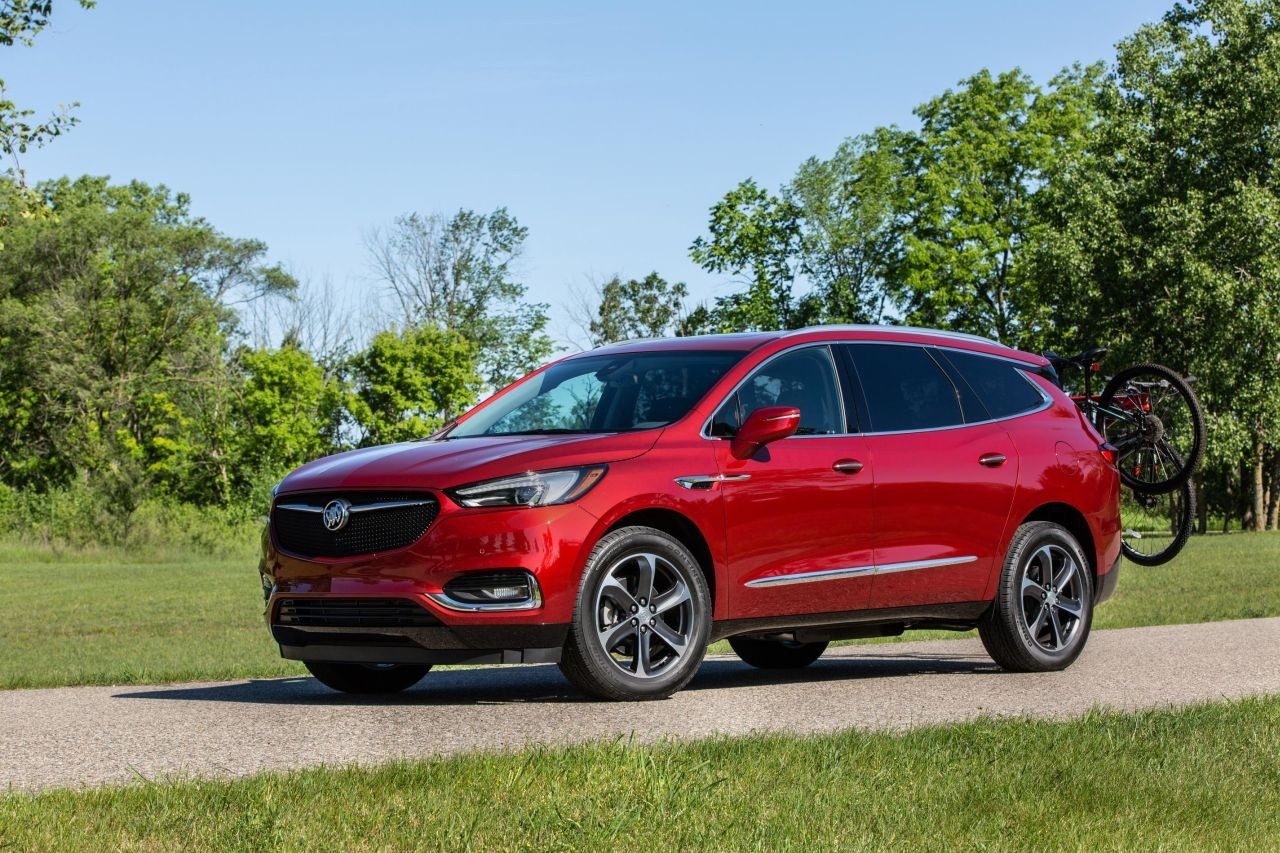
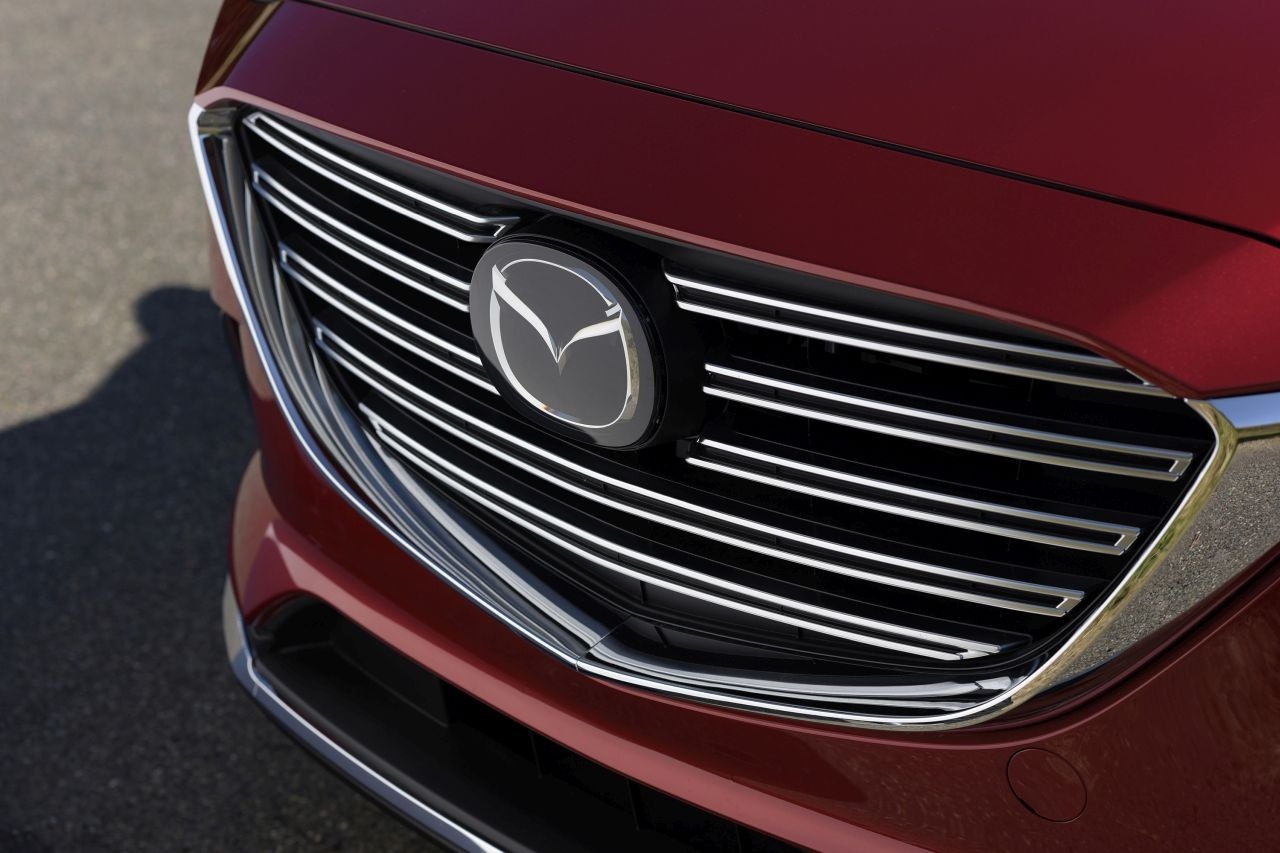
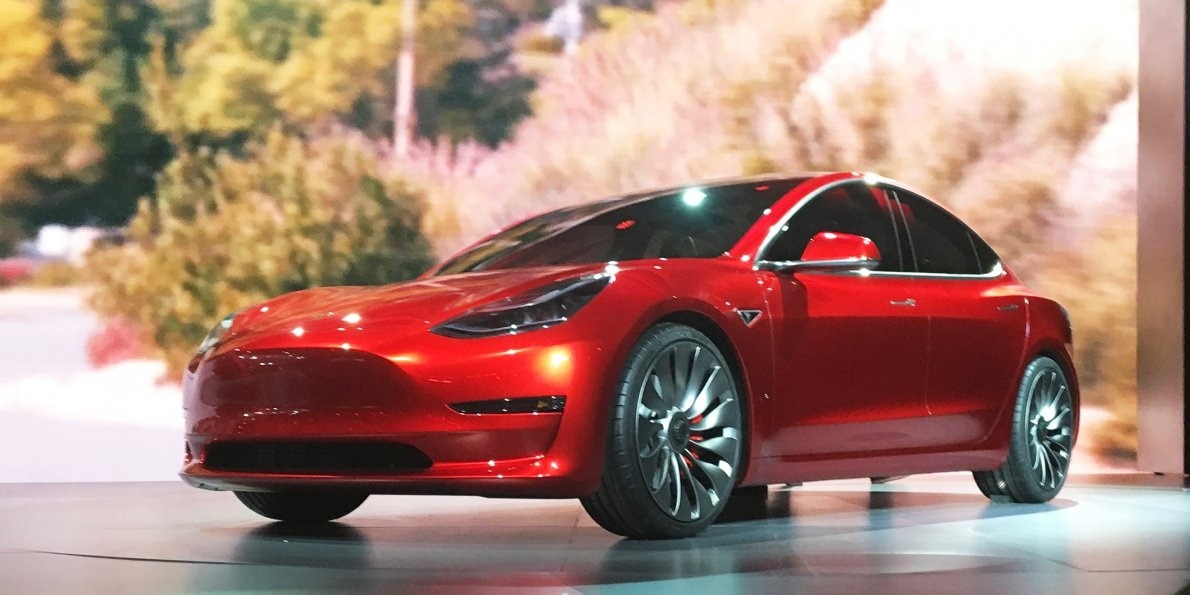
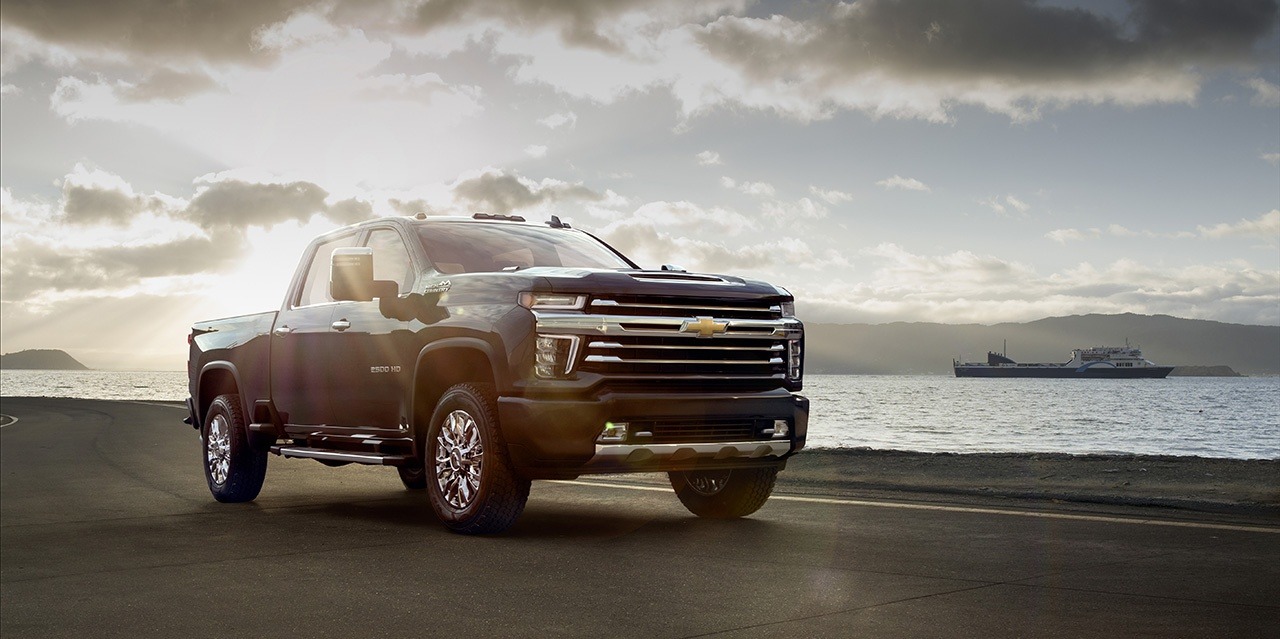
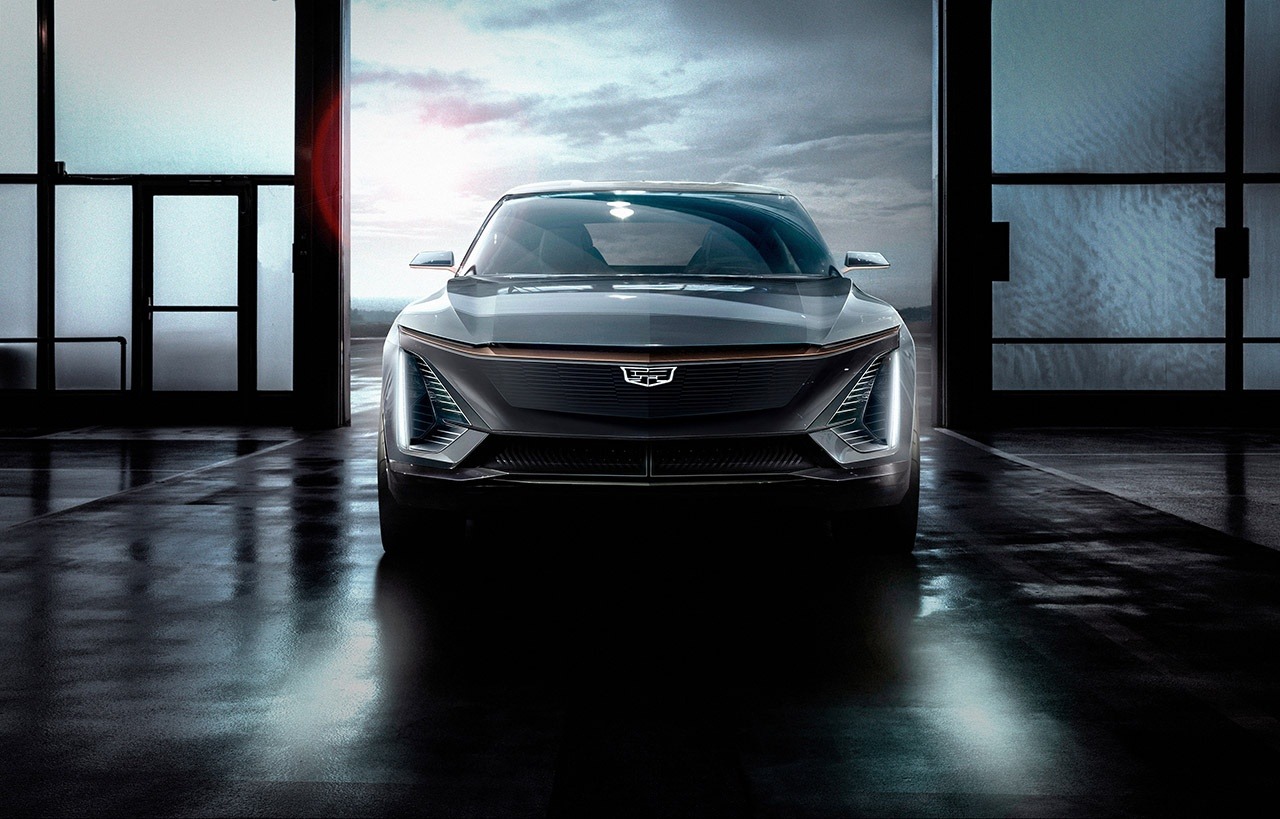
.jpg.7458570fe8ed0fe1531ecddc7695f811.jpg)
